DEAN BLANDINO ON REPLAY




OUR TEACHER SHORTAGE




DEAN BLANDINO ON REPLAY












PRESSURE POINTS











LISTENING TO COACHES P.56 BOUNCE BACK YOU ARE THERE




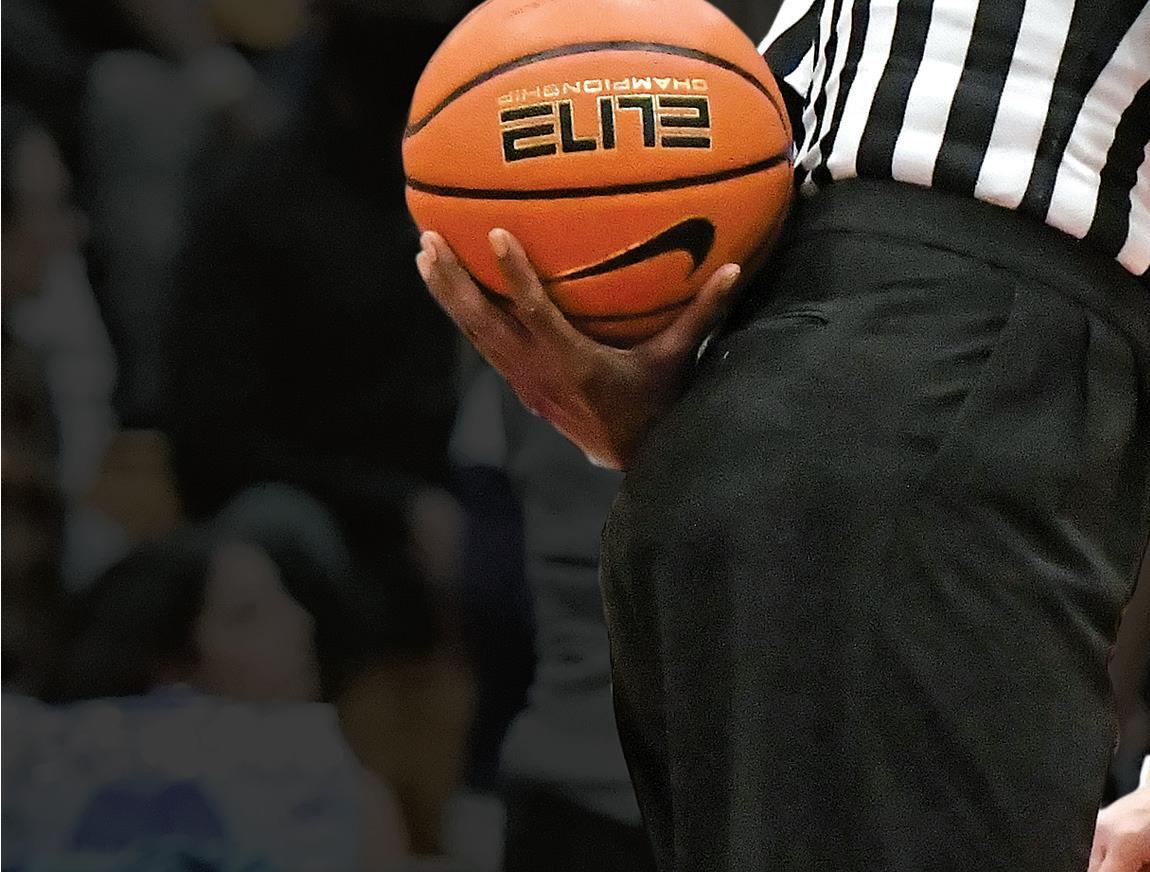


Meet The Sergeant. This roll-top carry is your do-all, go-anywhere duffel. Its water repellent fabric makes The Sergeant a perfect choice for going to and from the dual meet, workout, or even a weekend getaway!




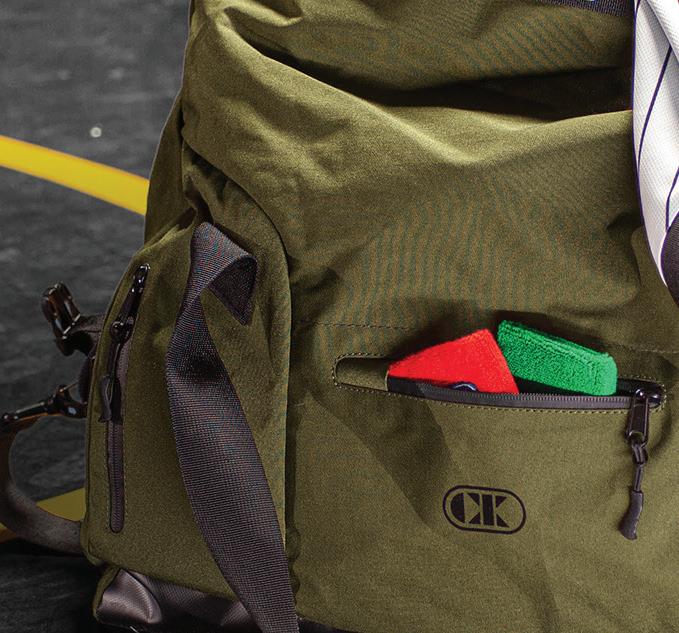



WATERPROOF SEALED ZIPPERS
























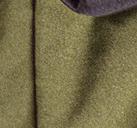

























INTERIOR SHOE COMPARTMENT







 LARGE ROLL TOP OPENING HEAVY DUTY STRAPS
LARGE ROLL TOP OPENING HEAVY DUTY STRAPS
24 WHERE HAVE ALL THE TEACHERS GONE?
Once a mainstay of the officiating ranks, educators have become scarcer.
36 Q&A: DEAN BLANDINO

Fox Sports analyst discusses the current philosophies, rules and concepts governing instant replay in college football.
56 WORK THROUGH THE NOISE
Officiating veterans discuss techniques for improving our work in the pressure cooker.
76 YOU ARE THERE: BOUNCE BACK
NFL crew correctly sorts out one-in-a-million field goal.
Age: 54
Occupation: Coordinator, Quality Compliance/Quality Assurance for major dietary supplement company
Officiating experience: High school basketball official for 16 years. Officiated two CIF Southern Section finals, six L.A. City Section finals, three regional finals and two state championships.

SPORTS
16 BASEBALL Stop It Right Now? Not Every Infraction Leads to an Immediate Dead Ball; Little Things, Big Consequences; Sell It as a Safe; Infield In ... And So Are U Too
40 BASKETBALL
Offensive Offenses: Don’t Let Ballhandlers Skate on Illegal Contact; Teammates Fightning ... Now What?; Develop Report Rapport
42 SOCCER
Lone Ranger: NFHS Rules Accord Special Attention to the Goalkeeper; Up for Grabs; When Good Is Not Good Enough
48 SOFTBALL
Two for One: Know How to Enforce Double Base Rules; USA Softball Tweaks Rules; Triple Duty; Wedge Work 60 FOOTBALL

Try Angle: When the Correct Position Isn’t the Best Position; Hold on There! We Ain’t Quite Done Just Yet; Pre-Snap Routine Is Habit Forming
68 VOLLEYBALL Know When to Hold ’Em: How to Properly Assess Sanction Cards; Out of Play?; Keep Your Eye on the Ball
78 ALL SPORTS
Lend Them Your Ears: The Art of Listening to Coaches; Tricks to Avoid Getting Sick; Feel the Joy of Officiating
4 PUBLISHER’S MEMO Taking Better Care of Us
10 THE GAG RULE
Letters: Technology Run Amok, Five More?; Give Us a Break; Say What?
12 THE NEWS
Pro Football Hall of Fame
Referee McNally Dies at 97; MLB Sees Wave of Umpire Retirements
40 GETTING IT RIGHT
Prong’s Passion; Brown’s Jersey Retired; For Love of the Game
74 PROFILES
Officiating Pair Cops Postseason Honor; Putting the Scholar in Scholar-
Athlete; Early Start Led to a Long Career
82 FOR THE RECORD 2023 FIFA World Cup final officials
84 LAW
Officiating the Game — and the Bleachers, Redux; Unruly Spectators Dealt With by Rule
85 CLASSIFIEDS Camps/Clinics/Schools; Equipment/Apparel;


Leadership Resources
86 LAST CALL
One-Game Umpire: One day, no umpire showed up. ... “How hard could this be?” I thought. “I referee soccer games.”
FOR MORE, GO TO
Watch the video at referee.com/pubmemo
Six years ago in this very space, I wrote a column giving a thumbnail rendering of our officiating environment. I had a tough time with that Memo. As I have now reread it, I felt a need to bring it forward this month. As it turns out, regrettably, very little editing was necessary.
As I rock back in my chair and ponder the past 47 years, it seems to me that on net, our working environment isn’t better than it was, and it would not be unreasonable to make the case it is worse. These words are still painful to write. In my role, certainly the expectation would be that I, more than most others, would be offering positive words here.
Yes, I have witnessed several positive changes in officiating. But I have also been forcibly immersed into the troubling waters of officiating today: the incessant questioning of our competency; the lack of incidentrelated visible support from governing authorities and assigning agencies; the personal attacks and physical violence, including death threats, by fanatics that reach far beyond the athletic milieu; the emphasis to turn sports into spectacle, with the attendant impact on us; the deification of technology; and finally, the crushing shortage of sports officials that has yet to abate.
I ask myself: What can I say to give us a vision to hope for, a strategy to strive for and a tactical plan to work at? Allow me the following.
First, I think we need to agree we will be unable to change the expectations of those who use our services. We need to accept what they expect. It ain’t fair, it ain’t especially reasonable and it ain’t going to change. Let’s get over it. With this as the down payment, we then need to invest in ourselves to manage those expectations and the inevitability of their scurrilous and patently unfair impacts. What should be the form of that investment? How do we take better care of us?
Let’s start with a six-word memoir from Jerry Markbreit: “All my best
friends are officials.” Yeah, we make close and long-lasting friends as officials. We count on each other during a contest, and often we come to rely on each other well beyond that field of battle. We build a sense of community. We have a sense of pride not really understood by non-practitioners. There is the huge online community of sites, message boards and posts for us to visit, to recharge our batteries and get uplift. It has never been easier to connect with each other.
Another way of taking care of us is to “circle of the wagons” when fate intrudes. This magazine publishes so many of those stories — of officials getting support from other officials during a tough time, be it officiatingrelated or just personal. And how about we make extra effort to support the local associations that mean so much to our industry?
Our investment portfolio needs to include a “mutual fund” made up of “stocks” that celebrate officiating. We do not do enough of this. We need to better enjoy each other’s successes. We know what that success smells and looks like. Others don’t. When we see it, we need to say it and say it loud: I am a referee, and I am proud.
Now, to a bit of battle-ready advice: If we intend to be effective and to also enjoy this business, as sports turns loud, unforgiving and vindictive, we need to double-down on a few things. Toughen up. Officiating isn’t for the faint of heart. We need mental toughness and an iron will. The assignments won’t get any easier later. We need to keep our heads down but our antennas up. We need to better understand when to talk and when to shut up. When in doubt, choose the latter.
What we are facing is daunting. Relying on others to make our world better is hope, but that isn’t a strategy. We can take care of most of our needs ourselves. Let’s get on with it.
Chief Strategy Of cer/Publisher
Barry Mano
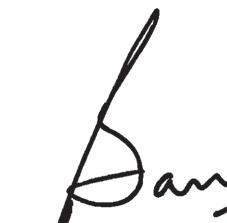
Chief Operating Of cer/Executive Editor
Bill Topp
Chief Marketing Of cer
Jim Arehart
Chief Business Development Of cer
Ken Koester
Managing Editor
Brent Killackey
Assistant Managing Editor
Julie Sternberg
Senior Editor
Jeffrey Stern

Associate Editors
Brad Tittrington
Scott Tittrington
Assistant Editor
Joe Jarosz
Copy Editor
Jean Mano
Director of Design, Digital Media and Branding

Ross Bray
Publication Design Manager

Matt Bowen
Graphic Designer
Dustin Brown
Video Coordinator
Mike Dougherty
Comptroller
Marylou Clayton
Data Analyst/Ful llment Manager
Judy Ball
Marketing Manager
Michelle Murray
Director of Administration and Sales Support
Cory Ludwin
Of ce Administrator
Garrett Randall
Client Services Support Specialists
Lisa Burchell
Sierra Miramontes
Trina Cotton
Editorial Contributors
Jon Bible, Mark Bradley, George Demetriou, Alan Goldberger, Judson Howard, Peter Jackel, Luke Modrovsky, Tim Sloan, Steven L. Tietz
These organizations offer ongoing assistance to Referee: Collegiate Commissioners Association, MLB, MLS, NBA, NCAA, NFHS, NISOA, NFL, NHL, Minor League Baseball Umpire Development and U.S. Soccer. Their input is appreciated.
Contributing Photographers
Ralph Echtinaw, Dale Garvey, Carin Goodall-Gosnell, Bill Greenblatt, Jann Hendry, Jack Kapenstein, Ken Kassens, Bob Messina, Bill Nichols, Ted Oppegard, Heston Quan, Dean Reid, VIP
Editorial Board Mark Baltz, Jeff Cluff, Ben Glass, Reggie Greenwood, Tony Haire, John O’Neill, George Toliver, Ellen Townsend
Advertising 2017 Lathrop Ave., Racine, WI 53405 Phone: 262-632-8855
advertising@referee.com
REFEREE (ISSN 0733+1436) is published monthly, $46.95 per year in U.S., $81.95 in Canada, Mexico and foreign countries, by Referee Enterprises, Inc., 2017 Lathrop Ave., Racine, WI
















At a referee development camp that I attended, the camp director began with a single question: “Who is your agent?”
After a period of silence that seemed to last forever, he answered his own question with one word: “You.”

As odd as it may seem, you are your own agent. You are not like professional athletes whose agent makes or negotiates many decisions for them. It is your responsibility to create your own schedule, be in demand and prove that you can do the job. You are responsible for the number and level of games you work. In fact, if you want to become successful as an official, it is crucial to understand that you are responsible for almost everything that happens to you.
However, as the late philosopher Jim Rohn once said, “When you’re playing the game, it’s hard to think of everything.” You need some help. Maybe you need a mentor, or maybe you just need someone in your corner to get your foot in the door. That is where the assigner comes into play. Two roles. One of the interesting things about sports officials is that we have the dual role of athlete and agent. On one hand, we are responsible for performing at our very best each and every game we
work. On the other hand, we must also make sure that we have games to work in the first place. Having a solid relationship with your assigner is perhaps one of the best things you can do to advance your officiating career. It can ensure that you are always in demand.
The main reason for having a great official-assigner relationship is simple and obvious: You want to work bigger, better games — and more of them. It won’t happen overnight. But with diligence, patience and hard work, you can get there.
Officials are considered to be “free agents.” You can only eat what you kill. In the entrepreneurial world, we say that increasing your rewards — in the case of officiating, that is your game count — starts with increasing your value. The more valuable you become as an official, the more games you work, the better games you work and the more satisfied you will be knowing that you are very good at what you do.
What are some ways you can make yourself more valuable to your assigner?
Hard, hard work. I know it’s cliché, but it’s true. Hard work will get you noticed not only by assigners, but by coaches and other officials. You make yourself desirable as
someone other officials want to work with and that assigners want to hire. Simply put, if you are not seen as a hard worker, it will be harder for you to convince your assigner that you are willing to work bigger and better games.
Assigners are not in the business of gambling. Their jobs depend on the quality of officials they send to games. They want to know that the crew they put out on the court or field will get the job done.
Coaches do take notice of hardworking officials, and they may actually tell assigners what a good job you did. That will definitely separate you from the officials who get little to no positive feedback at all.

Work with the rookie. Assigners are always looking for more experienced officials to work with new officials. You can make your assigner’s job so much easier — and enhance your schedule — by offering to work games with a rookie or a less experienced official. Veteran officials are accustomed to working with other veterans. We all like working with people we already know. But if you work with someone new to you, you may find you’ve found another official you trust and with whom you feel comfortable working.
Take the game nobody wants. That might mean doing the Sunday
(Sports Officials Security Program)
$6 million General Liability Coverage

Excess coverage for claims for bodily injury, property damage and personal and advertising injury (defined as slander or libel) up to $6 million per occurrence general liability limit with a personal aggregate of $14 million.
Assault-Related $15,500 Coverage
Provides coverage for certain legal fees and medical expenses and game fee losses resulting from injuries suffered when an official is the victim of an assault and/or battery by a spectator, fan or participant while officiating.
Up to $100,000 coverage for claims involving a challenged game call which resulted in a claimed financial loss or a suit against an assigner by a disgruntled official.
Referee Digital Magazine
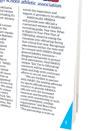
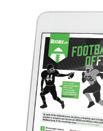
Allows you access to a digital customized MHSAA-version of Referee magazine to read wherever you’re on the go. MHSAA NASO members will receive exclusive MHSAA content through the digital magazine. Referee is the number one source of information for sports officials, written by officials. Each issue includes news columns and journalof-record reports and deep-coverage sport-specific sections complete with rule interpretations and caseplays.

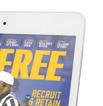

Referee Magazine (NASO Print Edition)
MHSAA members have the option to upgrade to the print version of the magazine, delivered to your mailbox every month. 84 pages of in-depth feature stories as only Referee can report them.

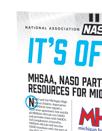
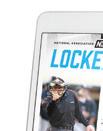


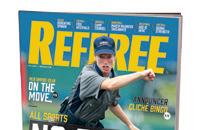
It’s Official Newsletter









Monthly 16-page newsletter providing association news, information, caseplays and educational product discounts.


Marriott VIP Card
Provides discounted rates at Marriott & Starwoodbranded hotels within the US and Canada, subject to availability.













With the VIP card, NASO members may receive a room rate of up to 25 percent off the regular price at participating hotels where space is available. The Athletic VIP card must be shown at check-in.
Registration Discount to The Sports Officiating Summit Members only registration discounts.
Ump-Attire.com
10% discounts
Member Information & Consultation Program (MICP)
LockerRoom
NASO LockerRoom
Online newsletter includes latest news on NASO, officiating techniques and philosophy.




Interactive Sport Quizzes
Online access to sport quizzes that will help you improve your knowledge of the rules.
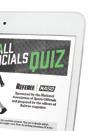
Officiating Resources
Special Members-only buying discounts on Referee and NASO publications. Savings up to 20%.
Provides help when you need to sort out an officiating related issue, includes both free information and free consultation with a knowledgeable person.
Address:
Phone:


Web:


Email:










2017 Lathrop Ave Racine, WI 53405
262-632-5448
naso.org
naso@naso.org
NASO covers common gaps in other officiating insurances, protecting you when other officiating coverages come up short.
morning game, the game on what was supposed to be on your night off, or the one between cellardwellers that won’t show up on the 10 p.m. news.
Our local association has the “Fireman Award” for the official who accepts the most lastminute game turnbacks. Making your assigner’s job easier will increase your value as an official tremendously.
Keep up your availability. Keep your schedule up to date on a regular basis. Turn in all your paperwork on time. When you accept a game, keep it. One of the easiest ways to annoy your assigner is to constantly decline games they offer you because you fail to block your schedule. If you are constantly wondering why you aren’t getting games, that may be the reason why.
One of the logistics coordinators for our development program loves to use the term “low maintenance.” That means keeping things simple: Review your schedule regularly, accept games that are offered and move on. Be low maintenance, and the rest will seem to take care of itself.
Network at local meetings. Introduce yourself to the assigners. Talk to the officials who work at the level you want to work. Demonstrate to them that you are willing to work hard and are open to learning from each game you officiate. Don’t be pushy with them, but show them you are ambitious and ready for whatever game you accept.
And finally, remember that the bridge between you and your games is your assigner. Treat him or her with the same courtesy you would treat your family members. According to Dale Carnegie’s book How to Win Friends and Influence People, 85 percent of success or failure in any field comes from communication and dealing with other people.
Understanding that one principle will propel you forward more than you can imagine, no matter what you do in life — because you are your own agent in officiating and in life.
Officials must be decisionmakers versus reactors. Officials are trained to make decisions based on plays and not just be reactors to the action. Rely and lean on your experiences and training to execute proper judgment on plays. Rules knowledge and familiarity to having seen a play or situation before helps to make good quality decisions. In football, there are many times officials must decide whether or not to throw a flag on a particular play. Knowing what effect the potential flag has on the play is part of that decision-making process. For example, an official must determine if a player is holding his opponent or if the blocked player can fight through the contact, as well as whether the action has a material effect on the play. Is an advantage being gained?
In soccer, the striker has the ball along the wing, beats a defender, is turning the corner to the goal and is inside the penalty area when a defender comes in to make a tackle on the ball. The tackler is very close to committing a foul. Everyone looks to the referee to make a decision on the play. Is the tackle legal and a no-call correct? Or is the tackle a foul resulting in a penalty kick giving the attacking team a chance to tie the game, forcing the overtime shootout?
In that situation it is easy to react — to empathize with the team that has worked to tie the game. A reactor may just go with a penalty kick because he or she is caught up in the emotion of the game. However, an official is there to make a ruling on the play. Officials have the training and ability to put aside the emotion and bias of the moment to make an accurate decision. Volleyball officials have many different decision-making processes to go through in each rally. They must determine if the play at the net is legal and whether the net is contacted, for example. Is there prolonged contact with a ball or is it legal? Officials should not react to a play that looks unusual, but instead use their training and rules knowledge to determine a fault.
Like volleyball, basketball officials have decisions to make on every play. Foul? Violation? Some of the best decisions officials make are no-calls. Is that spin move traveling or not? Did the established pivot foot return to the floor before the shot attempt or pass?
If so, it’s traveling. Be an accurate decision-maker and don’t let crowd or coach reaction sway you.
Decision-making involves more than just the plays in the game. Many game management situations involve decision-making. Players and coaches howling from a dugout present issues for umpiring crews. A decision-maker deals with the issue before it becomes an actual problem. A reactor lets the chattering continue, does nothing about it and before long has seen the issue build to an unmanageable level. Use your training and experience to make adequate decisions about the events that occur in your games and matches. Do not be influenced or judge a play by a reaction, whether anticipating a play or being influenced by the external noise.
quick tipOfficiating education starts with the rules. Missed judgment calls can sometimes be excused, however there is no excuse for misapplication of the rules. Reading the rulebook can be daunting, but there are additional ways to tackle it. Immediately after reading each rule and subsection, imagine a related play and visualize applying the rule. Then write down quiz questions related to the rule and the play. That will re-enforce the rule in your head and you will have a handy quiz for later review. You should have your casebook handy when studying as well. After you have jotted down your quiz questions, look up that same rule application in your casebook and read through it, making adjustments as needed.

Privacy is a hot issue in today’s world and officials need to be especially vigilant in protecting theirs. What personal information should you give, if any? To whom?
Nothing like that friendly coach strolling over before a contest and just wanting “to get to know you.” In most cases, it’s no big deal to answer some routine questions before the game. Keep it short and professional. Don’t volunteer anything and don’t fudge about your experience because a coach can verify information you give.
Certainly it depends on the questions, but there is going to be enough going on once the game starts, so you don’t want to start off on the wrong foot by telling a coach you would prefer not to talk to him or her. If you encounter a chatty coach, the conversation likely won’t involve any requests for your phone number. The best action is to move to another spot and find something to do.
Appearances won’t be good if you are talking to any coach for an extended period of time. And how about the friendly, caring fan that stops by your location before a contest and says hi and wants to know your name? At the most, just tell what association or conferences you are from. Hopefully that will make the fan go away.
In the heat of the contest, all of a sudden the coach has forgotten your name and wants you to remind him or her of it — right now! You are trapped in that sense and you can either pretend, “I can’t hear you,” or provide your name. If the coach has you a little upset, you can always spell it out, nice and slowly with just a touch of sarcasm. Of course, you might kick yourself in the morning if you get overly dramatic with the spelling of your name.
In that situation, providing your name is probably what you need to do. Remember that the coaches will likely have your name anyway, either through the scorebook or a rating card you present before the game. Refusing to identify yourself, or making it difficult for them to do so, makes you look petty.

A situation could also arise when you’re standing near an injured player who is receiving medical attention.
All of a sudden the coach takes that opportunity to let you know he or she has some serious concerns about your work. The coach wants to know your name and where you’re from. In such a situation, it’s best to advise the coach to please take care of the player. Then move away and not get into give out information at that time.
After the game is when the interest in who you are may peak. It’s the rare official who has left every assignment without some verbal shots from someone. If you
have someone following you to your car and asking your name, a short professional response could be, “My name is (your name here). I’m sorry you’re upset.” All the while you are heading to a safe harbor. However, there is no responsibility to provide any personal information outside of who you are. If you feel you need, tell them to contact the school, the league or assigner, whichever is appropriate. There is a formal means to obtain that information and that’s through the assigning entity or governing body.

Barry Mano’s Publisher’s Memo (12/22) correctly points out the hard skills have quickly become recipe for success in of ciating. Of cials are often now judged on how quickly they submit game reports online, how quickly they accept assignments “on the platform” and so on as much as they are on their on eld performance. Their administrative skills mean the difference in a playoff assignment.
One area he did not address is the technology and the skills needed to operate these technologies has changed who is attracted to and who is recruited to of ciate at all levels. And in some cases, I believe this shift to “hard skills” has become a barrier to entry for some aspiring of cials. This focus on the use of technology of all types is probably adding to the shortage of of cials as well.
Technology is transforming both off- eld and on eld duties of all of cials. It is also shaping how fans watch and consume games. And one result is the increase of controversial calls (as seen through the fans’ and commentators’ eyes) because video technology is used to make a ruling.
The unfortunate fact of the matter is that everyone involved in a game — including fans — are using rudimentary communication skills that contribute to the decline of the quality of sports at all levels. I was involved in a game recently where members of the crew spoke about penalties in acronyms — DPI, IBL, etc. That shorthand is not helping any of cial communicate clearly.
Technology is a tool of game management, it is not a game management system. Mano is correct — it is the soft, human, communication skills that make the true difference in game management.
Peter Shafer Lutherville, Md.I enjoyed the article “Give Me Five” in the 12/22 edition which quoted ve rules identi ed by Marcus Aurelius. Those ancient rules are all stated in the negative, e.g. “Do not do this, etc.” Stated in the af rmative, the ve rules are: Be diligent, Be neutral, Be articulate, Concentrate and, last but not least, Party!
The professional cornhole world has been rocked by a cheating scandal. Top-ranked doubles team Mark Richards and Philip Lopez were accused of using illegal beanbags during the 2022 American Cornhole League World Championships. Devon Harbaugh led a formal complaint, claiming the opponents were using beanbags that were too thin. Of cials inspected all of the beanbags being used and it turned out all of them — even the ones Harbaugh was using — were illegal. Competition continued with the inspected bags.


SOURCE: FOX NEWS
Dallas Cowboys owner Jerry Jones dressed up as a blind referee — striped shirt, dark glasses and cane — for Halloween. The costume drew the attention (and the ire) of of cials as well as an advocacy group for the visually impaired. “He does have blind Cowboys fans,” said Chris Danielsen, director of the National Federation of the Blind. “They show up at games and put on headsets or listen on the radio. It may be something for him to think about.”
SOURCE: FOX NEWS
When Jeff Sill, Ventura, Calif., gets thirsty, he won’t settle for a 12-ounce bottle of water. He goes for the extralarge economy size. Actually, it’s just a stadium worker lugging a bottle for a water cooler to one of the dugouts during a playoff game.
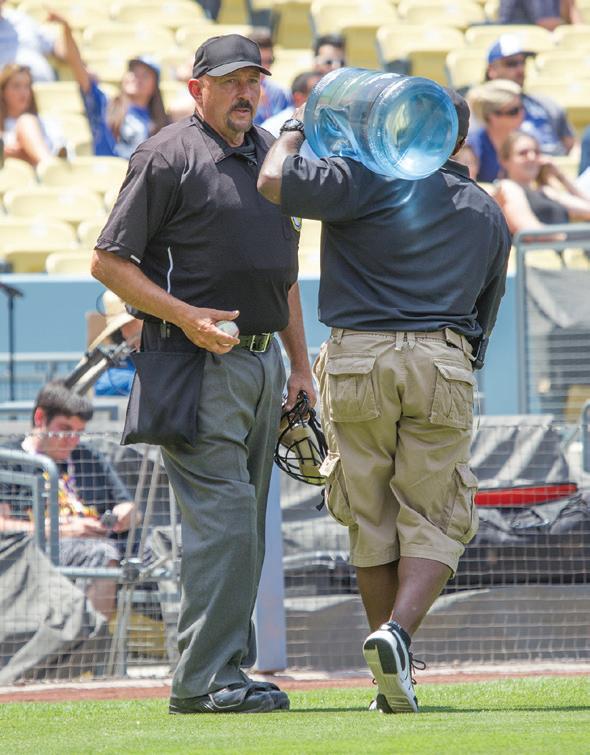
Does it help or harm officiating when TV commercials feature elements of officiating, often poking fun at the situations for comedic effect?
SOURCE: REFEREE SURVEY OF 49 OFFICIALS


NEWTOWN, Pa. —
Art McNally, often referred to as “The Father of Modern Officiating,” died Jan. 1 at a hospital near his home in Pennsylvania. He was 97. On Aug 6, 2022, McNally became the first on-field official inducted into the Pro Football Hall of Fame.
“Art McNally was an extraordinary man, the epitome of integrity and class,” NFL Commissioner Roger Goodell said in a written statement. “Throughout his distinguished officiating career, he earned the eternal respect of the entire football community. Fittingly, he was the first game official enshrined in the Pro Football Hall of Fame in Canton, Ohio. But more importantly, he was a Hall of Fame person in absolutely every way. Our thoughts go out to his wife, Sharon; his children, Marybeth, Tom and Michael; and his grandchildren.”
McNally joined the NFL in 1959 as a field judge before moving to the referee position in 1960. He worked on the field until he was hired as the NFL’s supervisor of officials in 1968. He is credited with bringing technology to NFL officiating, including introducing film study and instant replay. The development of his department eventually led to his directing five people who coordinated a staff of 112 game officials and

A 16-year-old student from Excel High School in Boston is facing a misdemeanor charge of assault and battery after police say he punched a referee in the face during a Dec. 28, 2022, game at Cohasset High School. In the wake of the attack, the gym was cleared and the game was canceled. News reports said the referee did not require medical
were responsible for the scouting, screening, hiring and grading of crews for each NFL game.
In speaking to the Associated Press about McNally’s induction into the Pro Football Hall of Fame, retired NFL referee Ed Hochuli said, “There have been some incredible officials along the way who can make a great argument they ought to be in the Hall of Fame. But none of the officials would disagree that if there’s only one or if there is a first, Art McNally should be the guy.”
McNally retired from the NFL in 1991 and became supervisor of officials for the World League of American Football in 1992. He remained a consultant to the NFL through 1994, and in 1995 returned to the league office as an assistant supervisor of officiating until 2007. He remained an observer of NFL games through 2015, working with officials on a weekly basis.
McNally was the inaugural recipient of the officiating industry’s highest honor, the Gold Whistle Award, which was presented to him by NASO in 1988.
Since 2002, the NFL annually has given an award bearing McNally’s name to an NFL game official who exhibits “exemplary professionalism, leadership and commitment to sportsmanship” on and off the field. The officiating command center at NFL headquarters also bears his name.
attention. One witness told Fox News the player punched the referee after thinking he was charged with another foul, but the referee had called the opposing team for traveling. Because the student is a minor, his name was not released. He was scheduled to appear in Quincy Juvenile Court. In a statement, the Massachusetts Interscholastic Athletic Association condemned violence and physical anger in
NEW YORK — There will be 10 new MLB umpires joining the staff in 2023 after a slew of veterans turned in their retirement papers at the end of this past season.
The departing umpires include seven crew chiefs: Ted Barrett (25 years of MLB service time), Greg Gibson (23 years), Tom Hallion (29 years), Sam Holbrook (21.5 years), Jerry Meals (24 years), Jim Reynolds (22.5 years) and Bill Welke (22.5 years). Also retiring are Marty Foster (23 years), Paul Nauert (21.5 years) and Tim Timmons (22.5 years).
Collectively, the group of retiring umpires worked 18 World Series. Barrett worked the most World Series — five — during his years on the major league staff. Holbrook worked three World Series; Hallion, Meals and Reynolds each worked two. Gibson, Nauert, Timmons and Welke each worked one.
“I’m so grateful to have the career that I did and to be a part of baseball history,” Barrett told ESPN. “I’m incredibly proud of the crews that I worked with and everything baseball provided for me. For all of us.”
During a mid-October See “MLB Retirements” p.14
sports, stating such behaviors “have no place on our athletic elds, courts or hockey rinks.”
The North Carolina High School Athletic Association’s board of directors approved a 10 percent increase in per-game fees for all sports, rounded to the nearest dollar. The raise, which took effect Jan. 1., came
after an ad hoc subcommittee took an in-depth look at the state of high school of ciating. The board also eliminated the policy of paying less per game for a doubleheader than a single game. Administrators also pledged to review compensation every other year. Subcommittee Chairperson Steve Schwartz, who is an of cial, told the board that as many as 800 high school basketball of cials could have
07/30-08/01
The 2023 Sports Officiating Summit will be in Southern California this year and theme is all about sportsmanship. You won’t want to miss the cutting edge discussion focused on real solutions. What is the officials role? How does poor sporting behavior impact our games? How does it impact our industry? Survey after survey confirms that sportsmanship issues are at the heart of the critical officiating shortage in our nation.


More than 500 officiating industry leaders from all sports and all levels of competition will be on hand. If you care about the future of sports officiating, then you should be in Riverside this summer. Let’s gather – let’s talk.



LUBBOCK, Texas — In late December, the College Baseball Hall of Fame announced its Class of 2022. Among the 10 inductees selected was longtime umpire Jim Garman, who made eight appearances in the NCAA Division I College World Series.
“I am humbled and honored to be a part of it,” Garman said.
Garman joins Bill Almon, Roger Cador, Casey Close, Ken Dugan, Condredge Halloway, Andy Lopez, Art Mazmanian, Ken Ritter and Rickie Weeks in the 2022 class.
Garman said he knew there was a chance he’d be inducted after he was nominated, and that chance became a reality when Craig Ramsey, the College Baseball Foundation board chairman, called to congratulate him on his induction.
Garman was a postseason regular during his 40-year career as an umpire in the Pac-12, Big 12, Big West and Western Athletic conferences. He made it to Omaha eight times (1987, 1988, 1993, 1997, 2002, 2005, 2008 and 2011) and also worked 34 Division I Regionals and 15 Division I Super Regionals. He also served as the Western Regional coordinator for the National Umpire Improvement Program during his tenure.
Outside of college baseball,
chosen to not make themselves available Jan. 1-14 if pay was not increased. In addition to recommending the pay increase, the ad hoc subcommittee also recommended doubling down on penalties for poor sportsmanship whether it involved players, coaches or fans.
Jeff Cooney, the supervisor of football officials for the Patriot League and Ivy League, retired
Garman worked the 1992 Summer Olympics in Barcelona, Spain, the 1988 Junior World Championships, the 1990 World Championships and five years in professional baseball (1977-81), making it to the Double-A level.
“It’s those World Series moments and the guys I worked with that stand out,” Garman said as he reflected on what those years spent in uniform meant to him. “There isn’t one moment in particular that stands out, it’s a culmination of everything.”
The members were inducted into the Hall of Fame as part of the College Baseball Night of Champions celebration held Feb. 3 in Omaha, Neb., site of the College World Series. This year’s event returned to in-person as the last two years were held virtually due to the COVID-19 pandemic.
“This class checks all the boxes … it is an accomplished list,” Mike Gustafson, president and CEO of the National College Baseball Hall of Fame, said in a statement.
Other umpires who have been inducted into the College Baseball Hall of Fame include Dick Runchey (2011), Rich Fetchiet (2012), Dale Williams (2013), Henry “Hank” Rountree (2014), John Magnusson (2015), Gus Steiner (2016), Jon Bible (2019), Randy Christal (2020) and Dave Yeast (2021).

from the position at the end of 2022. Cooney was hired in 2019 when the leagues moved to a six-conference officiating alliance that also includes the American Athletic Conference, Atlantic Coast Conference, Big South and Colonial Athletic Association.
“Jeff has been a valuable resource for our coaches, student-athletes, officials and staff regarding rules changes and instant replay,” said Patriot League Commissioner Jennifer Heppel. “He will be missed not
MLB Retirements continued from p.12
broadcast, Hallion told WHASAM radio of Louisville, Ky., where Hallion resides, that he worked his final game in Cincinnati.
“Did my last game which was nice,” Hallion said. “Had my whole family up for the game. It was a little emotional. A couple tears came to my eyes. But as I walked off the field, a couple players came over and said, ‘Hey, congratulations and good luck.’ And then my … longtime friend and partner for years, Phil Cuzzi, came over and hugged me. We both cried. It was kinda like this was it; this was the end. It was weird, but I’m very excited about moving forward.
“It’s time to call it an end,” Hallion said.
Hallion was crew chief on the 2021 World Series and may have thought about retiring after that season. His interview with a Kentucky radio station just before the World Series left that impression, but he came back for one more season.
Gibson’s retirement was reported in the 1/23 issue.
“For me, it was time,” Gibson said. “The day I know I can’t physically perform the job, I was getting to that point. I need to get out of the way and let someone else have the job.”
only within the Patriot League but throughout college football for his contributions during his accomplished career.”
Cooney served as an on-field official for 35 years, including 25 seasons of collegiate experience with 10 years in the Football Bowl Subdivision (FBS) and nine years in the Football Championship Subdivision (FCS). He was assigned to FCS Playoff games from 2002 through 2011, including the 2011 FCS National Championship Game.
Steve Smoger, a Hall of Fame boxing referee who worked more than 200 title fights, died Dec. 19 from an undisclosed illness. While widely reported he was 72, one boxing commissioner insisted Smoger was born in 1943, which would make him 79.He was inducted into the International Boxing Hall of Fame in 2015.
SOURCES: THE PATRIOT LEDGER, THE JOURNAL NOW, THE PATRIOT LEAGUE, FOX NEWS, BOXING NEWS ONLINE
RENO, Nevada — Mills Lane, the hall of fame boxing referee whose assignments were interrupted by earchomping, a wayward skydiver and a heavyweight having a nervous breakdown, died at his home on Dec. 6, 2022. He was 85.

Lane had been incapacitated since suffering a stroke in spring 2002. It left him partially paralyzed and virtually unable to speak.
“The past 20 years after the stroke were pretty tough, to be honest,” Lane’s son Terry said. “My mom took care of him since the stroke; he never spent one night in a nursing home. I don’t know if Dec. 6 is my dad’s date of death or a new life for her.”
Lane’s career in boxing began after he joined the Marines in 1956. After being defeated in the U.S. Olympic trials in 1960, he turned pro the next year. He lost his first bout, then rattled off 10 straight wins — six by knockout — before retiring in 1967.
Upon graduating from law school at the University of Utah in 1970, he returned to the ring as a referee and worked his first title fight the following year. He became one of the most skilled and famous referees, working bouts featuring Muhammad Ali, Thomas Hearns, Julio Cesar Chavez and Mike Tyson.
On Nov. 6, 1993, a bout between Evander Holyfield and Riddick Bowe was interrupted when a man used his powered paraglider to fly into the arena, eventually crashing into the side of the ring. Four years later, Oliver McCall began acting strangely during his fight with Lennox Lewis. He threw few punches, walked around the ring crying and refused orders from his corner. Fifty-five seconds into the fifth round, Mills waved off the fight and declared Lewis the winner.
But Lane’s most memorable decision was disqualifying Tyson for twice chewing on Holyfield’s ear. The first bite resulted in Lane taking points away from Tyson. But the second ended the fight.
Lane retired from the ring in 1998, taking his famous phrase, “Let’s get it on!” with him. A former district attorney and judge in Nevada, he appeared on a syndicated television program, “Judge Mills Lane,” from 1998-2001. His image and catchphrase were also used in an adult stopmotion Claymation series, “Celebrity Deathmatch,” that appeared on MTV.
In 2009, Lane received the Gold Whistle Award from NASO. Unable to attend himself, his wife and son accepted the award on his behalf. At
the time of the presentation, Marc Ratner, former Nevada State Athletic Commission executive director and now vice president of regulatory affairs with the Ultimate Fighting Championship, said, “When he walked into the ring, he brought a big-time feel to the event when he said, ‘Let’s get it on!’ He was a very special referee. He was always on time, always neatly dressed and the respect and command he had in the ring was extraordinary.”
CONTRIBUTING SOURCE: ESPN
of men’s officials development at US Lacrosse. Recognizing the sport had served as one of his first antidepressants, he decided to share his story with US Lacrosse and the media.
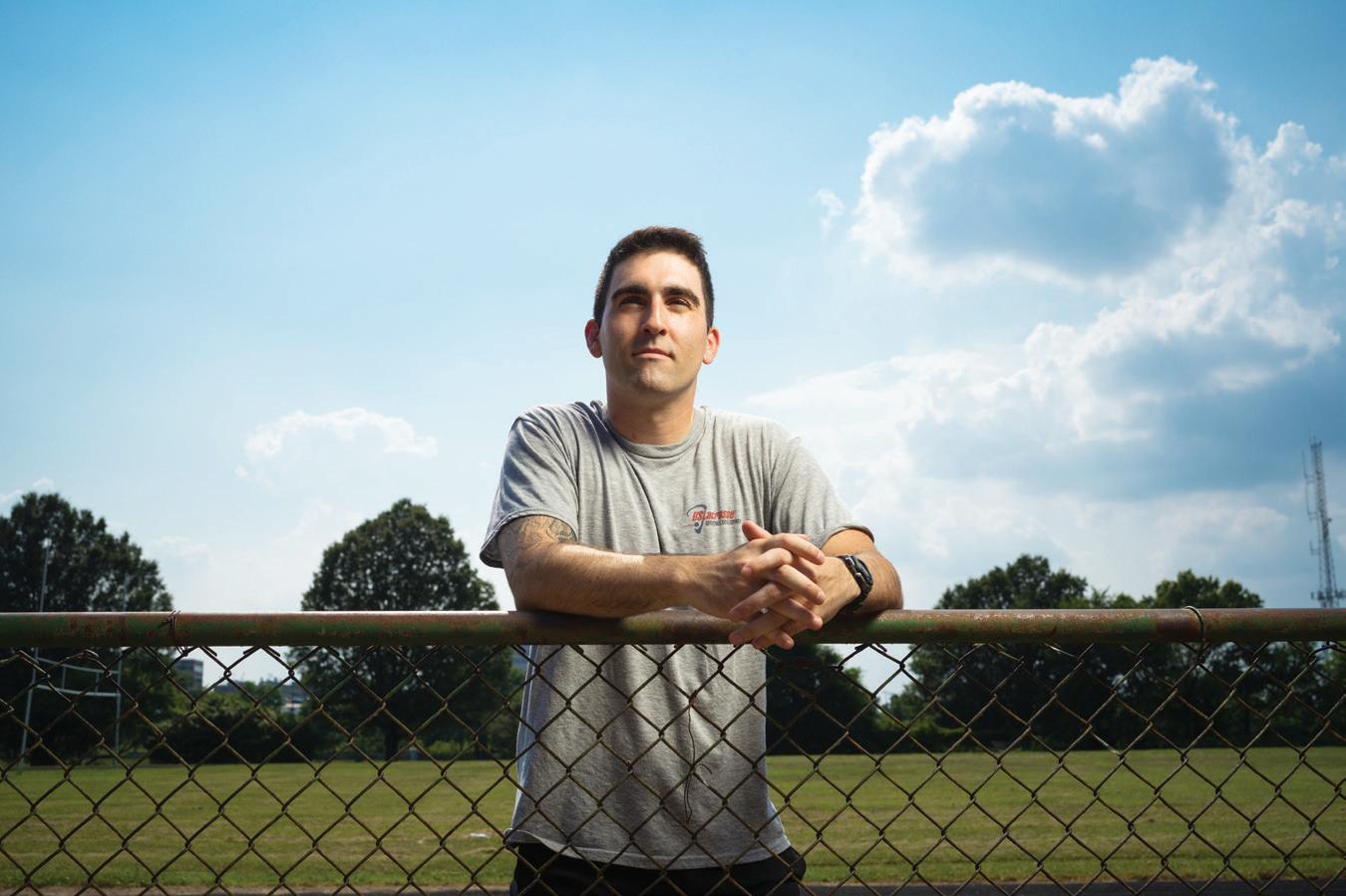
“I’m at peace with the part of me that hates myself,” said Corsetti about agreeing to tell his story. “I have more agency over it than I ever did. It just took a hell of a lot of ups and downs to get to that point.”
piece, Corsetti shared that he first began struggling with mental illness at the age of 15 — “I started getting these whispers, odd thoughts that floated by the edges of my mind. I’d wake up and think, ‘Why bother?’” — and he first contemplated taking his own life in April 2008 following a disappointing performance while playing lacrosse during his senior year at Pace Academy in Atlanta.
Over the course of the next 12 years, he would incur three serious attempts on his life and several hospitalizations.
While battling his mental health demons, Corsetti became a respected high school and college lacrosse official, as well as the manager
The story included several photos, including one of a tattoo of a semi-colon on Corsetti’s right wrist, signifying his connection to Project Semicolon, a suicide prevention organization. The semicolon represents a sentence an author could have ended but chose to continue — or a life someone has chosen to continue when facing thoughts of suicide.
Following the story’s printing in the two publications, Corsetti accepted an invitation to speak at the 2019 NASO Sports Officiating Summit in Spokane, Wash., where his 15-minute address as part of the Referee Voices series left a lasting impact on those in attendance.
Corsetti is survived by his fiancée, Lisa; his parents, Mary Jo and Lou; and his sister, Caitlin Corsetti Luscre.
Play is stopped when the ball becomes immediately dead by rule. It is obvious the ball becomes dead when a foul is not caught or a batted, thrown or pitched ball goes out of play; however, there are many other acts that also cause the ball to become immediately dead. The vast majority of those cases involve interference by the offense, but there are several situations for which a cookie-cutter approach does not
work. Umpires must recognize those acts and know how to react. Except where noted, the material applies equally to NFHS, NCAA and pro rules.
The umpire. When an umpire does more than make a call, it could be an immediate dead ball, with or without consequences; a delayed dead ball; or the ball simply stays live.
The ball is immediately dead if a fair ball touches an umpire in fair territory before touching an infielder, including the pitcher, or passing
an infielder other than the pitcher. It is interference and the batter is awarded first base; other runners advance only if forced.

However, if a fair ball touches an umpire after having passed an infielder other than the pitcher, or after having touched an infielder, including the pitcher, the ball remains live and in play (NFHS 5-1-1f1; NCAA 6-1h, 6-2f Note; pro 5.06c6).
Play 1: With the bases loaded and one out, B5 hits a line drive past
F5. The fair ball hits the third-base umpire in the foot and deflects to F6. R3 scores, but B5 is thrown out at first. Ruling 1: The ball is live and in play; the run scores and B5 is out.
The ball also remains live and the contact is ignored if a pitch or thrown ball touches an umpire (no possession) (NFHS 3-2-3; NCAA 6-1b, 8-3i; pro 6.01f).
Play 2: B1 swings and misses for strike three. That pitch is missed by F2, and B1 starts for first. The ball strikes the umpire and is easily retrieved. F2 fires to first to retire B1.
Ruling 2: The play stands, B1 is out.
Play 3: R2 attempts to steal third. F2’s throw hits the base umpire.
Ruling 3: The play stands.
Play 4: With runners on first and third and one out, B4 hits a onehopper to short. F6 fires to second to start a double play, but the throw hits the umpire. All runners are safe and R3 scores. Ruling 4: The play stands.
A delayed dead ball occurs when an umpire hinders or impedes the catcher’s throw to prevent a stolen base or pick off a runner (NFHS 5-12c; NCAA 6-3a; pro 6.01f Cmt.). If the throw is prevented or does not retire the runner, interference is called. The ball becomes dead and runners return to their bases occupied at the time of the pitch. However, if the throw retires the runner, the interference is ignored (NFHS 8-4-2h; NCAA 6-3a Note; pro 5.09b4).
Play 5: R1 is attempting to steal second. F2’s arm accidentally strikes
the umpire’s mask. F2 hesitates briefly, then fires to second (a) in time, or (b) not in time to retire the runner. Ruling 5: In (a), the contact is disregarded since the runner was retired. In (b), runners may not advance when the plate umpire interferes with the catcher’s throw. R1 is returned to first.
Play 6: With a runner on first, F2 receives the pitch and pivots to throw behind R1. He steps on the umpire’s foot and throws wildly into right field. R1 advances to second. Ruling 6: The ball is dead and R1 returns. Since F2’s throw did not retire the runner, it is umpire interference.
An example of an immediate dead ball with no consequences is when the umpire hinders the catcher on an attempt to throw the ball back to the pitcher; no runners may advance.
Play 7: With a runner on first, F2’s throwing arm strikes the plate umpire as he is throwing the ball back to F1. The ball rolls toward a dugout. R1 takes off and makes it to second safely. Ruling 7: The ball is dead. Since F2’s throw did not retire the runner, umpire’s interference is ruled and R1 must return.
The catcher. Contact between the catcher and batter-runner on a batted ball can also result in any of three ball statuses: live, dead or delayed dead. If there is contact while the catcher is fielding the ball, there is generally no violation if they are both “where they are supposed to be and doing what they are supposed to do.” Neither interference nor obstruction is called if neither player attempts to alter the play; the contact is considered incidental (NFHS interp.; NCAA 7-11f Exc. 4; pro 6.01a10 Cmt.). Flagrant contact on the part of either player is a violation and the appropriate call, interference or obstruction, should be made.
When a batter-runner and a catcher make contact following a bunt out in front of the plate, the home plate umpire must rule whether incidental contact, interference or obstruction has occurred, and how that ruling determines whether the ball remains live, is an immediate dead ball or is a delayed dead ball.

The percentage of current umpires who joined the MLB staff on a full-time basis prior to the 2000 season.
The percentage of full-time umpires who will have joined the staff since the 2020 season, pending the hiring of 10 new umpires to fill spots opened by recent retirements.

The 2023 NFHS Baseball Casebook contains an error related to an offseason rule change involving jewelry. Caseplay 3.3.1 Situation PP states that upon discovery of a player wearing a class ring, the umpire should direct the player to remove the jewelry and that if the player does not comply, the player is ejected from the contest. The NFHS has acknowledged this is an error, as changes to rules 1-5-12 and 3-3-1d now allow for jewelry to be worn, so long as it is not deemed by an umpire to pose a danger to the player, teammates and opponents.
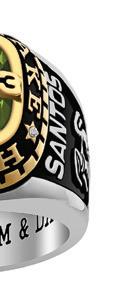






Are you a visual learner? Do you achieve a better understanding of rules and mechanics through the use of artistic aids rather than the written word? If so, High School Baseball Rules Simplified and Illustrated should be a part of your ongoing education. The 222-page manual, produced in partnership with the NFHS, uses PlayPics and MechaniGrams to bring high school baseball rules to life and allow officials to “see” the game. The manual costs $10 and is available at store.referee.com/ baseball.

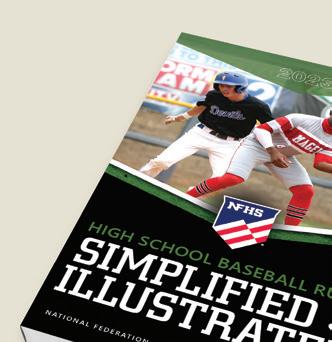

In each question, decide which answer is correct for NFHS, NCAA or pro rules. Solutions: p. 85
1. With the bases loaded and two outs in the bottom of the last inning, the score is tied. B6 is hit by the pitch and awarded first base. R3 legally touches home and scores and B6 legally advances to and touches first. R2 starts toward third but joins the celebration near first before he touches third base.
a. R2 is out for making a travesty of the game and the game is continued.
b. The game is over. The run scores as only B6 needed to go to first and R3 touch home.
c. R2 is out for abandoning his effort to run the bases and the game is continued.
d. R2 is out only if the defense properly appeals R2 missing third base and the game is continued.
2. When a coach physically assists a runner during play:
a. The runner is out and the ball is immediately dead.
b. The runner is out and the ball remains in play. All other play stands.
c. The runner is out and the ball remains in play. All other runners not put out during the play return to their bases at the time of the infraction.
3. The umpires call an infield fly that is intentionally dropped.
a. Call time, the batter is out and all runners are awarded one base.
b. The ball remains live, the batter is out and any runners advance at their own risk.
c. The ball is dead and the batter is awarded first base. Any runners advance one base if forced.
4. If a runner on first who is forced to second interferes with the pivot man at second, interference resulting on a double play is not called unless the defense had a chance to complete a double play.
a. True.
b. False.
If interference is called, the ball is immediately dead. If obstruction is called, play continues in NFHS, but is immediately dead in NCAA and pro because the batter-runner is being played on (NFHS 2-22-1; NCAA 8-2.3e1; pro 6.01h1).
Play 8: B1 chops a ball down the first-base line. F2 starts for the ball as B1 is leaving the batter’s box. B1 collides with F2 from behind. Ruling 8: When the catcher is in the act of fielding a batted ball and a serious collision occurs from behind, the batter is out for interference.
Play 9: Right-handed B1 bunts
the ball down the first-base line. He starts for first as F2 starts to field the ball. They brush shoulders as both proceed toward first. Ruling 9: The play stands. The contact is incidental.
Play 10: B1 tops a ball down the first-base line. He is advancing toward first base while F2 comes up from behind to field the fair ball. F2 inadvertently trips B1, retrieves the ball and tags him. Ruling 10: When the batter-runner is tripped from behind, obstruction should be called. B1 is awarded first base.
George Demetriou, Colorado Springs, Colo., is the state’s rules interpreter.
Newer umpires sometimes think if they master the rules and mechanics and have good judgment their careers will take a steady upward trajectory. There’s more to successful umpiring. Little things I call intangibles can help or ruin us in others’ eyes.
Years ago, a famous athlete made a TV commercial with this line: “Image is everything.” In effect, he said the reality of our proficiency doesn’t matter if people don’t perceive us in a positive light. How true. I’ve known umpires with solid skill sets who never got anywhere because they didn’t come across well. Conversely, others were weak in some areas but managed to create a positive image and got plum assignments and promotions that the first group wanted badly.
A longtime pro/college coach once told me he felt he knew whether an umpire could work by the time he got to the plate for the conference. Such things as physical appearance, body language, eye contact and demeanor told him whether the person was competent or in over their head. Was he wrong on occasion? No doubt. But that didn’t
matter because he thought what he thought. Perception.
I think there’s a presumption for or against us based on intangibles, meaning we will or won’t be assumed to be correct on close pitches or plays. Solid work can, of course, overcome a bad first impression, just as poor work can negate a good one, but I’d rather start on a positive note.
Do you show up at the site at the last minute? There can be circumstances beyond our control, but this sends the message the game is unimportant. Late arrivals also cause coaches consternation because they may be reluctant to let their pitcher begin their pregame routine until they know we’re there. When I had a role that let me poll college coaches about their pet peeves, umpires who arrived late was second behind those who talked too much with their players.
Are you overweight? Is your uniform dirty? Are your pants so tight they get caught on your shinguards when you rise out of your crouch? Does your shirt stick out after two innings? Does your cap have sweat stains? Such things tell the world you can’t get in position or survive on a hot day or are lazy or don’t care.






Play: With a runner on first base, B2 hits a foul fly ball deep down the left-field line. F7 makes the catch and falls into the stands. R1 was beyond second base when the fielder fell into the stands. Ruling: In all codes, R1 is awarded second (award is from time of pitch on an unintentional catch and carry), but if R1 does not tag up at first, he can be retired on a proper appeal. However, in NFHS, R1 cannot legally return to first to tag up because he was on or past a succeeding base when the ball went out of play. In NCAA, R1 can return to first to tag up as long as he is trying to return when the ball became dead. In pro, R1 can return to first and tag up because he did not touch third base, which in this play is considered the “base beyond” or “next base” for R1 determined at the time the ball went out of play (NFHS 8-4-2q; NCAA 8-6a Note 3; pro 5.09c2 AR, MLB Umpire Manual).
Hot Foot
Play: With the bases empty, B1 has a 2-2 count when he swings at and misses a pitch in the dirt. The ball rebounds off F2 and hits B1’s foot as he attempts to advance to first base. Ruling: In NFHS, B1 is only out if he intentionally interferes. In NCAA and pro, interference is called if B1 clearly hinders F2 in his attempt to field the ball. If the pitched ball deflects off the catcher or umpire and subsequently touches the batterrunner, it is not considered interference unless, in the judgment of the umpire, the batter-runner clearly hinders the catcher in his attempt to field the ball regardless the number of outs (NFHS 8-4-1a; NCAA 7-11h; pro 6.01a1).
Undeserved Souvenir
Play: B1 hits a fair ball down the right-field line. A spectator, believing it is a foul ball, picks it up. Ruling: The ball is immediately dead. The umpires will award the number of bases as to nullify the act of interference (NFHS 5-1-1g1; NCAA 6-4a, 8-3n; pro 6.01e).
Do you visit with players and coaches, especially on the home team, when you walk on the field? Walk to the plate stiffly, perhaps with a scowl on your face? During the conference, do you tell off-color jokes or toss your mask on the ground while reviewing the ground rules? Recite the rulebook chapter and verse? If so, you may be viewed as biased, condescending, disinterested, crude, a raw rookie or a rules technician, any one of which may cause you to start the game with two strikes against you.
Do you apply all the rules literally? The game was meant to be played a certain way, and if we don’t learn the advantage-disadvantage philosophy and apply the rules in light of it instead of in a hypertechnical manner, we’ll find ourselves in a world of grief.
Let me briefly mention four umpires who illustrate the importance of perception:
Joe had a wiry physique, moviestar looks and good judgment, mechanics and rules knowledge. But he looked so uptight that he

seemed scared. Coaches, like sharks that smelled blood, gave him so much guff that he eventually quit umpiring.
Tom was the best ball-strike umpire I ever saw but was 100 pounds overweight. Once coaches got to know him they accepted him, but he lost a lot of opportunities because of people’s negative assumptions about him.
Dick had a solid skill set but a Don Rickles-like sense of humor that could be stunning but also off-putting. Verbal jabs that he’d throw at peers, coaches, etc., to be funny, could come across as cruel and cutting, especially if you didn’t know him. Once, he said something during an NCAA tournament that an administrator took the wrong way and that was the last one he worked.
Harry did everything wrong mechanically on the bases and behind the plate and wasn’t swift with the rules, but he had excellent judgment and communication skills and looked like he’d worn a jock (which he had). In the eyes of coaches and people who could help him to advance, the latter outweighed the former so much that he ended up having a stellar college career.
I’m not sure newer umpires always recognize the importance of voice and signals in making calls. Do you raise your fist when an outfielder
catches a ball chest-high, go through gyrations when a runner is out by a step or give the big “strike three” on a swinging strike? If so, you might as well have “Not Ready for Prime Time” stamped on you. Are your signals smooth and fluid or jerky? Is your voice suited to the situation or so loud they can hear you in the next county? You don’t see MLB umpires throwing fits and screaming at the top of their lungs, even on eyelash plays. Everything they do is firm, crisp, but controlled, which projects a “not my first rodeo” image. One can sell a call without being flamboyant; in fact, I think the louder and flashier you are, the less likely you are to be convincing because you can come across as going overboard to mask your uncertainty.
In sum, you need a solid skill set but you must learn how to package it, for perception is more important than reality. Watch how successful umpires look, comport themselves, signal and the like. Experiment; some things you try will look good on you, but others won’t. With careful, objective analysis of yourself and perhaps help from your peers, you’ll hopefully be able to discard the chaff and keep the wheat, which could boost your career.

Jon Bible, Austin, Texas, worked seven NCAA Division I College World Series. In 2019, he was inducted into the National College Baseball Hall of Fame in Lubbock, Texas. *
During a clinic this past summer, a veteran NCAA umpire posed the following philosophical question to me:
“If you don’t have a good look at a tag play and have to make a guess, which way do you guess?”
OK, so let’s start by addressing the first thing many of you are thinking after reading that sentence: “We are never supposed to guess on the field.” That’s a rock-solid philosophy, except for the fact situations occur where we
do not have definite knowledge of what has transpired on a play. And when that happens, like it or not, we have to guess. We are working baseball, not volleyball — there is no provision in any of our rules codes that allows us to call for a replay. We have to make a decision with the information at our disposal.
The key is to make an educated guess and one that does not undercut our credibility as an umpire. Allow me to illustrate using the ongoing discussion that day with my fellow arbiter.
Let’s say you’re working home plate and a tag play develops. Due to the location of the catcher, the runner coming in from third base and the throw, you end up straightlined as the catcher attempts a swipe tag to the back of the baserunner. You have no certainty whether there was a tag before the runner reached home plate. It’s a 50-50 situation. Which way do you rule?
My esteemed colleague’s take? Rule the runner safe. Here’s the philosophy behind doing so.
You make an out call on this play. Video review is available and the offensive team’s head coach asks you to go to replay. The crew does so and there is a great camera angle that shows the catcher’s swipe attempt misses the runner. It’s clear and the crew agrees the call needs to be reversed.
Upon doing so, you as the ruling umpire are likely now going to be in the crosshairs of both coaches. The defensive team coach is not going to be happy the original call was reversed. That’s human sporting nature. However, just as problematic is going to be the thoughts of the offensive coach moving forward during the game. Because while the call reversal went in his favor, here’s what’s running through his head:
“How could you rule there was a tag and an out when you never saw a tag?” No matter how you try to slice it, the review confirms you made a guess on the play, and you guessed wrong.
Now, let’s attack it from the other angle. You make a safe call on this play. The defensive team coach knows he saw a tag from his angle and wants it reviewed. The crew takes a look at the video and it turns out the defensive coach is correct — the catcher’s glove nicks the baserunner’s jersey. It’s enough to reverse the call to an out.
Here comes the offensive coach for an explanation, to which you say: “Coach, from my angle on the field, I could not see a tag. That is why I ruled him safe originally. The video clearly shows there was a tag, necessitating the reversal.”
The offensive coach isn’t going to be happy. Again, human sporting nature. The difference is, you are not having to own up to making a guess about something that did not happen. Instead, you are admitting you did not see something, which is a reality every umpire faces on occasion.
Is it a fine line? Of course. The last thing we want is to have to regularly find a way to parse these types of situations. If we are having
to do so, it probably means we are not doing a very good job with our mechanics in the first place, which is a whole other discussion.
Also open for discussion is the fact many of the umpires reading this will never work a game involving video review. So, what then? The same philosophy should apply. While there may not be a camera to assist, it just may happen that the first-base umpire, with nothing else to look at, had a great view of the play and the tag, and is able to call you and your other partners together to make a crew-saving call. Again, you’d rather have to explain why you couldn’t see something — and your partner could — than explain why something materialized out of thin air.
On those hopefully rare occasions when we do need to flip the coin and make our educated best guess, make the guess that is less likely to cause your credibility to come into question. At the end of the day, it’s better to have them questioning your eyesight than your integrity.
Scott Tittrington is an associate editor at Referee . He umpires college and high school baseball, and officiates college and high school basketball and high school football.
Acommon mechanics and positioning error takes place in the two-person umpiring crew when the infielders move in as part of their pre-pitch positioning to be in place to cut off a potential run from scoring at the plate.
When there is any combination of runners that includes a runner at third base — except when there are runners on first and third — the base umpire, U1, is in the “C” position, between the pitcher’s mound and second base, slightly offset to the shortstop side of the infield. Because of the possibility of a pickoff play at third base in this situation, most base umpires will work
a “deep C” that creates an angle for an open look at the front edge of the third-base bag.
However, U1 is going to have a tough time staking claim to the same real estate if the infield decides to play in, as the “deep C” is in the immediate proximity of where the shortstop will want to set up shop. As such, U1 will often take a few steps backward, even sometimes ending up on the infield dirt, and will give a pre-pitch signal to the plate umpire to indicate a position behind the infielders so that, should the base umpire be struck by a batted ball, the umpiring crew recognizes the ball should remain live.
This is exactly the wrong thing for U1 to do.
As the MechaniGram illustrates, anytime U1 is in the middle of the infield, that umpire has catch/no-catch responsibilities for all line drives hit in the infield except the corner infielders moving back or toward a foul line and the pitcher moving in, left or right. If U1 starts in a position deeper than the two middle infielders, there is no way to see batted balls hit at the feet of the second baseman or shortstop. This creates the unenviable position of making the plate umpire responsible
for these rulings — a ruling PU is otherwise never responsible for — and sets the stage for confusion where a double call is made or, even worse, no call is made.










Instead of moving deeper and creating additional space, U1 must instead move forward and find a spot in the working area that will allow the base umpire to stay clear of any immediate play on a batted ball by a middle infielder, while still allowing for an angle to see these plays being made.

















Can it feel uncomfortable? Yes, especially when a screaming line drive comes up the middle and U1 has to find a way to avoid being hit by the baseball and colliding with a diving shortstop. But with only two sets of eyes on the field, U1 has to trade a little bit of comfort in these scenarios to put the crew in the best possible position for any ensuing action that may occur.




Be prepared for the 2023 season! Your complete guide to the 2023 High School Baseball season includes the latest rules changes explained and simplified, the most up-to-date NFHS Points of Emphasis, Mechanics updates, umpiring tips and strategies, Caseplays with rulings, and test yourself Quiz Questions with answers.







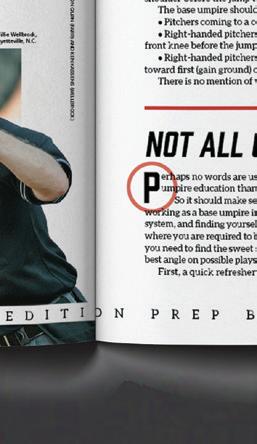

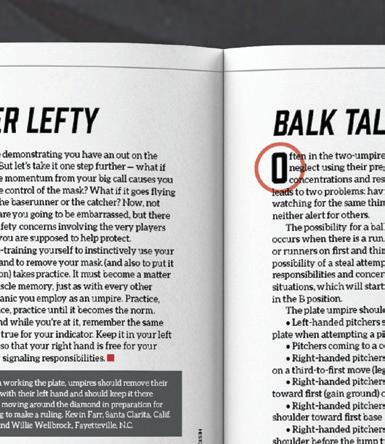


In the past, it wasn’t uncommon to see many teachers swap their grading book for a whistle at the end of the school day, using their classroom management skills in a different school setting — as a sports official.
But in recent decades, the number of educators serving as officials has been on the decline.
According to a 2017 NASO National Officiating Survey, K-12 educators comprised 15.7 percent of the officiating pool. Many administrators in state high school association offices will tell you anecdotally the percentage was much higher just a few decades ago.
But the increased demands for accountability on educators — similar to that of officials, including the pervasive role that social media now plays — are preventing many individuals from considering officiating as an option, according to Jason Nickleby, coordinator of officials for the Minnesota State High School League (MSHSL) and current Big Ten football official.
“High-stakes testing and increased social,


emotional and mental health needs for students takes a toll on teachers and administrators,” Nickleby said. “Taking on additional responsibilities and time to become an official is something that many educators just can’t add to an already full plate.”


As teachers already deal with students in a supervisory role, sports officiating seems to go hand in hand with the profession.
“Teachers certainly have the skill set to become very good officials,” Nickleby said. “They are working with kids, they know how to handle kids and they know how to de-escalate situations. And they seem to have the right temperament. Teachers seem to be ideal.”
But officiating can often be a tough sell.
“The money is not great, and the coaches and spectators are out of control. So how do we convince people it’s worth it? It’s hard without a sales pitch,” said Will Anglin, a math teacher from Dawson County High School, 60 miles north of Atlanta.
Anglin is in his fifth
year officiating Georgia high school football. He also serves as the school’s new varsity girls’ head basketball coach in the winter and head boys’ golf coach in the spring. He said balancing teaching, coaching, working toward a master’s degree, officiating and family is sometimes quite complicated.
“My family is the most important, but with my schedule, they have sacrificed tremendously for me to do what I love,” Anglin said. “I think more teachers don’t officiate because of the time commitment. This leaves little time to spend with family or relax after a hard day’s work.”
The good officials spend countless hours studying film in preparation for their next game, said Anglin, the youngest official — in both age and experience — to work a Georgia High School Association (GHSA) state football championship game in 2020. At the time, he was 25 and in his fourth year of officiating.
“Like many, I thought officials just showed up on Friday nights,” Anglin said. But now he realizes that couldn’t be further from the truth. “For most officials, the season starts in May with study groups, camps and offseason training activities required to officiate on Friday nights. I think a lot of teachers are unwilling to put in the time.”

Nickleby knows first-hand the role and expectations of teachers.

He began his education career as a high school physical education teacher in Minnesota for 10 years, while also officiating. His wife is also a teacher.
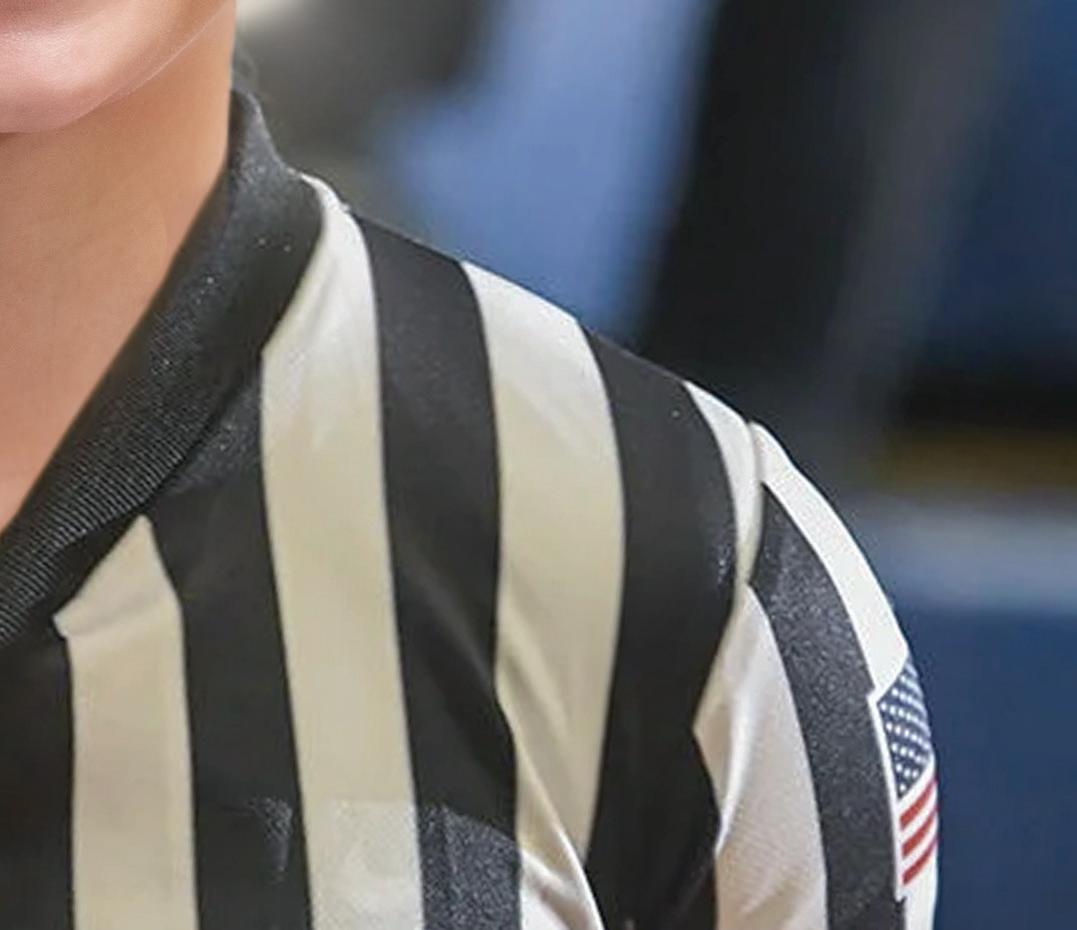
“I think the expectations for teachers have been a lot more challenging. Going to school in the morning, then teaching all day and working a game after school. It’s tough to take on officiating with everything else going on in the schools,” Nickleby said. “They get judged all day by being a teacher. Do they want to be judged again as an official later in the day?”
Teaching is a tough job that requires extra time outside of the work day, said Mike Kolness, superintendent of East Grand Forks Public Schools in northwest Minnesota. He is currently a high school and NCAA Division II women’s basketball official, highlighted by an Elite 8 appearance in 2014. He has officiated D-I basketball and also continues to assign high school games for his officials association.
“You need to have the right type of mindset in order to officiate, and I feel it is very difficult to put in 15-plus-hour days when teaching and officiating,” Kolness said. “Dealing with fans, coaches and player behavior has definitely hurt in that area. I also feel teachers have found other ways to make extra income that may not require as many hours on the road with fewer challenges. There are so many industries that need extra

help, and their compensation level has increased quite a bit due to supply and demand.”
In Washington state, longtime teacher, coach and basketball official Steve Simonson has seen a steady decline in teachers entering the officiating ranks during his nearly 40-year education career.
“I’ll be honest, I think I am one of the old dinosaurs in doing all of these things (teaching, coaching and officiating) the whole time,” said Simonson, a social studies teacher from Cashmere High School in central Washington. “There just seems to be a lot fewer teachers getting into officiating and more responsibility put on them. It’s that time balance. The balance between work, family and time.”
Simonson manages to balance teaching three collegelevel courses to his high school students, coaching football and track, and serving as vice president of the Washington Officials Association. Simonson’s officiating resume includes a number of Washington
Interscholastic Athletic Association (WIAA) basketball tournament appearances as well as formerly officiating college basketball for about 15 years, including at the D-II level for six years.
He said people’s concerns about the reception they’ll receive on the fields and courts makes officiating a tougher sell.
“The No. 1 reason why people don’t want to officiate is they just don’t think they want to take the abuse of what is going on,” Simonson said.
He said it was critically important to work with new officials to mentor and guide them through the avocation’s challenges.
While the number of teachers has declined in the officiating ranks across the country, overall numbers of officials in neighboring Oregon have dropped significantly.
The number of officials has decreased by about 33 percent over the past 10 years, from 3,000 to just over 2,000 officials, according to Jack
In Michigan, recently retired educators from the 2021-22 school year wanting to join the officiating or coaching ranks after finishing their careers in the classroom were sidelined for at least nine months or faced having their pension earnings temporarily suspended.
In late July 2022, Michigan passed into law a bill that was intended to help with the nationwide teaching shortage. In the past, according to state pension regulations, educators who retired would have to wait 30 days before they could work for a state public school, but could not earn more than one-third of their previous salary if they wanted to retain their full pension.
Under new legislation, educators now have to wait at least nine consecutive months after their school termination date, but will have no restrictions on how much they can earn. The change was intended to attract more retirees back to the classroom with the incentive of higher pay, said state school leaders. According to Mark Uyl, executive director of the Michigan High School Athletic Association (MHSAA), extracurricular sports pay was not even part of the conversation.
“In discussions with school district personnel, we are being told there has never been a more difficult time for finding people than today," Uyl said. “All of us are searching
high and low to find coaches for athletic teams, and officials, referees and umpires to administer those games in an orderly and safe way.”
This nine-month waiting period for retiring teachers meant they were not eligible to officiate during the 202223 fall, winter and possibly spring sports seasons. If teachers chose to officiate or coach during this period, their full pension and health care benefits would not kick in until nine months after the culmination of their final season.
“Because of this current reality, we continue to be dumbfounded over the approval of Public Act 184,” Uyl said.
Folliard, executive director of the Oregon Athletic Officials Association (OAOA) and longtime Pac-12 football official for more than 30 years before retiring. He served as the referee and crew chief for the college football national championship game in 2007.
Folliard is trying to reverse the trend in his own state and re-establish a strong base of officials, including those involved in education.
“It’s great to have teachers, especially with their instructional-type skills, but very few teachers are officiating now,” Folliard said. “I’d be surprised if we have more than 100 teachers who are officials. I wish I had the answer of getting more teachers to officiate.”
Karen Beckmann, a high-ranking basketball and volleyball official and physical education teacher at Sauk Rapids-Rice High School in Minnesota, about an hour northwest of Minneapolis, said there is less time available during the day to complete the necessary work needed for teaching.
“More officials, teachers and coaches are stepping away from the field for numerous reasons,” said Beckmann, a former high school head volleyball coach. “Whether due to workload, parents, students or sportsmanship, many good people are leaving the profession to pursue other career options with less stress.”
A Georgia school official expressed concern in his inability to sway his staff to extend their day by working with student-athletes in either an officiating or coaching capacity.
“I would lump it all together and just say it’s been difficult to do the extra things, whether it be officiating or coaching,” said Steven Craft,
director of athletics for the Fulton County School System just outside Atlanta. “We’re fighting that as a whole, across the country, in trying to figure out where the coaches and officials are going to come from. We keep encouraging teachers to get into another setting and build those relationships outside of the classroom setting. Hopefully, we can change that in the future and attract more people. There is definitely a shortage of both. These days it’s hard to find teachers. Period.”
Fulton County schools even added a 25 percent pay supplement for multisport coaches for the 2022-23 school year, above and beyond their normal coaching pay, to help fill their county’s coaching vacancies at 16 high schools, Craft said.
Georgia is also trying to incentivize coaches to officiate. This past July, the GHSA Board of Trustees approved a policy allowing coaches to officiate the same sport in which they currently coach, with some restrictions, said Ernie Yarbrough, associate executive director and coordinator of officials for the GHSA. Coaches can’t officiate their own school or schools within their respective region.

Prior to that change, coaches were not allowed to officiate the same sport in
which they coached, Yarbrough said.
“We feel that will help fill some of the void created by COVID, at least at the subvarsity level where games are scheduled right after the conclusion of the school day,” Yarbrough said.
“I’ve seen there are fewer teacher officials than in the past,” said Nathan Turner, athletics and activities coordinator for Forsyth County Schools in Georgia. “And, while there are still some, I’ve seen a lot more of our officials coming from outside of the educational field.”

This is even with greater flexibility in scheduling, including playing games on days where contests have not typically been scheduled.
“The last two years, our football athletic association has gotten calls as late as Tuesday of that week for the Friday game and moved it to Thursday or Saturday to accommodate the officials,” Turner said.
Turner has had a front-row seat for more than 20 years as an educator, beginning as a teacher and coach, then moving up the ranks as an athletic director, assuming his current role in 2016, overseeing 12 county high schools.
“You’ve seen since COVID the lack of teachers as coaches and officials since 2019,” Turner said. “But we were already seeing that decline before
the pandemic, and it has magnified since then.”
Nickleby is realistic about today’s busy lifestyle and understands why teachers decide not to enter the officiating ranks. Or, if they do, in a decreased role.
“There is a family-work balance here, too,” Nickleby said. “Things come up. You can only commit to so much.”
Anglin admits to making sacrifices, but his passion for the game — and other facets of his life — help him to multi-task during the school year.
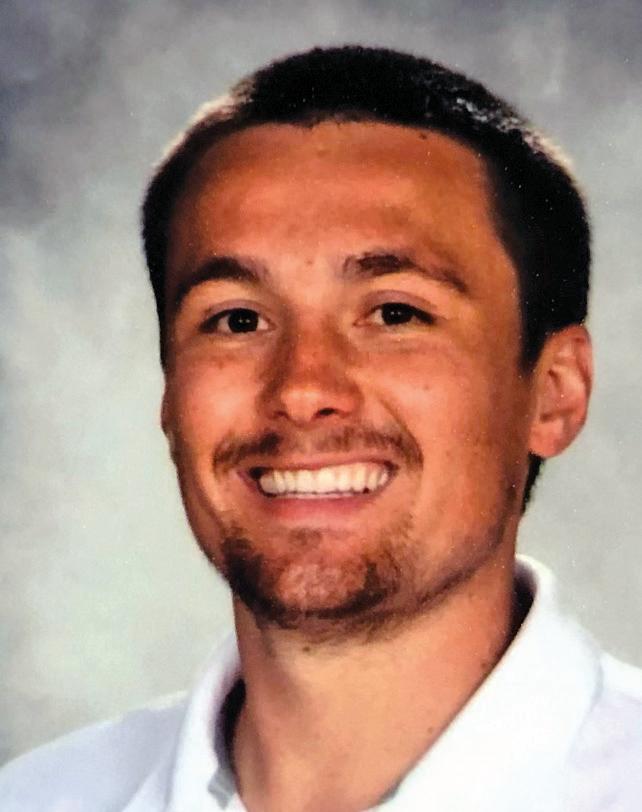
“The biggest thing for me is to live in the moment,” Anglin said. “Whatever I am doing at the moment is the most important, and I am all in. I told myself I would never allow one area of my life to affect the other. If I am teaching, then I am 100 percent committed to teaching. If I am with my family, I am 100 percent committed to spending time with them. This mindset has helped me be successful in every aspect of my life.”
Balancing a schedule is a challenge, but finding balance is possible, said Kevin Kuznia, high school principal and athletic director at Stephen-Argyle Central in northwest Minnesota. He is also a former coach and current multisport official, including an early stint officiating junior college and NAIA football.

Kuznia, who is married with two children, already

“Officials need to hear that support from their principals that they are offering a valuable service to the school and to the community."
JASON NICKLEBY
has a full plate. But, over his 24-year education career in Minnesota, he has learned to balance his workload to fuel his passion in many areas, including the last eight years in his current role as principal and athletic director. In the summer, when many educators recharge their batteries, Kuznia is busy on the farm harvesting wheat and soybeans.
“There are a couple of colleagues in the administrative world who also officiate,” Kuznia said. “One of the strengths many principals have is handling busy schedules and adapting to new challenges. Our schedules tend to follow the students, so that does make it easier to officiate high school contests.”
But with the pool of officials shrinking immensely, it reduces an already small teacher pool of officials, not just in Minnesota but nationwide, he said.
There is some urgency to bringing new people into the officiating fold.
“A lot of officials are veterans and getting older, and they don’t last forever and hold up,” Turner said. “You can’t just do what you’ve been doing when you were 24.”
The median age of officials, according to the NASO National Officiating Survey, was between 55 and 59 years of age, reflecting
that 22.9 percent of the officials are retirees, the top sub-group for officials.
While the average age has gone up, recruitment has gotten that much more difficult, Kuznia said.
“Payment has doubled since I started more than 20 years ago, but that hasn’t been enough to entice the younger generation to give officiating a try,” Kuznia said. “The negative perception of how officials get treated outweighs the willingness to get involved.”
In the NASO National Officiating Survey, 58 percent of officials said sportsmanship is getting worse, most significantly at the competitive youth level.
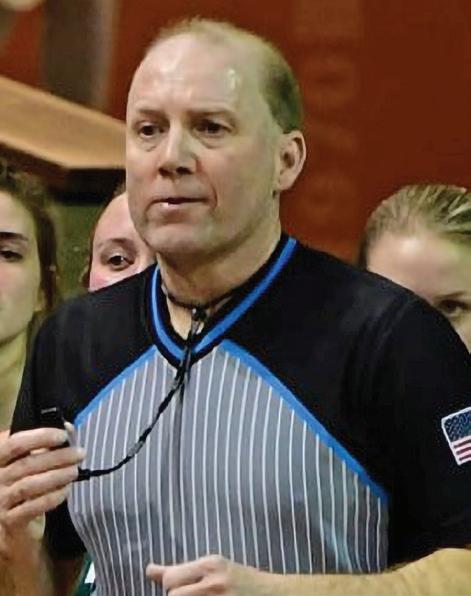

“Youth sports should be a way for kids to learn important life values, develop and master different character traits, learn to have fun, learn to win and learn to lose with dignity and pride,” Beckmann said. “Officials are humans and are allowed to make mistakes at times without being treated poorly. In order to recruit new officials and retain current ones, there needs to be a change at that level first.”
Despite the challenges, Nickleby is adamant that teachers should become officials, emphasizing school administrators should affirm and reinforce the importance of their sports officials.

“Officials need to hear that support from their principals that
they are offering a valuable service to the school and to the community,” Nickleby said. “And officials play a big part in it. Games need qualified and caring people.”
As an administrator, Kuznia agrees and encourages his staff to offer their services to students in a different setting outside of the classroom.
“Officiating is like any other activity you try,” Kuznia said. “You aren’t going to be great at it right away, so having positive mentors who work with you is crucial.”
Although Anglin said he didn’t have a sales pitch for prospective officials, his own testimonial about officiating speaks volumes.
“I am honored to be a small part of a big game, and I will continue to give my best, whether on the court, in the classroom or on the field,” he said. “High school sports helped mold me into the man I am today, and if I have an opportunity to help keep that alive, then I will do whatever is necessary. Officiating football allows me to still feel the chills of walking on the field under the lights in front of thousands of people. In reality, I would do it for free because I love the game.”
Wade Turner is a high school football and basketball official from New London, Wis.

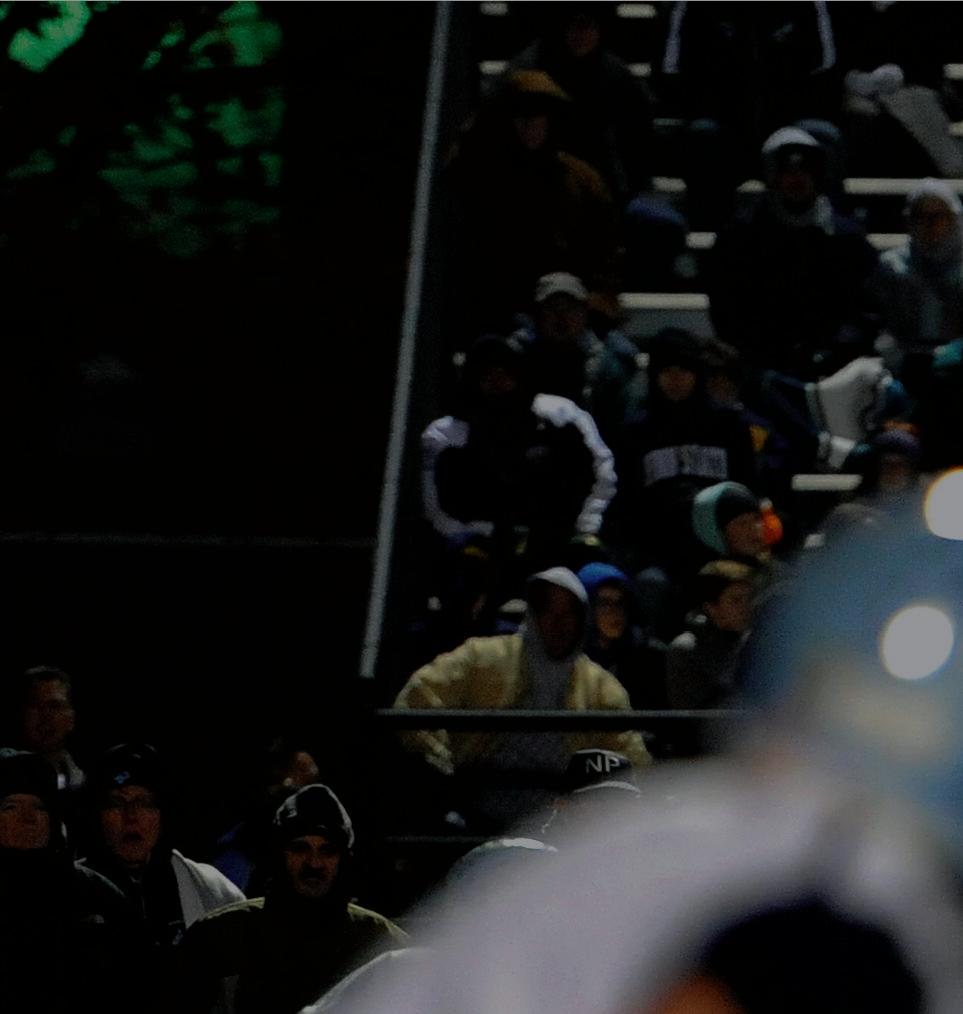




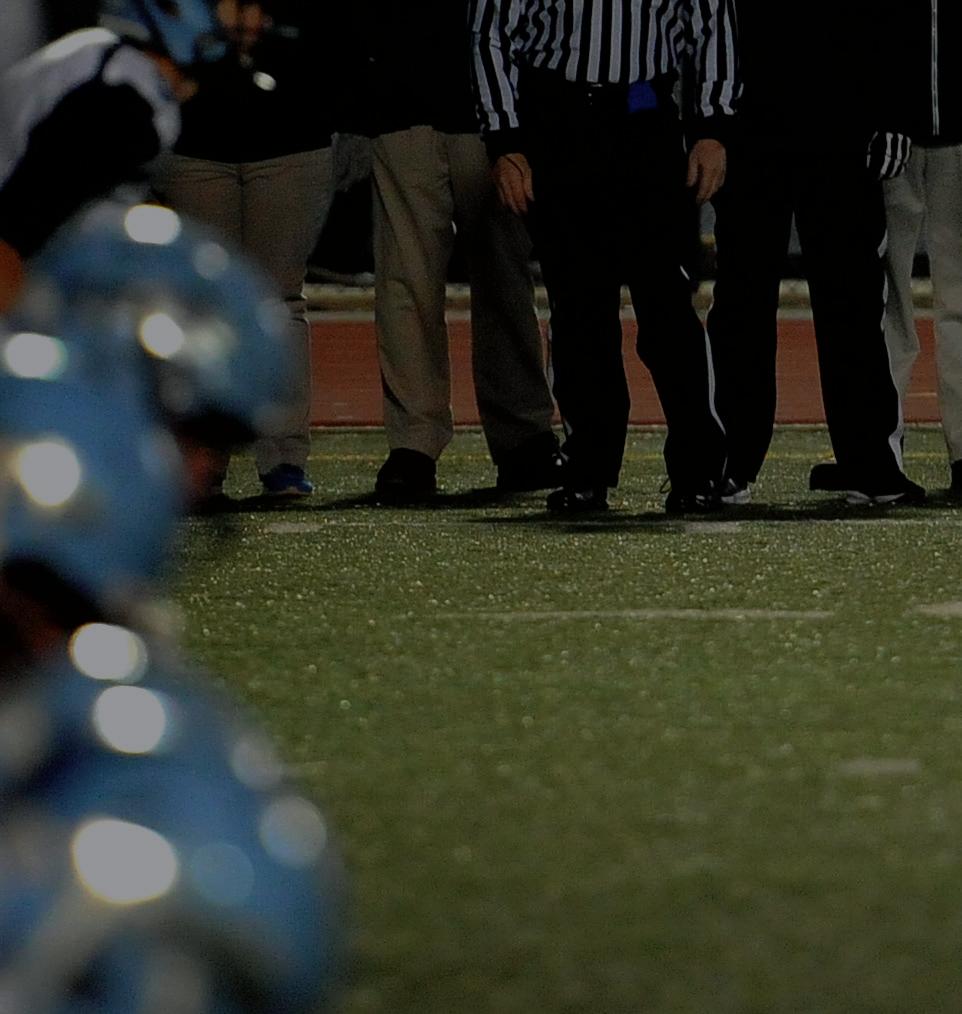


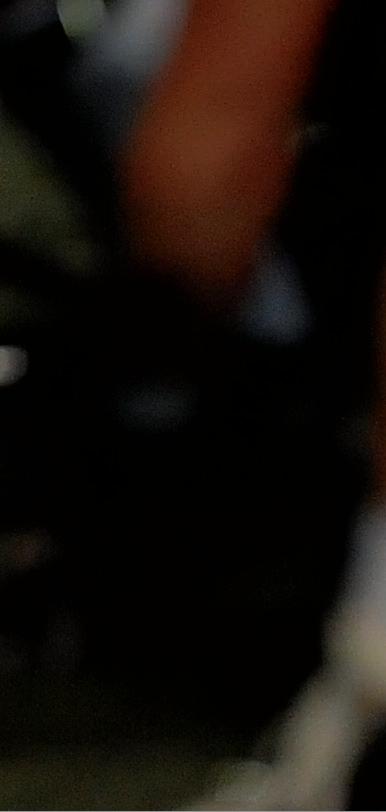









W
hen James Naismith invented basketball in 1891, his purpose was to develop an indoor team sport that was free of physical contact. Under orders from his boss, he had two weeks to come up with something suitable to the dimensions of the Springfield YMCA and that emphasized physical conditioning. Selfishly for him, it was a way to get some fractious rugby and soccer players in his charge through the winter when they couldn’t be outside.
A fundamental of the sport was, and still is, to penalize players for initiating contact. When we
read though the current points of emphasis in basketball rulebooks, there’s a clear focus on enabling freedom of movement. There’s also an admonishment to officials to enforce the rules, as written, and not set aside elements they might think are “part of the game.”
According to some observers, a weak area in enforcement is offenseinitiated contact. While we might be quick to jump on defensive players pushing, shoving, pinching and squeezing, offensive players get away with some of the same sins. It might be because some officials think a player with the ball being mauled all the way to the rim deserves some leniency. It could be that we’re so
focused on defensive fouls that we overlook what causes them sometimes.

Mostly, I think there’s a belief, in the interest of advantage/ disadvantage, that some offensive fouls create no advantage and need not be called. Wrong. Let’s look at some primary examples of offenseinitiated contact and analyze why it must be called, replacing advantage/ disadvantage with cause/effect.
Post play. Every coach dreams of the day a 6-foot-11, 240-pound athlete strides into the first practice. As a post player, this kind of athlete has the potential to change games. Within the rules, these players can make lots of their own buckets and swat away
Which player is responsible for any illegal contact on this play? Don’t automatically assume it’s the defender, given the off arm being utilized by the ballhandler to possibly create space while driving to the basket.
others if they can get close enough to the rim. Outside the rules, they have many ways to gain that advantage by subtle or brute force, if the officials allow it.
The most common issue in post play is offensive displacement. Every player is entitled to a place on the floor and the principle of verticality dictates that entitlement extends straight upward. Thus, an offensive post player without the ball has no right to lean against his or her opponent and is initiating contact by doing so. You might argue that some contact is inevitable but when it reaches the point where the post player would fall over if the defender suddenly disappeared, it’s a foul. What’s the
advantage? Isn’t the post player taking himself out of the play by being offbalance? Maybe, but he’s also tying up the one defender who is likely to be most helpful in defending the rim from other attackers: He’s a blocker.
OK, let’s give the offensive post player the ball and watch her dribble and back in toward the basket against the defender’s resistance. What’s a little bumping and grinding, right? Well, after eight or 10 six-inch bumps, an eight-foot jumper becomes a threefoot layup. No violence occurred but the effect was a player deliberately using contact and forcing her way into a more advantageous position. That’s a foul. Some denizens enjoy this kind of physicality and then wonder why their games get so rough and heated. Experienced officials will get after rough post play at the first occurrence; they’ll often use their voice first to warn players to play straight up, then call a foul when they aren’t taken seriously. That’s good proactive officiating.
Again, when basketball was invented, another objective was to prevent players from physically protecting the ball; hence they weren’t allowed to run with it, only pass it. Dribbling was soon permitted to open up the game, with a proviso: By bouncing the ball, a player could advance it in a way that still left it “available” to a skilled defender to take away without contact. These same principles are in effect today and make it a foul for a dribbler to use hands or arms to fend off an opponent. It follows that an arm bar makes the naughty list. If a defender has enough skill to reach the ball being dribbled, the dribbler can’t use physical force to prevent it.
While we’re on the subject of the attacker clearing the way with hands and arms, bear in mind all versions of the hook play. This is a situation where a closely guarded ballhandler slides a free arm past or around the defender, preventing the latter from moving back into the ballhandler’s way. Effectively, the offensive player is preventing an opponent from moving to a new, legal guarding position. You see it most often on a spin move by the post player, down
Matt
Gediminas
Evan
As high school basketball teams prepare for the postseason, now is a good time for officials to dive back into the NFHS rulebook and re-familiarize themselves with rule 3-5, which covers team members’ apparel and equipment. Stick to the rules, stick to your guns and make sure the players are properly and legally equipped according to the NFHS rulebook.

It’s not very often an NCAA Division I basketball game starts with a technical foul before the opening jump ball has even occurred.
That’s exactly what transpired Jan. 4 when the Texas A&M men’s team was assessed an administrative technical foul because the Aggies did not have any game jerseys to wear — they had inadvertently been left behind at the team hotel — for their SEC clash against Florida.
The delay as they waited for the jerseys to arrive was subject to NCAAM rule 10-2.5, which states “a team shall not delay the game, when the game clock is not running, by consuming a full minute by not being ready when it is time to start either half or any extra period.” The penalty is one free throw awarded to the offended team, with the ball put back in play at the point of interruption. Because the game had not started, the free throw was followed by the traditional jump ball that starts a game.
In each of the following, decide which answer or answers are correct for NFHS, NCAA men’s and NCAA women’s rules, which might vary. Solutions: p. 85.
1. A1 is holding the ball for the first of two free throws. Prior to A1 releasing the ball, B5, who is in a marked lane space, steps into the lane. A1 then releases the ball on the try and steps across the free-throw line into the lane before the ball enters the basket. What is the result?
a. Ignore the violations and the try is successful.
b. Penalize B5’s violation only and award A1 a substitute attempt.
c. Penalize A1’s violation only and A1’s try is canceled.
d. Penalize both violations and award A1 a substitute attempt.
e. Penalize both violations, cancel A1’s first try and resume play with A1’s second attempt.
2. All of the following end a dribble, except which?
a. The dribbler catches the ball so that it comes to rest in one or both hands.
b. The dribbler touches the ball with both hands simultaneously.
c. An opponent bats the ball.
d. The dribbler loses control of the ball after dribbling off his or her foot.
3. All are true of the rules (NCAAM/W) or guidelines (NFHS) for LED lights and the shot clock, except which?
a. LED lights around the shot clock are required.
b. LED lights that exist around a shot clock can only be activated upon a shot clock violation.
c. When a shot clock violation occurs, LED lights around the perimeter of the backboard shall not activate.
4. All are true of the rules (NCAAM/W) or guidelines (NFHS) for the shot clock and the 10-second backcourt count, except which?
a. The shot clock shall be used to administer the 10-second backcourt count.
b. During a throw-in, the 10-second backcourt count shall begin when the ball is controlled by the offense.
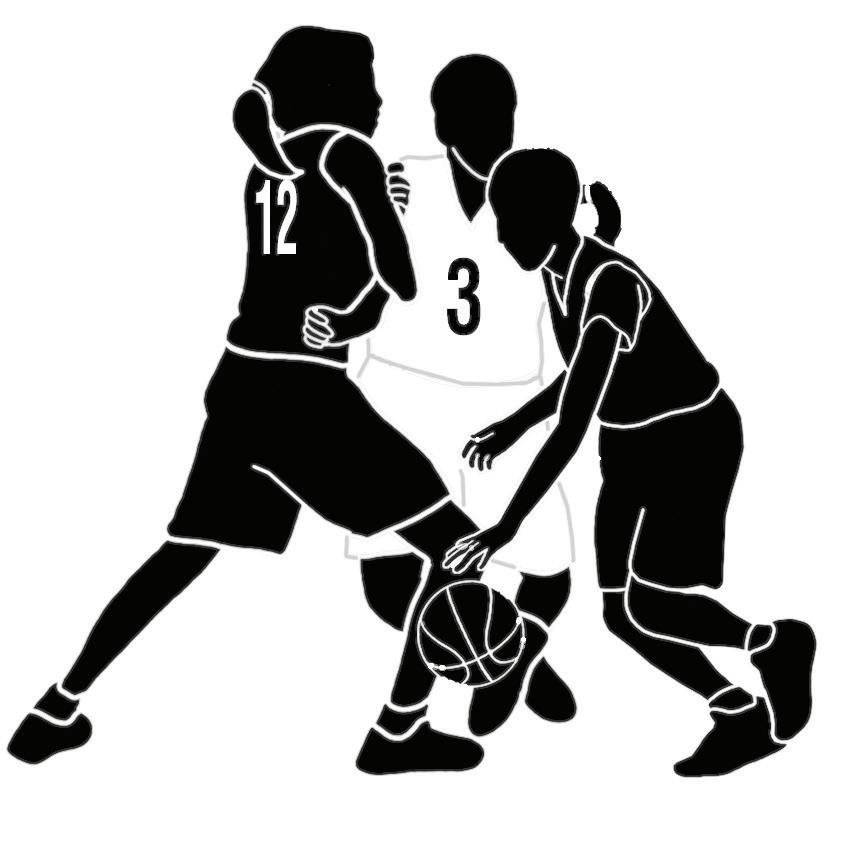
c. After a rebound by the nonshooting team, the 10-second backcourt count shall begin when the ball is controlled by the nonshooting team.
d. The official shall use a visible 10-second count when there is no shot clock visible.
low. As an official properly refereeing the defense, get a good view between and past the interaction, from feet to shoulders, to catch it. Similarly, look for a player to turn a shoulder into the defender while driving toward the basket. The offensive player can’t physically fend off the defender in any way, only get the ball to the rim faster than the defender can respond.
The last area to cover is illegal screens by the offense. According to the rules, a screener must be stationary unless both the screener and the opponent being screened are moving in the same direction. By definition, there should be no contact in a screen. That means anything an offensive player does to move and set a screen must give the defender time and distance to avoid contact, and there can be no displacement. If that doesn’t happen, the contact is considered initiated by the offense and is a foul.
In today’s motion offenses, there’s going to be a player moving and setting a screen somewhere to get a teammate free to receive the ball. Look for that player arriving late to the screen or, once there, breaching verticality. The screener can’t have feet or arms set any wider than the shoulders; if the screener does and impedes the opponent’s movement in any way with
Illegal offensive contact is often found with the use of illegal screens to try to free up teammates for drives to the basket. Here, No. 12 commits a team-control foul by stepping in the path of No. 3 and creating illegal contact.
those body parts that are outside the frame, the screener is initiating contact and committing a foul. Also, watch for a screener pushing an opponent under the basket when rebounding or moving a defender out of the way as a teammate drives the lane.
The off-ball officials on the crew earns their pay by catching this activity while the primary official focuses on the ball. If officials don’t police illegal screens properly, there is obviously going to be more contact, but it also makes for a more dangerous game that raises emotions; sloppy, rough screens result in avoidable injury and must be controlled.
How officials choose to rule on offense-initiated contact strongly reflects their attitude toward the game. When they let a lot go, they project an element of “let ’em play” that is exactly what the rules committees want to defeat. It doesn’t become ticky-tack or a game for wimps — no matter what the coaches bleat — if the officials clamp down on this genre of fouls. It makes for safer, cleaner games with a proper (re)emphasis on athletic superiority.
Tim Sloan, Davenport, Iowa, is a high school football, basketball and volleyball official, and former college football and soccer official.
The penalties associated with fighting between opponents during a basketball game are swift and sure at the NFHS and NCAA levels. Participants and those who leave the bench area to participate are assessed flagrant fouls (NFHS and NCAAM) or disqualifying fouls (NCAAW) and are disqualified (NFHS) or ejected (NCAAM/W). There are different penalties related to free throws being awarded across the three codes based on whether the number of participants is corresponding. It can get messy for officials working the game to sort out, but the procedures for doing so are spelled out clearly in black and white.












But what happens if a fight breaks out between teammates?
During the local holiday tournament season, it was anything
but merry and bright for one team when, early in the second half, while transitioning from offense to defense following a dead ball, A1 took a swing at his teammate, in the middle of the playing court for all to see.
By definition, this is a fighting act according to all three rule codes (NFHS 4-18; NCAAM 10-5.2; NCAAW 10-15.2), whether there is contact or not. But do we adjudicate it the same way as we would if the confrontation took place between two opposing players?




After all, teams have squabbles among themselves all the time. We see it when a frustrated coach calls timeout and two teammates get in one another’s face, unhappy about some aspect of one another’s performance. When this happens, the officials typically don’t step in. That’s for the coaching staff to police, right?


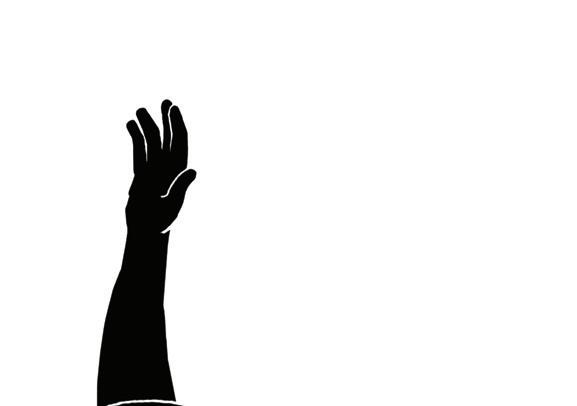



The penalty for fighting between opponents is cut and dried, with flagrant/ disqualfying fouls and ejections to be assessed. But what happens when a fight breaks out between teammates?





Featuring EIGHT fully immersive units, these interactive multimedia study guides deliver a massive amount of training right from your phone or tablet. You’ll get tons of video, snapshot graphics and quick-hitting tutorials in every unit to keep you fresh, focused and at the top of your game all year long!



$1995 ONLY for all 8 units!

Play: A1 is holding the ball prior to attempting the second of two free throws. A5 and B5 are lined up next to each other in marked lane spaces. Prior to A1 releasing the ball on the try, (a) A5 steps directly behind B5, or (b) B5 steps directly behind A5. A1 then releases the ball on the free throw and the try is unsuccessful. Ruling: It is a violation for a player to enter or leave a marked lance space before the freethrower has released the ball. In both (a) and (b), the player not only left their own lane space, but entered an opponent’s lane space. In (a), A5 has committed a free-throw violation, the official shall blow the whistle immediately and A1’s free-throw attempt shall be canceled. Team B is awarded a throw-in nearest the violation. In (b), B5 has committed a delayed freethrow violation, and the official shall hold off blowing the whistle until the result of A1’s free-throw attempt is known. Since A1 missed the free throw, the official shall blow the whistle following the miss, call the violation on B5 and A1 is awarded a substitute free throw (NFHS 1-5-2, 9-1-3d; NCAAM/W 1-6.4, 9-1.1.e).
Play: While A1’s try is in flight, A2 commits a personal foul against B2. The try is (a) successful, or (b) unsuccessful. Team B is not in the bonus. What is the result and how shall play be resumed? Ruling: When the official blows the whistle for a foul, the ball does not become dead until the try in flight ends. Therefore, in (a), A1’s try shall count. Since team B is not in the bonus, the location of the ensuing throw-in is dictated by the spot of the foul. When the try is successful as in (a), team B shall have the right to move along the endline and make the throw-in from any point out of bounds on the endline. If the try is unsuccessful as in (b), team B shall have a designated-spot throw-in at the out-of-bounds spot nearest to where the foul occurred (NFHS 6-7 Exc. a, 7-54a, 7-5-7; 7.5.7E; NCAAM/W 6-6.1, 7-3.2, 7-4.4, 7-4.6.a).
However, if players from opposing teams start jawing at one another, we most definitely get involved. While this is not a fight by definition, if the talking is too demonstrative, we are going to assess technical fouls for unsporting behavior or misconduct.
The point is, there is some discernment involved when it comes to behavior between teammates and between opponents. But when it crosses the threshold into fighting, by definition, officials are expected to handle the situation according to rule.
In NFHS and NCAAM, this is a flagrant foul. In NCAAW, it is a disqualifying foul. The player who threw the punch is disqualified/ ejected. The foul is added to the team foul count. The opposing team is
awarded two free throws, to be taken by any team member, followed by a throw-in for the opposing team at the division line opposite the scorer’s table (NFHS and NCAAW) or at the point of interruption using the procedures in rule 7-3.2 (NCAAM).
Philosophically, there is sure to be an argument from some corners as to why an opposing team that’s not even involved in the action is awarded the opportunity to score uncontested points and receive possession of the ball. That’s another argument for another day.
Our job is to enforce the rules as written. Fighting is fighting. Case closed, and move on to the next play. Scott Tittrington is an associate editor at Referee. He officiates college and high school basketball, college and high school baseball and high school football.
Referees during their pregame discussion typically include communication (even overcommunication) among crew members as a critical element for success. However, when we talk about communicating with our crew, are we including our table crew in our thought process?
After all, there’s a reason we call them the table crew. They are an essential part of our crew, and how we report fouls and warnings for delay or coach/team misconduct to them can help us avoid potential headaches throughout the game.
“Reporting a foul is first so the table can record information accurately,” said Tim Lewis, the Washington Officials Association RTO (Retain, Train, Observe) coordinator. “Strong reporting in general shows we know what we’re doing. When we communicate well, our table feels more like a part of the team, and when they feel like part of the team, they’re more likely to jump in and save us on a wrong shooter or wrong fouler — and do it respectfully as a part of the team.”
In addition, how we report fouls and warnings to our table crew also sets the stage for how we communicate with coaches following the report.
“When we look competent, that relaxes most coaches and frames the conversations we have with them more in the realm of ‘in my opinion,’” Lewis said. “The moment a coach has reason to question competence rather than judgment, conversations devolve from the gray areas of ‘from my angle’ or ‘in my opinion’ and become black and white — ‘that was a bad no-call,’ or worse, ‘you don’t even know what you’re doing!’”
So, how do we avoid issues when reporting a foul or warning to our table crew? Here are seven bad habits we fall into and how we steer clear of these problematic issues.
High school and NCAA men’s basketball officials are expected to hustle to the reporting area, while NCAA women’s officials walk toward the table with a purpose. When we amble to where we need to be following a foul or violation, we
unnecessarily delay the game while appearing disinterested or bored.
The reporting area defined in the NFHS (Diagram 2-23) and NCAA men’s basketball officiating manuals stretches from the tops of the freethrow semicircle through the center restraining circle and stops about 10 feet from the sideline. That’s a 34-by-15-feet (510 square feet — that’s larger than some studio apartments in Manhattan) space for high school officials and 44-by-15 (660 square feet) for NCAA men’s officials. Utilize that entire space to its full advantage.
“It’s designed to get us clear of players so the table can see us while also putting us far enough away from the table to provide a buffer from coaches,” Lewis said. “It gives us an opportunity to project and show confidence and credibility in our calls.”
Many of us make the point that officials are athletes, too. Therefore, show it when reporting to the table. Don’t slouch or slump, but instead, stand tall and proud, using crisp mechanics with a loud (but not shouting) voice that exhibits confidence and assuredness in your call. Present numbers shoulder-width apart, no higher than your head or lower than your shoulders. Plenty of mirror work will help you look strong and athletic when reporting fouls.
When you’re talking to a coach or player, you like to make eye contact so you’re sure they’re hearing your message. You want to do the same with your scorer. They should be easy to find — they’re the one at the table wearing the stripes (or will have them hanging in front of them from the table).
Make sure you have their attention when reporting a foul or warning — this is especially important when working NCAA women’s basketball, where we don’t need to get to the reporting area but simply get a clear line of sight to our scorer for all reporting.
So, you’ve made eye contact with your scorer, but you also have a coach at the edge of their box screaming their displeasure at your decision. Thus, you don’t state the color or flash the number for a split-second because you don’t want to linger too long before escaping the fire zone.
Unfortunately, the scorer can’t understand what you’ve shown them, requiring them to ask the timer to hit the horn and call you over for the “walk of shame” to the table to repeat everything. It’s happened to all of us, so take an extra second to ensure the scorer understands your signals to avoid a do-over.
Reporting a foul or warning isn’t the time to show off your improvisational skills. Use the approved mechanics for the level you’re working to communicate the type of foul you’ve called.
“Only approved mechanics can correctly portray the violation or foul to the table and bench,” said Connie Perkins, the NCAA Division II women’s basketball national coordinator of officials. “This way, it is consistent from game to game, and tables and benches know what to expect.”

That being said, you can “elaborate” to demonstrate the exact infraction once you have completed reporting to the scorer. For example, rather than saying, “White, 24, push,” you could say, “White, 24, jumped into the ballhandler” while giving the proper push signal.
“That tells a coach White 24 didn’t jump vertically,” Lewis said. “We can gain credibility with a coach or answer a question before it’s asked. Saving that conversation increases the meaning and impact of future conversations with coaches while also selling to a coach that we were on top of the play.”
Warnings for delays or bench misconduct don’t happen every game. Neither do intentional, flagrant,
double or technical fouls. You might need to gather with your partners to ensure you have all the information you need to deliver to your table crew. Then, take the time to process the situation and provide that information to the scorer. Again, taking that extra second or two the first time should avoid having to return to the table to clarify what happened.
Fortunately, most of our calls on a nightly basis won’t require that level of attention to detail. That doesn’t mean we should blow off reporting a simple handcheck or blocking call, for that’s when we build credibility for that last-second 50-50 decision.
“When we make the easy calls look easy, and when our report to the table looks easy, even on tough calls, it buys us that necessary big-time sell on a preliminary signal,” Lewis said. “When we’re amped all the time, especially at the table, we take away from our credibility.”


instant replay as a tool for football officials is not new, but philosophies, rules and concepts are constantly subject to change. Referee talked to Dean Blandino, national coordinator of collegiate instant replay and a Fox Sports rules analyst, for the latest. The interview has been edited for conciseness and clarity
REFEREE: What is guiding the decision-making process in replay?

BLANDINO: The basic premise for replay is to be an aid to officiating to help correct obvious errors in significant situations. Trying to stick
to that guiding principle has been a challenge as technology gets better and as more and more things get added to the game.
REFEREE: Replay seems to have moved away from correcting egregious errors and expanded into “did the toe touch the white.” Is that disturbing to you?
BLANDINO: It’s concerning for sure, but it’s not surprising. There were people that were steadfast against instant replay. And the concern always was we said we’re going to limit it, we’re going to keep it to this small subset of situations. And that group of opponents was very vocal
about, “You can’t just keep it to that, it’s going to grow.” We’re going to have that creep that continues to get more involved in the game, and that proved prophetic. That’s clearly what has happened. And, again, I can’t imagine a world without replay. Just think about games today, think about one touchdown allowed when the video shows it wasn’t a touchdown. There would be a complete and total outcry and rightfully so. But again, it’s that challenge of maintaining that balance between what replay is really supposed to be for and allowing the officials to officiate on the field and not injecting replay too much into the game because that can have a negative impact.
REFEREE: How much do you rely on judgment as far as when to stop the game and how to rule?
BLANDINO: That is something we spend a lot of time on especially at the college level. Because in college it’s not a coach’s challenge system where the coach is responsible outside two minutes or non-scoring plays. And we talk about competitive effect a lot, where a five-yard gain in the first quarter with 12 minutes to go is not as significant as a five-yard gain with 20 seconds to go with a tie score. It’s just trying to continue to work at that and understand that, yes, it’s five yards in both situations, but in one situation it has a much bigger impact on the game than in the other.

Because a coach will tell you every yard matters at every point. Especially at the college level, if we took that approach we’d be stopping the game five, six, seven times. And that interrupts the flow, and that has an impact on momentum and other things that can affect the outcome.
REFEREE: How easy or how difficult is it to determine the actual right from wrong?
BLANDINO: When we get into reviews, you want to let the video be your guide. I’ve learned this the hard way through experience where
I could convince myself of something through looking at it four, five, six different times, different angles, going through a lot of mental gymnastics. And I could convince myself, yes, there’s enough evidence to overturn this. But if you take a step back and say, ‘OK, if I put this in front 50 people or 100 people, could I convince all of them that this is clear and obvious or indisputable?’ We use different phrases for that standard. We really want to stick to letting the video be your guide, letting it jump out, let it be obvious. And if we have to sit and explain why we overturned a call and that explanation is three minutes long and you’re showing eight different angles, then it’s probably not clear and obvious. Versus, hey, here’s the shot, the ball hit the ground, there’s no question, there it is, that’s why we made that decision. And you want to stick closer to the latter than the former when you’re making decisions in replay.
REFEREE: How do you get consistency across the country when every conference has its own coordinator of officials?
BLANDINO: That’s probably our biggest challenge because we do have different conferences. Look, the rules are the same for the most part, the mechanics are the same, but you do have some different philosophies and different things. One of the things that has really been a big benefit on the college side is the advent of being able to do more training virtually, whether it’s Zoom or Teams or whatever it is and to be able to get people. Because it’s really hard to fly everybody out to one location and to have meetings and there’s logistics. But when we can schedule a Zoom call and spend 45 minutes or an hour looking at the same plays and going through the same philosophies and the same mechanics and do that with each of our conferences, that’s been a big help, and we do that throughout the season. We do that for a majority of the offseason, and that’s been a really big help on the replay side —
just getting everybody closer to being on the same page.
REFEREE: When do command centers get involved during the game?
BLANDINO: Four of the autonomy five conferences use command centers for replay. The idea and theory are they’re just involved in replay decisions. They’re there to collaborate, to help when needed, provide input when needed — but ultimately the replay official has the final say. What we’ve seen with command centers and, again, this is not surprising, is that as command centers get involved, then we get involved in some things that maybe are outside the parameters of replay, and we’re communicating more with our onfield officials. And are we
parameters of that game. Really the easier game to work from a replay perspective is the game with six cameras compared to 18. Because with six cameras you can cycle through those six cameras, and if you don’t have the look, you don’t have the evidence, you know that’s everything you have available to you. Whereas if you’re working a primetime game or a championship game and you have 18, 20, 25 cameras, that’s going to take longer to go through that information. And then always in the back of your mind you’re wondering, “OK, well, does TV have another angle that is going to give us the look that we need?” So, it’s actually easier to work with fewer cameras.
REFEREE: How often does a camera not work, or how often does the feed go bad?

looking for a get-it-right standard? Are we looking for perfection? Or are we trying to stick to “Let’s correct the obvious mistakes in significant situations?” We’ve really migrated away from the obvious mistake, and we’ve gotten involved in a lot more than I think what was initially anticipated. And I don’t think it’s going backward. As command centers and technology, and the magnitude and the scrutiny continue to increase, the desire to get plays right and to fix more and more of these things is also going to increase.
REFEREE: How difficult is it when you’ve got some games that have 18 cameras and some that have only six?
BLANDINO: That’s part of the challenge. You work within the
BLANDINO: Yeah, it happens. Just like anything with technology, you’ve got software, you’ve got hardware, they’re not infallible. There are going to be things that happen. Very, very rarely, knock on wood, is replay completely down. But you might have a component of the system that isn’t working properly. Maybe it’s one camera, maybe it’s a jog shuttle wheel they use to manipulate the video, those types of things can happen. And in the replay booth there’s a technician who is responsible for troubleshooting and making sure the system is operating correctly.
REFEREE: Does the fan at home see the same views the replay official does?
BLANDINO: In replay you’re not using anything that is outside what the network has available to them. So the fan at home may not see a particular angle if the network doesn’t show it on the air. There’s not a separate set of cameras, so it’s all broadcast cameras. And the communication — if replay makes a decision, they’ll communicate to the truck which angle they used so
You work within the parameters of that game.
if the network hasn’t shown that angle yet they can show it on the air. So using the same set of cameras, there isn’t different information. That was really important to us when we talked about bringing replay back. We didn’t want decisions to be made based on information the people watching the game didn’t have.
REFEREE: From a technology standpoint if there was one thing you could change what would it be?
BLANDINO: I think we’re in a good place. I really am happy with the little bit of the independence from the network where we’re getting individual camera feeds in the replay booth for the most part. The original system was just recording the program feed, and whatever TV shows that’s what you had in the replay booth. Now you’ve got access to all of their camera angles, and you can start to look at individual camera angles on your own, independent from what TV is showing. And so I think that’s been a great advancement. Again, as we continue to get more involved in the game, it’s less about technology and more about the processes and the mechanics and trying to make sure that our people are as efficient as possible, as accurate as possible.

REFEREE: What qualities does a perfect replay official have?
BLANDINO: There has to be a football background. We learned 30, 35-plus years of onfield officiating isn’t a prerequisite. But it’s a very, very good thing to have that onfield background. Because when you’re familiar with the game , you understand, you have a baseline IQ of football, and that’s really important. But then there’s the technical aspect to it and being comfortable working with technology, being comfortable manipulating video, using software and things like that. You can’t be intimidated sitting in front of a monitor that is showing you 12 different camera angles.
There’s a perfect combination of being analytical but also being decisive. You can be overly analytical and never make a decision. So you want to be able to analyze video and look at different things, but be decisive when you have the information to make a decision. It’s a combination of all those things.
You also have to be a good communicator. You have to be able to verbalize what you’re thinking. The scariest replay booths that I’ve been in observing are when it’s completely quiet because we don’t
toward the end of their career. And that was not the wrong thing, that was the only thing that you could do. But now as replay has evolved, more people are seeing it as a career path, and not just onfield and then I’ll retire into replay. But if I have an onfield career I may leave early, earlier than I would have anticipated because I want to go into replay as a career path. And I see my trajectory being different in replay, and I might reach the goals in replay where maybe I don’t have the opportunity to reach those goals onfield. So we have changed that perception.
know what anybody’s thinking. I don’t know if the replay official wants to stop the game or if they think it’s a catch. Being able to verbalize, being able to work through a process, a step-by-step process, not focusing on the outcome but focusing on what’s my next step, it’s a combination of all of those things that is going to make you successful in the replay booth.
REFEREE: How do you eliminate the perception this is a retirement gift? You know, somebody who has done their time and, OK, now we’re just going to stick them in the replay booth?
BLANDINO: Yeah, that was the initial go around. We didn’t have replay officials. We didn’t have any pool to pull from. So naturally we had to go to the onfield officials, and typically it was onfield officials
REFEREE: Would it be fair to say the replay official has to be at least as good, if not a better rules person than the referee?
BLANDINO: What we’ve learned is at least (as good) and even better. Because the replay official has become the last stand of any penalty enforcements, clock issues. I mean replay is, really, that’s the last line of defense. And we’ve talked to replay officials. Because initially it was, OK, we’re going to learn the replay rules and we’re going to learn what’s reviewable, and I’m not going to worry about anything else, and that’s not the case. Look, we don’t want replay officials to look at plays and say, “Well, that’s pass interference, that’s enough restriction.” Get that out of your thought process. But we’ve got to be able to enforce penalties. We have to know the clock rules, 10-second runoffs, different situations. You
You also have to be a good communicator. You have to be able to verbalize what you’re thinking.
know, a scrimmage kick where the ball crosses the line or it doesn’t. So, yes, a replay official has to be an expert in the rules and has to be just as good as the referee because, again, you’re that last line of defense when things happen.
REFEREE: So you don’t see them becoming the eye in the sky like has been tried elsewhere?
BLANDINO: No, I don’t think so. There are things you can do to help the onfield crew and with wireless communication or official-to-official communication. Replay is able to do things seamlessly and help. But I don’t think we’ll ever get to a point where we’re re-officiating the play in replay. The rules are written for onfield officials to make decisions in real time. When you start re-officiating the play in slow motion that’s a different standard. Unless you were just going to say we’re going to look at it full speed, and we’re just going to give ourselves that opportunity to look at it again at full speed. But again, does anyone want to watch a game where after every officiating decision we’re waiting for some confirmation from upstairs that, yes, there were no issues on that play, we can move on? That’s a game I don’t think anybody wants to see.
REFEREE: Do you see college adopting any part or all of the NFL model for replay?
BLANDINO: We have talked about it with the rules committee. I would love to see college experiment with a coach’s challenge system. I do think the replay official in college has a tremendous amount on their plate when you talk about every play of every game and multiple reviewable aspects. And so I think going back to that competitive effect idea that we talked about earlier, if we went to — OK, we know that scoring plays, turnovers, the last two minutes and targeting are important plays, the replay official will be responsible for those. Everything else it’s up to the coach. If you think the four-
yard play in the second quarter is important, you have that option, and you can challenge that as long as it’s reviewable and you have a timeout remaining. That is kind of something we’re talking about with the rules committee. I think that’s the way to go. Because, again, as technology gets better and more and more plays get added to the reviewable situations, if you have someone that’s responsible for stopping the game every play, we’re not going to reduce the number of stoppages. It may slowly go up, but eventually it’s going to continue to go up and up and up.
REFEREE: Are there some plays you would like to see that aren’t reviewable that are currently reviewable? Is there anything you think is superfluous?
BLANDINO: It’s interesting. I don’t think there’s anything that’s superfluous because it may seem insignificant, but in a different situation it could be a big deal. So I think we’ve got a good set of reviewable plays. The game is so fascinating because every year you see something that you never anticipated and have never seen before. And it feels like a couple of times a year we’re seeing plays that you had never even fathomed. The ball bounces funny ways and different things happen, and replay is a part of that. So, I don’t think there are major additions needed or major subtractions. But, again, it’s just understanding what is important in that game in that situation. What can we let go and what do we need to stop to make sure it’s correct? I think that’s the biggest thing.
REFEREE: How comfortable/ uncomfortable are you being the national coordinator for replay and on Saturdays having to appear on TV and maybe having to criticize?
BLANDINO: Yeah, it’s something I think about. But my approach on broadcast has never been — and I can’t say that I’ve held to this 100
percent because sometimes I see things and I get frustrated not in a negative way; I get frustrated because I’m like, “We just went through that, come on, let’s get this one ” — but I have always tried to take the approach of teaching and focusing on, OK, here’s the rule, here are the elements of the play that they’re looking at because that’s part of the expectation in that role to give my opinion. And what I do know is that in the replay booth, they’re not supposed to be listening to the audio. So I don’t ever think what I say is going to influence them. But I always try to take that approach of educating the rule, the elements they’re looking at, and then if I were making this decision, this is what I would do. But sometimes the thing is, and I go back and I look at plays I went on the air to talk about, and I may have a different opinion after I look at it. Because I may have 10 seconds to look at a play before I go on the air, where if I were reviewing that in the booth I wouldn’t look at it for just 10 seconds and have my mind made up. So that’s the other factor, too, where I may not have looked at every possible angle before I give my opinion on the air, but that’s just part of live TV. You don’t have an unlimited window to give your thoughts. You’ve got to be in and out and do it efficiently.
REFEREE: It’s got to be frustrating when you give your opinion, and then one of the announcers tries to argue with you and talk you out of it.
BLANDINO: Yeah, I always enjoy that back and forth. I think it makes for good TV. But also in those conversations people listening can learn from it. Because if one of our announcers says, “Well, I disagree, here’s why,” then we can have a little bit of a dialogue and we can have that conversation. Because that question or that opinion by that announcer may be the same for people watching at home. Then we can have that conversation. And sometimes it may be something that I didn’t even consider and then we can talk through it.

East Rochester, N.Y., umpire Lee
Prong had a tremendous love for the game of softball. He also had a soft spot for the Special Olympics and what that program offered. When Prong died on Jan. 19, 2022, he left a huge hole in the Midlakes USA Softball community. It was in that organization Prong both coached and umpired. He created and built the Wayne-Finger Lakes USA Softball Umpire Association.
“Lee is someone who supported
While discussing details, the tournament organizers were reminded of Prong’s passion for Special Olympics, and the tournament became a fundraiser for that program in Prong’s name.
“Working with Special Olympic athletes is what our family does,” said Dan Prong, Lee’s son. “My dad would say, ‘The best thing about the game is the relationships you gain from it.’ This was his way of allowing Special Olympic athletes a chance to access the greatness of softball.”
The one-day, round-robin tournament raised $3,000 for Special Olympics and took the partnership of the USA Softball organization, the teams, the umpires and the grounds crew to pull it all off.
“I’ve been doing tournaments for like 30 years,” McNear said. “Something always goes wrong. It is what it is. We truly didn’t have that (with this tournament). The day was sent to us from Lee.”
And while the idea initially started with a conversation among league administrators one summer night, having the Prong family be a part of the event is something that has left a permanent mark on the family.
NBA referee Tony Brown died last October from pancreatic cancer at the age of 55. Now his high school alma mater is retiring his playing number.
Godby High School in Tallahasee, Fla., held a ceremony in January that showcased Brown’s former teammates and his family and announced Brown’s No. 10 jersey would be retired.
“This is a huge deal, and we wanted to support him, but also to support the Godby family, and specifically his family,” Godby principal Desmond Cole said to WTXL. “To referee games where Charles Barkley was on the court, or Michael Jordan was on the court, it doesn’t get any bigger than that at that level and he reached the pinnacle. We’re super proud of him, not that he needs us to be proud of him but we are proud of him because he is a Godby graduate.”
SOURCE: WTXL (TALLAHASEE, FLA.)
our organization,” said Molly McNear, president of Midlakes USA Softball. “Lee put so much time and effort into helping our organization grow, providing us with high-quality umpires and was just so passionate about our organization because of our goal to give such a quality atmosphere to play ball. Once he became friends with my father and myself, he was with us every step of the way. When we lost him, it was a real kick to the gut.”
Prong’s dedication led to a discussion last summer about how to honor him for what he did for the softball community. That discussion led to the inaugural Lee Prong Memorial Tournament in the fall, which featured 12 fast-pitch teams in two age groups.

“For us, the idea that others in our softball family would value their relationship with (my father) so much that they would put this tournament together, and donate the proceeds to a charity that was special to him means more than I can really put into words,” Dan Prong said. “Being able to work games as an umpire during my dad’s tournament was very special. The thought that everyone was there because of him was pretty cool to think about and see the number of lives he touched through softball.”
The tournament and remembrance for a man so dedicated to both the sport and the Special Olympics will continue as McNear said teams were asking when next year’s event would be before this one even concluded.
Brad Tittrington is an associate editor for Referee
When battling Stage 4 pancreatic cancer, it usually isn’t advised to skip out on a chemotherapy appointment. But for Wrentham, Mass., football official John “Sal” Gulino, he had a very good reason to do so. The 70-year-old, who has been officiating football for the past 25 years, had a chance to work a Massachusetts Interscholastic Athletic Association (MIAA) Super Bowl at Gillette Stadium, home of the New England Patriots, last December. It marked his fifth and final Super Bowl.
Gulino was diagnosed in Feb. 2019 and notified the cancer had metastasized to his liver. Since then, he has had 76 chemotherapy treatments. At the time of his diagnosis, he was given three to six months to live.
“I’m not just existing, I’m living,” Gulino told the Sun Chronicle “There are a lot of things that go through your mind when you have a diagnosis like this. And one that I stuck with was I’m not going to let this thing get me. I’m going to live my life as I’m accustomed to for as long as I can.”
SOURCE: THE SUN CHRONICLE (ATTLEBORO, MASS.)
Have you heard an inspirational or motivational officiating story? Send your ideas to GettingItRight@referee.com







Ahigh school soccer team has 11 players. However, the goalkeeper is the lone player specifically mentioned in the rules. What the player in that unique and key position can and cannot do is included throughout the NFHS rulebook.
The most noteworthy of the privileges given to the goalkeeper is
the handling of the ball within the team’s penalty area as indicated in rule 18. However, there are limitations (see NFHS rule 18-1-1r on this ball handling privilege). The goalkeeper can take control of the ball with the hands but rule 12-7-1 requires the ball to be released and put into play within six seconds. The key word is control. Because of the running clock and timewasting by the goalkeeper
holding the ball, enforcement of the six-second rule by the referee is essential.
Although not specifically stated in the rules, the six-second count begins when the goalkeeper is in position to release the ball into play. An example is a play where the goalkeeper dives for the ball, gains control but lands stomach down. The goalkeeper should be given ample time to rise and get in

position to release the ball. Once the goalkeeper has risen, the six-second count can begin.
However, if the goalkeeper remains on the ground and does not rise, the referee should check if an injury has occurred. If there is no injury and the goalkeeper is just slow in getting up, the six-second count can begin while the player is on the ground. The referee can verbally inform the goalkeeper the count has begun. If there is an injury, the clock must be stopped and the goalkeeper must leave the field and be replaced as indicated in rule 3-3-2b2.

If the goalkeeper does not release the ball into play within six seconds after controlling it, an indirect kick is awarded to the opponents at the spot of the foul unless the violation takes place in the goal area (12-7 Pen.). If the violation is in the goal area, as stated in rule 13-1-4, an indirect kick shall be taken from the part of the goal area line which runs parallel to the goalline at the point nearest to where the sixsecond offense occurred.


During the six seconds the goalkeeper controls the ball, the goalkeeper may hold it, bounce it or throw it into the air and catch it. However, it is a foul for the goalkeeper to touch the ball after it is released from control by a throw where a catch is not intended, putting or pushing the ball on the ground or kicking the ball (12-7-1).
Parrying the ball and retouching it with the hands is also a foul. Parrying is the deliberate attempt by the goalkeeper to control and/ or deflect the ball down or out with the hands or arms (18-1-dd). Parrying usually occurs when the ball is played to the goalkeeper who then, instead of catching it, pushes the ball to the ground. Parrying is considered a form of control and release which as indicated earlier is a foul if the ball is retouched by the goalkeeper. The goalkeeper touching a ball that is then hit to the ground may not be parrying. The touching may occur in a save and the goalkeeper is just stopping the ball and not controlling it. To be parrying, control of the ball is required.
As noted previously, the goalkeeper can only handle balls that


are within the goalkeeper’s team penalty area. The lines of the penalty area are part of the penalty area (1-2-5). Thus, a ball on or over the penalty area lines is in the penalty area and can be handled by the goalkeeper. The officials must closely monitor a handled ball in the vicinity of the penalty area lines to make certain the ball is not controlled with the hands beyond the penalty area and legal handling is maintained.
The goalkeeper is not permitted to handle all balls that come to the goalkeeper. As indicated in rule 12-7-4, a goalkeeper is not permitted to touch a ball with the hand when receiving it directly from a throw-in by a teammate. This is a very rare occurrence as throw-ins are almost always to a field player and not the goalkeeper. A more frequent occurrence is the deliberate kicking of the ball by a teammate to the goalkeeper who handles the ball. That is a violation of rule 12-7-3. The referee must judge if the handled ball was deliberately kicked to the goalkeeper, to another player or away from an opponent. If it is deliberately kicked to the goalkeeper, the goalkeeper cannot pick up the ball from a teammate with the hands. Goalkeepers are not allowed to attempt to strike or push an opponent with the ball. The penalty for these violations is a direct kick from the point of the infraction. Since the infraction point is most likely to be in the penalty area, a penalty kick will result. A penalty kick is awarded when a direct free kick offense occurs in the offending team’s penalty area (14-1-1). Because of frequent congestion and contact in the penalty area, the goalkeeper is regularly placed in situations where these violations may occur. The goalkeeper is also treated as any other team player for the caution and disqualification misconduct violations listed in rule 12-8. Conversely, the goalkeeper receives protection from contact by field players as indicated in rule 12-4-2. A player shall not charge the goalkeeper in the penalty area unless the goalkeeper is obstructing the player or dribbling the ball. The
The Iowa High School Athletic Association (IHSAA) will add a fourth classification for boys’ soccer for the 2023 spring season. An IHSAA-sanctioned sport since 1994-95, IHSAA soccer featured 172 teams across three classes in 2022. Since soccer’s recognition, the IHSAA added a second classification in 1998 and a third in 2009. In 2023, IHSAA soccer will feature the largest 36 schools in Class 4A, the next 40 schools in Class 3A, the next 48 schools in Class 2A and the remaining schools in Class 1A.
9 Newcomers Named to 2023 FIFA Panel
Alexandra Billeter, Joseph Dickerson, Alyssa Nichols, Victor Rivas and Samantha Martinez (pictured) are the new U.S. referees on the 2023 FIFA International Panel. Jose Da Silva, Salma Perez Ochoa, Kali Smith and Tiffini Turpin are new assistant referees.




Returning to the panel from the U.S. are referees Danielle Chesky, Ismail Elfath, Ekaterina Koroleva, Tori Penso, Nima Saghafi, Natalie Simon and Rubiel Vazquez and assistant referees Frank Anderson, Kyle Atkins, Cameron Blanchard, Logan Brown, Jennifer Garner, Jeremy Kieso, Felisha Mariscal, Brooke Mayo, Alicia Messer, Meghan Mullen, Kathryn Nesbitt, Corey Parker, Cory Richardson, Corey Rockwell and Luis Uranga.
Kyle Atkins, Allen Chapman, Ismail Elfath, Tim Ford, Edvin Jurisevic, Ekaterina Koroleva, Felisha Mariscal, Kathryn Nesbitt, Chris Penso and Armando Villarreal were named as video match officials.
Josh Wilkens remains the lone futsal referee from the U.S.

From Canada, PRO referees
Drew Fischer and Pierre-Luc Lauziere, PRO assistant referees Micheal Barwegen, Chantal Boudreau, Stefan TanakaFreundt and Wattam and PRO video assistant referee Carol Anne Cherard remain on the list.

Chris










In each of the following you are given a situation and at least two possible answers. You are to decide which answer or answers are correct for NFHS, NCAA or IFAB rules/Laws. Solutions: p. 85.
1. Team A is awarded a direct free kick. B1 stands in front of the ball positioning the wall.
a. Legal. The wall must be set before the kick can be taken.
b. B1 must move back 10 yards and if this does not occur a caution should be issued.
c. B1 does not have to move immediately and moves when the wall is set.
2. During the first half of play, A1 is cautioned for a reckless tackle. The match is tied and a winner must be declared. During the taking of penalty kicks, A1 is cautioned for dissent.
a. This is considered the first caution since cautions do not carry over to the taking of penalty kicks.
b. The referee displays the caution and then a red card for ejection.
c. The referee advises the player that they must leave the field and cannot participate in the taking of the kicks.
3. During the field inspection the referee team observes that the penalty area is 46 yards wide.
a. The game should not be played.
b. The referee should make a note where the penalty area should be and use this invisible mark.
c. The game is played with the markings and the appropriate administrators are notified by the referee of the problem.
4. Defender B1 is inside the penalty area. A2 begins to pressure B1 for the ball. B1 makes a blind pass back to the goalkeeper and the ball is about to enter the goal. The goalkeeper dives and deflects the ball away from the goal.
a. Stop play, eject the goalkeeper for DOGSO and restart with a penalty kick.
b. Stop play and award an indirect free kick for team A at the nearest point of the goal area that runs parallel to the goalline.
c. Caution the goalkeeper and restart with a penalty kick.
penalty for this illegal charge is a direct free kick for the goalkeeper’s team from the spot of the violation. In addition, any player who flagrantly fouls a goalkeeper who is in control of the ball is to be disqualified. Control in this situation includes holding the ball with one or both hands, bouncing the ball to the ground or releasing the ball into play.
In addition to being the only player allowed to use the hands to play the ball, a player designated as the goalkeeper for each team is required for a game to start or continue (3-1-1). The goalkeeper does not have to stay in the penalty area as a goalkeeper and can play as an offensive player, but a designated and uniformed goalkeeper is required to be in the game for each team (3.1.1A). The necessity of having a goalkeeper continues as per rule 3-3-2b-2 that requires an injured goalkeeper to be replaced while an injured field player may be replaced. Also in rule 3-3-3c1, a goalkeeper that has been disqualified must be replaced even if it requires a field player to be removed from the field. However, if there is a penalty kick situation, the substitute goalkeeper is not permitted to take the penalty kick (3-3-3c-2).
The goalkeeper is also differentiated from other players by uniform requirements (4-1-1h-3). The goalkeeper jersey must be different in color from that of any teammate or opposing player. Teammates’ pants or shorts do not have to be the same as the goalkeeper’s. Likewise, the color of the goalkeeper’s socks can differ from teammates, but the goalkeeper’s socks must also differ from the socks color of the opposing team. Also, in rule 4-2-1 Exc., the goalkeeper may wear a soft-billed baseball-type hat or a soft-billed visor.
Other goalkeeper uniform requirements are the same as field players. Those include but are not limited to the following: The goalkeeper’s shoes and shin guards must meet NFHS guidelines; numbers at least six inches in height must be worn on the back
of the jersey, and numbers four inches in height must be on the front of the jersey or shorts; and only the goalkeeper’s name and names, patches, emblems, logos or insignias that reference the school are permitted on jerseys, shorts, and pants. Also rule 3-1-3 notes the goalkeeper is permitted to have two numbers listed on the roster: a goalkeeper number and a field player number that requires a field player jersey.
The goalkeeper is the only defensive player and the kicker the only attacking team player allowed in the penalty area during the taking of a penalty kick. All other players must remain outside the penalty area and behind the penalty mark until the ball is kicked (141-2). The goalkeeper must face the kicker, be between the goalposts and have at least one foot touching or in line with the goalline until the ball is kicked. Lateral or forward movement is allowed but the goalkeeper cannot have both feet off the line until the ball is in play (14-1-3).
If the goalkeeper violates the rule, the kick is to be retaken if a goal is not scored. However, if a goal is scored, the violation will not be penalized and the restart is a kickoff for the goalkeeper’s team.
The goalkeeper is permitted to be the kicker should the goalkeeper’s team be awarded a penalty kick or during tiebreaker kicks from the mark.
Because of their complexity and number, the goalkeeper rules and requirements mentioned must be studied, understood, covered in the pregame officials conference and enforced by the officials. As indicated, the goalkeeper position is unique with rules and requirements different from the other 10 field players. The goalkeeper is truly soccer’s lone ranger.
Joe Manjone, Ed.D., Silverhill, Ala., is a former chair of the NFHS Soccer Rules Committee. He is in both the NISOA and Alabama High School Athletic Association Halls of Fame. He is an active high school referee and a former collegiate soccer referee. *
There are several critical items the referee must be looking for during this play. The referee must be in good position to observe all the possible scenarios.
Does the goalkeeper strike the attacker and does it become a red card offense?
Is the attacker (on left) jumping into the goalkeeper and there is a direct free kick for the defense? Is the attacker jumping in purposely and should receive a yellow or possibly red card?
Does No. 8 charge into the goalkeeper and should a direct free kick be awarded to the defense? If No. 8 does charge, is it violent and a red card needs to be issued? Is it with enough force to issue a yellow card?
If one of the attackers fouls the goalkeeper, will other defensive players retaliate immediately or even later in the match?
Is the defender “low bridging” the attacker who is in the air? If so, does a penalty kick need to be awarded?
If the goalkeeper does strike the attacker, will there be retaliation and other cards issued?

Is it just a clean play and no fouls are whistled? This could lead to dissent from players or bench personnel who feel there was a foul.
As this play develops, the referee must move as close as possible to observe all possibilities. Also, the referee may want to verbalize to the players to “stay off the goalkeeper” to possibly prevent a foul.
 By John Kipp
By John Kipp
Whether you are new to this avocation of being a soccer referee or have many years on the pitch, sometimes a mental and physical health check is overdue. An annual health physical is recommended for everyone reading this. There have been stories of lurking health issues that thankfully were caught early enough to mitigate the damage that could have occurred. Truthfully, in addition, do you also check the mental side of your approach to the games you work? A few examples or ideas may help point us in the right direction:
Referee Bob – 24 years officiating at all levels, youth, high school, and some college, even a few semi-pro games. Always willing to take a game, works four or five matches during the week and may do multiple games on the weekend. Sometimes, watching his schedule, one wonders where he fits in time for work and his family?
Referee Sally – Just four years on the pitch. Works mainly youth matches, but just added high school games last fall. Hoping to matriculate to the collegiate level but increasing demands at work are interfering with her schedule by not being able to leave for any games in the early afternoon or on


weekends. Job responsibilities continue to hamper her freedom to referee.
Referee Max – 12 years working at all levels. He has quite a demanding job which puts a lot of stress in his life. With four children, two in college, getting the bills paid is a challenge. Usually demands higher level games from the assigners because the pay is better. His wife also works part time to help out, but the budget is under the usual strain most of us face today.
Referee Jake – Cannot remember when he started, but it is safe to say he is the “elder statesman” in his referee group of friends. Any last-minute assignment needs? Call Jake. Need
Fair Charge?
Play: Goalkeeper B1 places the ball on the ground and begins to dribble. A1 shoulder-charges B1 and knocks B1 off balance. A1 recovers the ball, shoots and scores. Ruling: Legal goal. A player may be fairly charged when in playing distance of the ball. When the goalkeeper put the ball on the ground, the goalkeeper became a field player (NFHS 12-44b; NCAA 12.1.10.1; IFAB 12.1).
Quick Kick
Play: A1 is attacking in team B’s half of the field. B2 attempts to tackle the ball but non-violently trips A1 in the process. There is no advantage so the referee stops play and awards a direct free kick for team A. A1 feels there is an advantage to a quick restart so the ball is placed and the kick is taken. At the same time team B is retreating from the point of the infraction, the ball strikes B2 in the leg. Ruling: Play should continue since A1 elected to take the free kick quickly and B2 did not attempt to encroach in any fashion (NFHS 13.3.1B; NCAA 13.2.2; IFAB 13.3).
Around and Around
Play: B1 is shielding the ball as it is rolling toward the goalline to prevent A2 from gaining possession. B1 looks over the shoulder and observes that A2 is attempting to go around B1. B1 moves to the side and slows down to almost a stop so that A2 cannot get to the ball. Ruling: The referee should stop play and award an indirect free kick for team A. When B1 stopped in front of A2, obstruction/impeding was committed (NFHS 12-5-1; NCAA 12.2.13; IFAB 12.2).
Balancing Act
Play: A1 has control of the ball. B2 is on the left side of A1 attempting to defend. As A1 plants the right foot and the left foot is in the air, B2 nudges A1, shoulder to shoulder. This knocks A1 off balance and control of the ball is lost to B2. Ruling: This is a fair charge and no infraction occurred. The time of the nudge caused A1 to lose balance (NFHS 12-4-1; NCAA 12.1.10.1; IFAB 12.2).
an assessment? Call Jake. Need an instructor for an entry-level clinic? Call Jake. If he is not working a game, he is watching one.
Now, let’s take a look at these referees, keeping in mind the thoughts you may have had as you read their brief biographies.
For Bob: No one should doubt his dedication to the sport. No one should doubt his willingness to take on as many assignments as possible. But using the NISOA challenge, has he put family first, job second and being a referee third? If Bob continues this pace one might think “burnout” is the tail chasing the dog. Can Bob be physically fit to give 100 percent to every match or is he faking it to get through and not always in the best position? He may even be using the “they will come back; why chase them?” theory of officiating.
For Sally: Work demands can creep into her referee “mentality” and creep into her psychological management of a game. If she cannot “leave work behind,” is there a chance this stress might carry over to a game? Is there an underlying anxiety that works against her even before the first whistle for a foul? Excess baggage of any kind, especially work, must be stowed away before any match.
For Max: There is nothing wrong with being a referee and supplementing your income. Most excellent officials will admit they do not officiate for the money, rather it is for the love of the sport. Getting paid to be an official is a bonus. But is there another side of this coin that is motivated by dollars instead of dedication? There can be a fine line drawn between direct service to the sport or personal benefit from the sport. Max may be accepting matches that are tougher and more demanding just to make the extra money. This approach can result in failure on the field.
For Jake: Good judgment comes from experience, and experience comes from bad judgment. Many of the “old war horses” in referee associations have a lot to share and actually enjoy doing that any chance they get. Being available is one thing, being overworked is another. Jake can be doing so much “for the game” that he is not taking care of his family needs
or is so over extended that he is not always performing at the top of his game.
So with the above, you should be able to ask these referees, “Is being good, good enough?” A few personal insights to ask yourself may be in order.
Are you getting ahead of yourself by reaching for the stars when standing on solid ground could suffice? Would it be wiser to take a balanced approach with the assigners and take a mixture of games at all levels to keep your mental and physical shape at its best? Also consider your overall interaction with partners, players, captains and coaches. Even spectators may come into play here. Try to maintain openness to polite inquiries, answer questions professionally and then move on. A smile will get you miles. And silence, when necessary, cannot be misquoted.
It was Abraham Lincoln who said: “Give me six hours to chop down a tree and I will spend the first four sharpening the axe.” Being a competent official requires the ability to be agile on your feet and with your mind.
Eating right, drinking sensibly, having a moderate pregame and postgame exercise, and establishing a general fitness program are all part and parcel to being an effective official. But feeding your body the right fitness cocktail may overlook a mental preparedness regimen.
In closing, “Is being good, good enough?” leaves a void. At times, no matter how “good” you may be, there will be a letdown. No one stays at the top of their game forever. I can count on one hand the soccer officials from all over the world who stayed on top until their final whistle. Truthfully, I am not even remotely in the running, but my goal is to always give any match my best, and I hope that remains your goal as well.
John Kipp, Brunswick Hills, Ohio, is a NISOA/NFHS/USSF official. He is a NISOA National Clinician and assessor. He is a USSF instructor and assessor and high school instructor. He is a member of the Greater Ohio Officials Hall of Fame and recipient of numerous NISOA awards. *









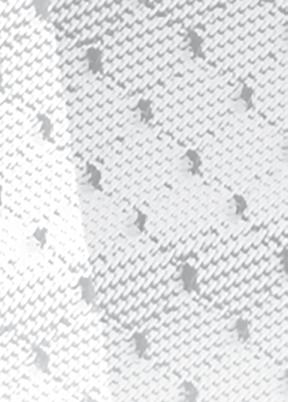
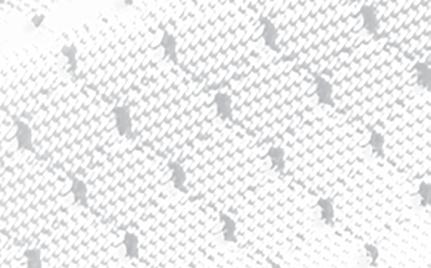



When the Centers for Disease Control and Prevention (CDC)in Atlanta began the process of developing training protocols for participants of amateur sports in the U.S., they rang NASO headquarter in Wisconsin for assistance.
After more than a year of work and consultation, the CDC launched HEADS UP this past October, which is a free online concussion safety training program specifically for sports officials.

While medical treatment is best left to onsite trainers and other medical professionals, sports officials can play an important role in determining when to get athletes out of the game by properly noticing symptoms explained by athletes and notifying medical personnel onsite.
“We are excited that this training is tailored for sports officials and aimed at our specific duties related to concussions,” NASO Chief Operating Officer Bill Topp said. Topp, along with NASO Chief Business Development Officer Ken Koester provided guidance and critical sports official perspectives to the CDC to make sure the training was created with sports officials’ needs in mind.
“This type of training is good for officials in all sports at all

levels and the content will make for great discussion at officiating clinics and meetings,” Koester added.

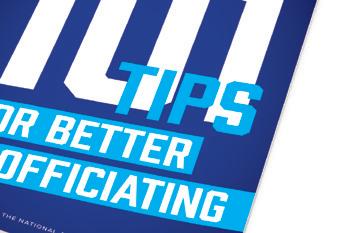


The free training is available on the CDC’s TRAIN platform at www.train.org/cdctrain/ course/1105618 and consists of three lessons that are approximately one hour in length.
The first lesson covers concussion basics, including how concussions can occur, examples of concussion signs (things a sports official might be able to observe in an athlete) and symptoms (things an athlete experiencing a concussion might feel internally). Lesson two explores best practices for player removal and guidance on documentation, and how to communicate with parents and coaches about concussion safety. And the third lesson covers a sports official’s role in concussion prevention and safety.




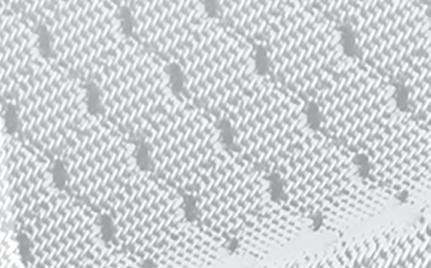


“NASO is proud to have worked with CDC to create this first of its kind officiatingspecific online training on concussion,” NASO President Barry Mano said. “We officials have a role to play in concussion safety and now we have a tool with practical advice to help us recognize the signs and symptoms of concussions and to take action when needed.”


It’s time to join the rest of us in the National Association of Sports O cials. Not only will you continue to receive the world’s #1 o ciating publication, you’ll enjoy all of the additional benefits NASO members enjoy.
Go to naso.org/upgrade2023 to join NASO for the special introductory price of $114 and receive these two FREE books!
In an effort to limit potential collisions and injuries, softball organizations have adopted the use of a double base at first base. And while the use of such bases is not mandatory in all codes, chances are you’ve come across them at some point in your career. While USA Softball requires a double base at first, NFHS rules allow state associations
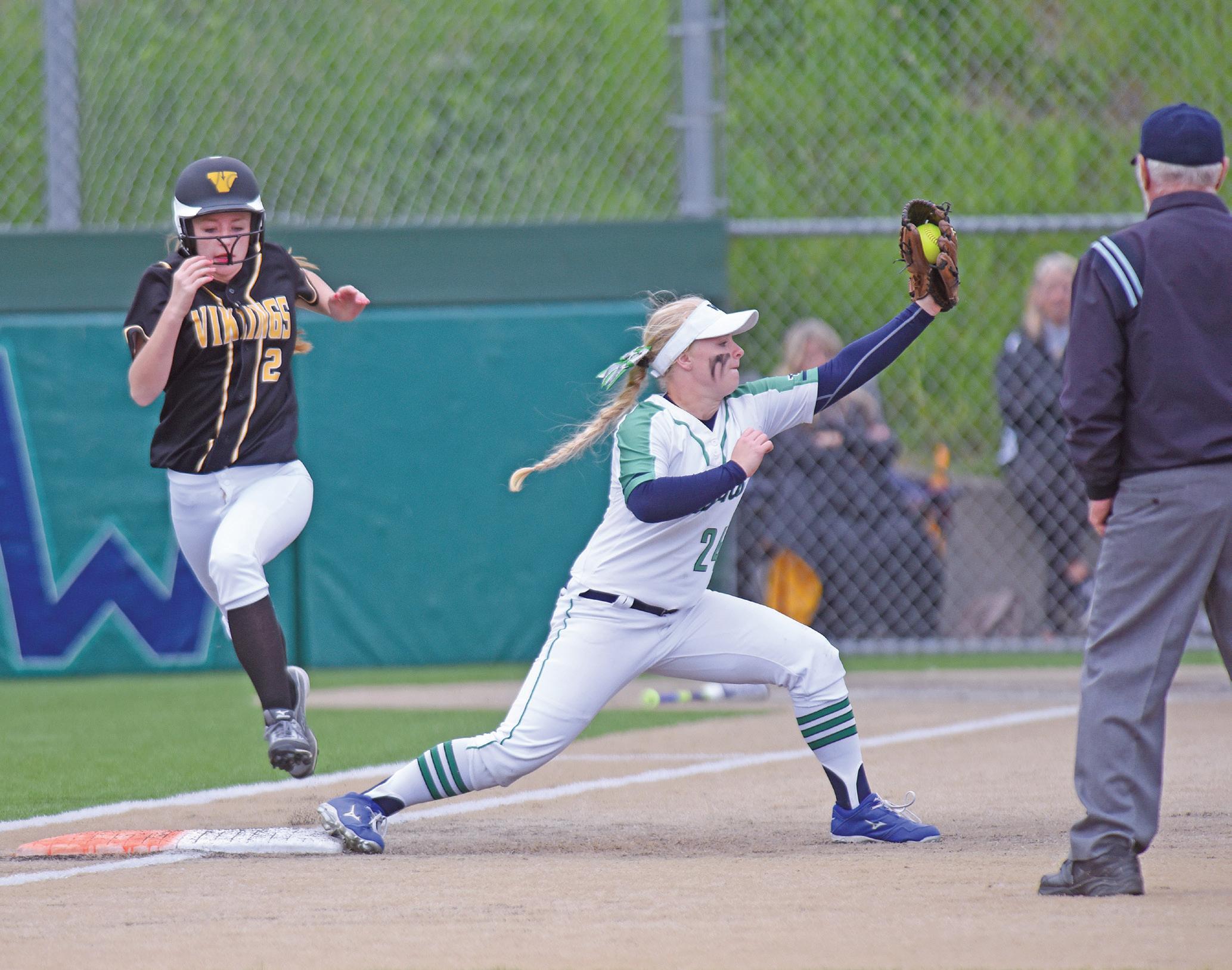
to adopt its usage, USSSA allows it but does not require it, and NCAA currently has its usage as an experimental rule (NFHS 1-2-1 Note; NCAA 2023 Experimental Rule; USA Softball 8-2n; USSSA 8-19).
The good news for umpires is the rules are pretty similar for all four codes, at least on the initial play at first base. There are some major differences after the initial play between NCAA rules and the other
three codes, but let’s first take a look at the basics.
All four codes require the double base to be 15 inches by 30 inches with a white base in fair territory and a colored base located fully in foul territory (as shown in the MechaniGram). A batted ball hitting or bounding over the white portion of the bag is a fair ball. A batted ball hitting or bounding over the colored bag is foul.
When it comes to making plays at first base, things get a little more complicated. When a play is being made on a batter-runner, the defense must use the white portion of the base and the batter-runner must use the colored portion, with some exceptions, which will be explained later. If a batter-runner uses only the white portion of the bag when a force play is being made at first and arrives before the ball, it is treated the same as if the batter-runner missed the bag. The defense must properly appeal before the batter-runner returns to touch either portion of the base.
For throws coming from fair territory or from foul territory on the third-base side of the field, if there is a collision, the umpires must determine if it is incidental contact, interference or obstruction. If the batter-runner collides with the fielder who is only on the white portion of the bag attempting to catch the ball, it is interference. If the fielder is only standing on the colored portion of the bag and there is a collision prior to the fielder catching the ball, it is obstruction. If both players are doing what they are supposed to do and there is a collision, it may be incidental contact and no penalty assessed.
There are some situations where the fielder and batter-runner can use either portion of the bag. If the throw is coming to first base on a force play on the batter-runner from the foul side of the first-base line or if an errant throw pulls the fielder into foul territory, the fielder and batter-runner may use either base. This is where a lot of collisions are likely to occur. If a throw pulls the fielder into foul territory, there may not be enough time for the batter-runner to adjust and this is where contact most likely will occur.
Umpires must determine if there is malicious contact or incidental contact and then also determine if there is obstruction if the fielder is in the way of the batter-runner and is not in possession of the ball.
Another caveat to the rule is when a batter-runner is required to run to first base, yet no play is being made on the batter-runner. In these instances, the batter-runner may utilize either base. However, after that is where the codes differ a little bit. In NFHS, USA Softball and USSSA, the double base becomes one big base. A runner may touch either base when returning to the bag, when tagging up to advance on a fly ball or when preparing to leave the base on a pitch. A fielder may also use either base when making a play on a returning runner.
NCAA rules differ, however, once the batter-runner reaches first base. In NCAA, the colored portion of the bag “disappears.” A runner must use the white portion of the bag. If only standing on the colored portion, it is considered the same as a runner not in contact with the base. The same is true for fielders. The fielder must touch the white portion of the bag when making a play on a returning runner. This is important to remember because a batter-runner who overruns the base and then returns to just the colored portion will be ruled out if tagged while on that colored portion only or if the ball is returned to the pitcher in the pitcher’s circle, the batter-runner would be called out for a look-back rule violation.
It is important to understand the rules when working with the double base to make sure you handle situations correctly. If you work multiple codes, it is vitally important to refresh yourself on the rules for that particular code that day. Study the rules, run through scenarios that may happen and remember to watch the entire play to make a correct ruling when you have a game using the double base.
Brad Tittrington is an associate editor for Referee. He umpires D-I softball and officiates women’s college and high school basketball, college and high school volleyball and high school football.

There will be three national umpire schools for USA Softball for the 2023 year. Below are the locations and dates of the three schools. Go to teamusa.org/usa-softball/ umpires/national-umpire-schools for more information.
Feb. 17-19 Idaho Falls, Idaho
March 11-12 Dublin, Ohio
April 21-23 Bismarck, N.D.
When preparing for a test, use a study group. Most codes allow you to print out a test before having to take it and turn it in. Using study groups will help you understand the questions and the rules better. The goal is to get you into the book and have you talk about the rules. By utilizing a study group, it allows you talk about the rules and potentially come up with other scenarios, which ultimately will make you a more knowledgeable umpire.
Rules surrounding the pitching position have changed significantly in all codes over the past two years. Pitching rules are perhaps the most important rules to know and understand and it is important for umpires to stay on top of the rule changes. Everything Pitchers Can and Can’t Do breaks down every rule involving the pitching position from uniforms to taking signals to gloves and is updated with all 2023 rule changes. The digital book can be purchased at store. referee.com for $13.95.

Each of the following includes a situation and possible answer(s). Decide which are correct for USA, NFHS, NCAA or USSSA rules and which might vary. Solutions: p. 85
1. With R3 on third, R2 on second and R1 on first with two outs, B6 hits a home run. The defense successfully appeals R1 missed second. How many runs score?
a. One.
b. Two.
c. Three.
d. Four.
e. Zero.
2. Which of these statements about three-foot-lane interference are correct?
a. It occurs when F2 withholds her throw in fear of striking advancing B1 running in fair territory.
b. It occurs when B1 is struck in fair territory on F3’s throw to the plate.
c. It is primarily the base umpire’s call.
d. It can occur on a throw from foul ground.
e. The base umpire will signal a delayed-dead ball when it occurs.
f. When called, other runners are returned to the bases occupied at the time of the pitch.
3. Which of the following are considered appeal plays?
a. R1 is doubled off first base after F6 catches a line drive and throws to F3 on first base before R1 returns.
b. R3 slides by the plate without touching it and F2 immediately dives and tags R3.
c. After overrunning first base and taking two steps toward second base R1 is tagged before returning to first base.
d. F2 asks the plate umpire to check with the base umpire regarding B1’s checked swing.
e. The defensive team head coach alerts the plate umpire that the offense batted out of order.
4. The ball remains live in which of the following situations:
a. A confused runner runs back toward a previous base.
b. A runner passes a preceding runner.
c. A runner illegally runs out of the baseline.
d. The batter-runner steps back toward home to delay or avoid a tag.
e. A base coach assists a runner by grabbing the runner or pushing a runner toward the next base.

USASoftball adopted seven rule changes during its annual council meeting this past November in Shreveport, La., with the majority of changes happening on the slowpitch side. The council accepted two changes to its fast-pitch rules, one that deals with bat certification marks and the other concerning courtesy runners, and passed five rule changes to the slow-pitch game.
“For the most part, we feel both the fast-pitch and slow-pitch games are in a good place,” said Kevin Ryan, director of umpires for USA Softball. “The slow-pitch game is unique in its own ways and players have definite opinions on where the game should be. I think in fast pitch you have NFHS, NCAA and travel ball in USA Softball basically playing by the same rules and the players love the game as it is.”
Below is a breakdown of the rule changes. Referee would like to thank Ryan for reviewing this article.
Bat Certification (3-1a Exc.)
USA Softball now allows any bat bearing the USA Softball, USSSA or WBSC certification mark that passes the USA Softball Fast Pitch Compression test thresholds to be used in the Men’s Major and Men’s Open Fast Pitch Championships. Previously, USSSA and WBSC certification marks were not allowed, but the new rule allows players to use bats that meet the USA Softball standards that players currently use in those federations.
Play 1: During a Junior Olympic game, the plate umpire notices a bat with a WBSC certification mark, however there is no USA Softball certification mark on the bat. Ruling 1: The bat would be illegal as the rule change only affects bats in the Men’s Major and Men’s Open Fast Pitch Championships.
Play 2: During the Men’s Major Fast Pitch Championships, a bat has a USSSA certification mark only and
(a)passes compression testing, or (b)fails compression testing. Ruling 2: The bat would be legal in (a) as the rule change now allows USSSA stamped bats, provided the bat passes compression testing. In (b), the bat would be illegal as it did not pass compression testing, despite having an allowable certification mark.





The second and final change to the fast-pitch game involves the use of courtesy runners. The change only affects Masters and Seniors divisions and allows a courtesy runner to be used only once per inning for any player other than the pitcher or catcher. In the past, courtesy runners were only allowed for pitchers and catchers. This clarification allows for an additional courtesy runner once per inning for an additional player.
Previously, any offensive or defensive player was able to wear

a helmet at any time. In 2020, USA Softball adopted a rule that stated helmets shall have a non-glare (not mirror-like) surface. Updating the rule for 2023, all slow-pitch divisions may use a helmet with a reflective or mirror-like finish. These types of helmets are still illegal in the fastpitch game, however.
In order to allow more over-thefence home runs in the slow-pitch game, the council increased the limit in several divisions. In Men’s Class B, the limit was increased to seven (previously was six). In the Men’s, Women’s and Co-Ed Class C divisions as well as the Men’s Masters 35, 40 and 45-over division, the limit was increased from four to five. In the Men’s, Women’s and Co-Ed Class D divisions, the limit is increased from two to three. And in the Class E/Rec division, the limit is increased from none to one. The penalty remains the same for any home run hit beyond
the allowable limit in that the ball is dead, the batter is out and runners may not advance.
“Feedback from the players is what drove this change,” Ryan said. “We believe the equipment — bats and balls — is in a good place in our slow-pitch game. Most of the time, those who can hit it out do, and those who can’t don’t. Allowing one more home run in these classification fits that narrative. Especially true about the D and E divisions.”
Play 3: In a Men’s Class B division game, the home team has already hit seven home runs. B1 comes to the plate and hits a ball to deep left field. The left fielder jumps in the air and the ball ricochets off his glove and ends up going over the fence (as shown on the PlayPic on the next page). Ruling 3: In this instance, the batter is awarded four bases and is not considered a home run that counts against the team’s limit. All runs would count and no penalty is assessed (5-8 Note).






Softball’s most complicated rules are explained in everyday language and reinforced with 100s of illustrations. only $10 each



Play: With two outs and R2 on second, B4 hits a ground ball between the third baseman and the shortstop. F6 makes a diving attempt for the ball but misses it and the ball goes into left field. R2, seeing the ball get by F6, runs to third base. As R2 approaches third base, F5 steps to the side of the third-base bag and fakes that she caught the ball coming in from left field and tags R2, who slides into the bag thinking F5 has the ball. Ruling: In all codes, obstruction should be called. It is the umpire’s judgment to which base the runner could have advanced had obstruction not occurred. In NFHS, the coach of the defensive team is given a team warning and the next offender shall be restricted to the bench/dugout for the remainder of the game. In NCAA, subsequent violations by the same player may, at the discretion of the umpire, result in a one-base award to the obstructed runner and each other baserunner forced to advance. In USA Softball, continued fake tags should result in ejections. In flagrant cases where a player is injured, the fielder should be ejected without warning (NFHS 2-21, 3-6-2, 8-4-3b; NCAA 9.5.3.5 Eff., 12.12.6.1; USA Softball 1Fake Tag, 8-5b, R/S 19; USSSA 8-13c).
DP/Flex
Play: At the plate meeting at the beginning of the game, the lineup cards for both teams are ruled official. The home team lineup shows Jones listed as the DP in the fourth spot in the lineup and Smith listed as the Flex in the 10th spot pitching. The home coach notifies the plate umpire, after the cards have been ruled official, the DP is going to pitch. In the third inning, the same coach notifies the plate umpire Smith is going to pitch. In the sixth inning, the home coach notifies the plate umpire Jones is going to go back to pitcher. In the bottom of the seventh inning, Jones gets a base hit and the home coach wants to have Smith run for Jones. Ruling: In all codes, this should not be allowed. Smith has left the game two times, once at the plate meeting and once in the sixth inning, and has no re-entry rights left (NFHS 3-3-6; NCAA 8.2; USA Softball 4-3, R/S 15; USSSA 5-4).
Time Limits (5-10d)
Prior to this year, all Junior Olympic slow-pitch games had a time limit of 1 hour and 10 minutes. The new rule removes the Boys 14U, 16U and 18U divisions from having this time limit. In those three divisions, a team will play seven innings, regardless of the time.
Touching Bases (8-3i)
This rule change adds Junior Olympic Boys slow pitch to the exception that does not require runners to run the bases on an overthe-fence home run. In these cases, the batter and all runners on base are credited with one base and they simply can return to their dugout. This prevents any possibility for the defense to appeal missed bases or

any other baserunning infraction and helps speed up the game.
Courtesy Runner (8-9b-2)



The final rule change simply states that in slow pitch, if a team uses a courtesy runner, that courtesy runner may not be replaced by a substitute. This pertains to all division of slow pitch.
Play 4: In the top of the fourth, B1 hits a single. Team A’s coach puts in an eligible courtesy runner to run for B1. B2 then hits a single to right field. B1 only advances to second base and team A’s coach wants to substitute another player for B1 who the coach believes is a faster runner. Ruling 4: Illegal. Once a courtesy runner is entered to run, that runner must complete the running duties, unless injured.

No matter how many games you’ve worked there’s still STUFF nobody told you. Until now! Referee has collected all the STUFF you need to know to polish your game and present a professional image. Don’t work another game without all this valuable STUFF.



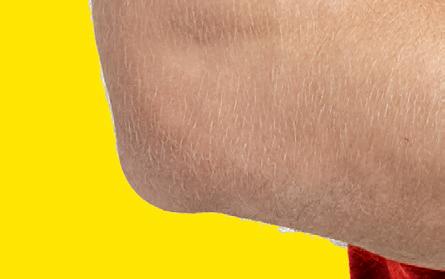















Inorder to correct breakdowns that have been happening with specific plays at third base, the NCAA has adopted new mechanics for the 2023 season. The changes specifically deal with coverage of the batter-runner at third base on triples.
The change applies in the threeperson system when U1 starts on the line and U3 chases (see MechaniGrams A and B) and in the two-umpire system when U1 starts on the line and there is a triple (see MechaniGram C).
In the past, U1 was responsible for all plays at third base involving the batter-runner. Now, the plate umpire has this responsibility. The reason is to allow an umpire to be in front of the play as opposed to chasing from behind. Before, U1 would follow the batter-runner into second base and as the batter-runner touched second and started toward third, U1 would cut inside the diamond and make a beeline for third. This often put the umpire behind the play and caused a bad angle to make rulings at third base.
Sometimes, it also created confusion as to which umpire was going to take the play at third base. Plate umpires would often read the base umpire behind the play and would make their way up the line toward third base in anticipation of needing to make a call.
The new mechanic allows the plate umpire to be in a much better position and stay ahead of the play. This allows the base umpire to stay near second base in case the batter-runner retreats and allows the plate umpire to be set and have a great angle from in front of the play to rule on all plays.
It is still vitally important for umpires to communicate and read each other to make sure the play is covered. While it is important to use the prescribed mechanics, things happen during games that force umpires to deviate. In all cases, when umpires deviate, they should communicate. However, the prescribed mechanics should be used if at all possible and deviations should only happen when there is a breakdown with the crew.
Plays at the plate happen very quickly. It is important to have the right angle from the right distance in order to get these calls correct. Herb Huitt, Anaheim, Calif., is doing everything correct to give himself the best chance to get the call right.
Does a great job of working the wedge to be able to see the area between the catcher’s glove and the sliding runner’s body in order to see if there is a tag.
1 3 4 5 2
Is in an athletic position and able to move and adjust his position as the catcher moves.

Gives himself some depth so the play does not blow up on him.


Has a great view of the catcher’s feet to make sure obstruction did not occur prior to the catcher possessing the ball.
4
3
cooker.
Suppose you ask most veteran sports officials privately. In that case, they will tell you the quality of officiating has never been better than it is today but officiating itself has never been more challenging. Fans, coaches, administrators, television and radio announcers and commentators and social media often drive the narrative, even though most of them have no idea how officials prepare for a game and then go about administrating the game and the rules.
Officiating has gotten more complex, set within the broader society that seeks to right every wrong, to have any perceived injustice addressed or, in the case of sports, each “thought-to-be-wrong call” righted.
Officials are now being asked to do what most others in positions of authority are loath to do: know what the rules require and then enforce them impartially. As every official knows, that takes character, commitment and courage.
Five leaders in the officiating community were part of a panel at last summer's NASO Summit in suburban Denver to discuss some of the techniques they have used to improve their work and, equally important, develop and mentor new officials.
Sandra Serafini is a retired FIFA men’s and women’s professional and collegiate soccer referee, an assistant professor at Duke University Medical Center’s Department of Neurosurgery and a current NASO board member.
Joe Vaszily is a veteran NCAA Division I women’s basketball official with 19 NCAA tournament appearances and nine Final Fours, including the 2018 National Championship game.

Debbie Williamson is the former NCAA women’s basketball secretary-rules editor from 2006-14 and national coordinator of officiating from 2011-14. She is currently the coordinator of women’s basketball officials for the ACC, American Athletic, Atlantic 10, Big East, Big South, Colonial Athletic Association, Ivy League, MAAC and Southern conferences. She was NASO board chair in 2019.
Elaine Wright is an active high school volleyball and basketball official She is a retired Rocky



Mountain Athletic Conference and Region IV basketball referee and a retired Colorado Volleyball Officials Association and Colorado Springs Basketball Officials Association board member.
Ernie Yarbrough is the assistant executive director and coordinator of officiating for the Georgia High School Association, the former director of officiating for the ABL Women’s Professional Basketball League and the 1995 Naismith High School Basketball Official of the Year in Georgia.
All the panelists agreed there have been significant changes in the behavior of fans, athletes and coaches in the last several years and not for the better. Wright set the tone for the conversation on the panel.
“I think the noise is today a lot about the behavior of the fans; it includes the parents, even the behavior of the kids, the coaches and sometimes the administrators, unfortunately.”
Yarbrough said officials in Georgia have had to be proactive in dealing with the challenges brought on by the changes.
“At the high school level, the issue that we’re dealing with right now about the noise is an open season about social media,” Yarbrough said. “People hide behind social media and they take potshots at officials. And that is the thing that is tough to deal with, especially at the administrative level at our high school association. We have had to look closely at that and set some serious penalties when that happens.”
Vaszily said the oncourt behavior of athletes also translates to increasing nasty actions by fans and coaches.
“I think at the college level, you have seen a dramatic shift in, I would say, the balance of power to student-athletes given NIL (Name, Image, Likeness), transfer, all these things that allow them to do a
lot of different things and it is reflected on the court,” Vaszily said. “Behavior has gotten worse and I think it has been a quick shift in the last five years to where we are today.”
As she sees it, Serafini said the “noise” is increasing. It is coming more from people who feel they have a certain level of expertise in officiating when, in reality, they have little or no understanding of the official’s role in officiating the game and ensuring both teams have an equal chance to win.

“At the professional level, we think of noise as three layers. We have sort of withingame noise that happens on the field, sort of adjacent

to make that “tough call” on the field with coaches, administrators and fans up in arms and possibly taking to social media platforms to complain, especially if the call goes against their team. The complaints begin and can be vicious.
“From a high school perspective, I think the disconnect sometimes is the assigner or the leader passive with dealing with the situation,” Wright said. “So you tell the official to implement a rule to do exactly what the rulebook says and they do it. Then when the coaches or the administrators come to you, you take a passive and backseat to it and kind of try to work to make both sides think that everything is OK.
“I think that creates a disconnect,” Wright continued, “because why am I going to trust you as my leader when you are not supporting me? It would help if you were saying they applied the rule, it is correct and you need to change your behavior. So I think it is essential that we come together. And when our administrators, our assigners, tell us to do something that they allow us to do and they support us when we do it.”
game noise that happens immediately surrounding the technical areas and coaches and other staff. Then there is outside-the-game noise,” Serafini said. “I think the biggest shift we must deal with is a societal shift through distrust of expertise.”
Two of the panelists said some of the “noise” officials experience comes from the differences that officials face when it comes to theoretical discussions of enforcing particular rules in a classroom or discussion setting, among other officials and then having
“I think what gets lost in some of this in what we’re talking about,” Williamson said, “is while officials are waiting or wondering if we’re going to support them, some are erring on the side of not penalizing maybe, and then the behavior is escalating.
“And I think that is really where we are going with this is the difference is not only in what people are doing on the field and floor but what we’re doing as administrators, to Elaine’s point, to make you feel supported when you enforce those rules.”
Yarbrough says there sometimes is a difference between pro, college and high school sports. He also points out officials at the lower levels
get less attention than those at higher levels. But he says officials are still under pressure to get the calls right.
“I think we are getting there at the high school level, unlike the level that Joe works at and what Sandra is alluding to at the professional level. Every one of the games that Joe works is observed, it is evaluated, it is kicked up to you,” Yarbrough said. “And if there are issues, if you feel that Joe should have dealt with something with a coach, you are going to let him know if he did not.
“At the high school level, not every game is videoed, nor is it observed and evaluated,” Yarbrough added. “And so it is tough when we at the state office get game reports for sportsmanship issues. We react to those immediately. None of those get filed in file number 13. So we are trying to get there. We are trying to support our officials more than we ever have when it comes to sportsmanship because of the level of unacceptable behavior that is taking place. It is a little more difficult at the high school level, but I do know that when unsporting game reports cross my desk or cross the desk of any of our sports coordinators, they are dealt with.”
Vaszily said officials must go into a contest with an open mind; however, he says because of the environment they are working in today’s society, it is incumbent upon them to be aware of what they may be facing before stepping into the arena or onto the field.
“We have a responsibility to have a heightened awareness of what it looks like and have the courage just to penalize the bad behavior when it happens. It is in rule 10 in our rulebook,” Vaszily said. “The matchup determines it. Conference play determines it. The records of the teams going into it as they are fighting for a playoff spot are all kinds of intangibles that we probably
do not think about or think about them at a high level.”
But that level of officiating does not come overnight. It takes experience and training, the panelists said, to have the confidence to control the game, be fair to both teams and not be overbearing.
“We need to teach officials how it feels, what it looks like,” Williamson said. “Does anybody have any pregame advice because we all talk about, ‘Oh, we have got to pregame this and pregame that?’ Because on the other end of the spectrum are those officials who have a short fuse and say, ‘Oh, not here tonight.’”
The veteran officials said it all comes down to improving training, including improving the soft skills of officials at all levels.

“I think one of your biggest challenges, and I think it is essential, especially for younger officials, is you have got to teach them there is a difference between communication and confrontation,” Yarbrough said. “That is huge. And many younger officials do not understand that there is a difference. And if you can teach them those soft skills and the difference, we are communicating now, but, coach, once we become confrontational, this communication is ended. And they have either got to deal with that or walk away,
one or the other. But do not continue being drawn into that confrontation, especially regarding a coach/official’s relationship.”
But the panelists believe that even with better training, the level of competition and the intensity is increasing because of the money involved in sports at all levels, which adds to the noise.
“The amount of money that has come into youth sports compared to even five years ago, where even at the youth level directors of coaching are at six-figure salaries,” Wright said. “The parents who are spending thousands of dollars per season as the investment portfolio to get their kids to college potentially on a free ride, the stakes financially have become so high that everything is fair game to get a win. We are also fair game. So any advantage they can get in a game, including the officials, is all fair in love and war.
“And games now are not games anymore. They are mini-wars. And whatever they must do to win, wherever they can get an advantage, we are fair game in that. And I think having the officials understand that and the financial pressures being brought in, is not just a game.”
Dan Ronan is the managing producer/senior reporter at Transport Topics at ttnews.com. He is also the host of Transport Topics Radio on SiriusXM Radio Channel 146. *
When officiating a play, knowing what is legal and what is not is the first step. Getting in the right position follows. However, there are instances in which the correct position per the applicable mechanics manual may not be the best position. Angles play a crucial role in judging just about every foul. We can consider the role of an angle from two different perspectives: Is it a foul and did the official have a good view of the act?
The first perspective relates to the angle of contact. Certain acts are only fouls if the contact is initiated from a certain angle. There are fouls particularly dependent on the approach the blocker takes to an opponent. The angle of the approach will be described by use of a clock where 12 o’clock is directly in front of the player and 6 o’clock directly behind him. Our clock does not have any minutes, so what is offered is an approximation and judgment must always be exercised.
Block in the back. It would be very difficult to argue a 10/2 o’clock block is in the back, but 9/3 o’clock blocks have been so flagged. Such an erroneous call is based on the thought mere contact on a player’s back qualifies as a block in the back.
The placement of the hands or shoulder on the opponent during the block is a good indicator of whether or not the block is legal. If an official can see both jersey numbers, unobstructed, on the back of the player being blocked when the initial contact occurs, it’s difficult to rule such contact a foul. A foul should be called when the primary force is on the back rather
Viewed from a variety of angles, this block could be seen as legal or illegal. Perspective is often critically important in making correct decisions on certain plays.

than from the side. Officials can also be guided by how the blocked player falls. A face-down encounter with the ground should erase any doubt the block was in the back.
Mere contact with the opponent’s back, such as a slight brush that does not change the contacted player’s stride, is not a foul. However, if the defender stumbles and misses an opportunity to make a tackle, it is a foul within the intent of the rule (NFHS 2-5-2, 9-3-5; NCAA 2-3-4a, 9-3-5).
Blindside block. The two codes have similar definitions for a blindside block and both are designed to protect players who cannot reasonably defend themselves against a block initiated from outside their view (NFHS 2-3-10; NCAA 2-3-7). It is illegal to initiate a blindside block with forcible contact unless made with open hands (NFHS 9-4-3n; NCAA 9-1-18). Whether or not the blocked player saw the blocker approach is totally a judgment call. That can be discerned by noting whether the blocked player was able to react to the pending contact by making an effort to fend it off. The angle of the approach must also be taken into account. The closer to 12 o’clock the approach, the more likely the blocker was viewed. The official’s angle of view also comes into play when determining whether or not the block was initiated with open hands. In some cases a player will use his chest to initiate the block and then use his hands to get the opponent to the ground; that makes the block illegal.
Blocking below the waist. In NFHS play, it does not matter from which angle the blocker approaches the opponent. It is a foul for a low block if the contact is below the waist from the front (10-2 o’clock) or from the side (8-10/2-4 o’clock). If any part of the blocker’s body makes contact at the waist, it should not be considered a low block (2-37). The rule is intended to protect the opponent’s knees. The NCAA rule (9-1-6) is more complex and although blocking below the waist is permissible in a wider variety of scenarios, some players in specific situations can only legally block low if the approach is from 10-2 o’clock.
Spearing (NFHS) or targeting (NCAA). Those fouls are dependent upon the angle with which the head makes contact, but the angle of view plays the major role in calling that foul correctly; that then is our second perspective. While virtually no foul can be properly discerned from all angles, there are acts which may appear to be one thing from certain angles, but clearly are not when properly viewed. The most vivid example is probably determining if a runner has stepped on a sideline. If the official is straddling the sideline, he will have the best possible view of the runner’s foot. However, an official in the middle of the field could not properly make an out-ofbounds call.
Targeting. There are two types of targeting under NCAA rules (9-13, 9-1-4). In NFHS, the use of the head as a weapon is called spearing (2-20-1c) while contact against an opponent above the shoulders is targeting (2-20-2). Because this foul is so angle dependent, the NCAA has mandatory review procedures and the results they’ve gotten are a testimony for the need of a video review. Just prior to the 2021 bowl season, targeting was called on the field 203 times but only confirmed 39 percent of the time. Replay created a targeting foul 83 times. So if we assume an insignificant number of fouls were missed by either process, targeting was properly called 28 percent of the time. The crux of the problem in calling a targeting foul is because whether or not there was head contact can only be determined from a very specific angle.
Defensive pass interference. There are several types of defensive pass interference and for all of them, the officials can benefit from multiple views. As an example, only one official might be able to view an arm bar. The act for which the angle of view is paramount is playing through the back of the receiver. Officials who are positioned so they can look between the players will have the decisive view.
George Demetriou has been a football official since 1968. He lives in Colorado Springs, Colo.
Games don’t come much cleaner than the Nov. 19 IowaMinnesota game. No fouls were called in the game. That hadn’t happened in an FBS football game since the ArmyNavy game Dec. 6, 1986.
The Oct. 29, 2022, game between Division III rivals Hampden-Sydney and Guilford was played at only one end of the field after a tractor cutting the grass went off its course and knocked over one of the goalposts. Punts and turnovers could be returned to the postless end of the field, but once the ball was dead, the ball was re-spotted in the other direction. The same procedure was used for the Northwestern-Illinois game at Wrigley Field in 2010 as well as the Jacksonville StateNorth Alabama tilt at a minor league baseball stadium earlier last fall.
SOURCE: OUTKICK.COM
Veterans Day means a little bit more to eight NFL officials. They all served in various branches of the armed forces. Marine Corps — Rusty Baynes; Army National Guard
— Frank LeBlanc; Air Force
— Dyrol Prioleau and Mearl Robinson; Marine Corps and Reserves — Greg Steed; Army Infantry — Greg Yette; Navy
— Matt Sumstine; US Army National Guard and Reserves
— Artenzia Young-Seigler.
In each of the following you are given a situation and at least two possible answers. You are to decide which answer or answers are correct for NFHS and NCAA rules, which might vary. Note: In kicking situations, K is the kicking team, R the receiving team. Solutions: p. 84
1. First and 10 at team A’s 20 yardline. A1 catches a legal forward pass at the 50 yardline and is advancing toward team B’s goalline. B2 is able to catch A1 at team B’s three yardline and punches the ball loose. The ball rolls into the end zone, where it is recovered by B3. B3 is contacted before he can advance, fumbles and the ball rolls out of the back of the end zone.
a. The momentum exception applies; team B’s ball at its own three yardline.
b. Safety; two points for team A.
c. Touchback; team B’s ball at its own 20 yardline.
2. K1’s punt from his own 25 yardline is in the air over team R’s 45 yardline when R2 raises one hand over his head but doesn’t wave it. The ball bounces off R2’s chest and rolls to the 50 yardline, where R3 recovers it while on his feet.
a. R2’s fair catch signal is valid.
b. R2’s fair catch signal is invalid.
c. R2’s fair catch signal is illegal.
d. The ball is dead when R3 recovers it.
e. The ball remains live when R3 recovers it.
3. Second and nine on team A’s 40 yardline. A1 fumbles at his 35 yardline. While the ball is loose, A2 is flagged for a personal foul at team A’s 45 yardline. A3 recovers the fumble at his 33 yardline and advances to his 41 yardline. The penalty is accepted.
a. The penalty is enforced from the previous spot.
b. The penalty is enforced from the spot of the foul.
c. The penalty is enforced from the spot of the fumble.
d. The penalty is enforced from the end of A3’s run.
4. Fourth and 10 from team K’s 20 yardline. At the snap, team K is flagged for an illegal formation. R1 catches the kick on the 50 yardline and advances to team K’s 45 yardline, where his facemask is grabbed and twisted by K2. R1 fumbles and K3 recovers on team K’s 35 yardline.
a. Team R can accept both penalties.
b. Team R may choose which penalty to accept.
c. Team R must decline both penalties in order to get possession.
By Jason NicklebyFootball officials are fond of coming up with “what if” plays that are so outlandish and rare, you would have a better chance of winning the lottery than seeing one of those plays come to fruition. A foul at the end of a period may seem like one of those extraordinarily uncommon plays (I have only experienced one such foul in the last 10 years), but they can haunt you if you do not take your time and exhaust the list of requirements to manage the situation correctly.
Both NFHS and NCAA use similar language to indicate a period will be extended for an untimed down if one (or more) of the following occurs during a down in which time expires. After that, each code arrives at a similar place from a slightly different angle.
In NFHS rules, if a penalty is accepted by either team (except unsportsmanlike fouls, nonplayer fouls, fouls that specify a loss of down, fouls enforced on the subsequent kickoff as in rule 8-2, or fouls for which enforcement result in a safety), there will be an untimed down. In NCAA, an untimed down will occur if a penalty is accepted for a live-ball foul except for fouls by the nonscoring team during a down that ends in a touchdown. The newest addition to the provision calls for the offended team to have an option to extend the period if the foul is committed by the team in possession and the statement of the penalty includes a loss of down.
Play 1: As seen in the MechaniGram, it’s second and four at team B’s five yardline. A1 throws a forward pass into an area where there is no eligible receiver. When the ball is dead, time for the second period has expired. Ruling 1: A1 is flagged for intentional grounding. The half is over in NFHS because the foul specifies a loss of down (3-3-4b-3). In NCAA, team B will have a choice and will choose to end the half instead of
providing team A with another chance to score before the half (3-2-3a-1).
An inadvertent whistle as well as double fouls in NFHS and offsetting fouls in NCAA would result in an untimed down. The period will be extended until the down is free of any of those circumstances. Additionally, periods will not be extended if a touchdown is scored on the last play of the fourth period and the outcome of the game is determined.
It is critical to go through the list of circumstances that would result in an untimed down before moving onto the next period or ending the game. Rushing through situations can result in missing a reason for extending (or not extending) a period, especially in NFHS rules.
Play 2: A1 taunts his opponent at team B’s five yardline prior to crossing the goalline as the game clock hits zero at the end of the second period. Ruling 2: In NFHS, the score counts and team B has the option to enforce the penalty on the try or the subsequent kickoff. In NCAA, an untimed down will take place at team B’s 20 yardline (NFHS 3-3-4b-3, 8-2-4; NCAA 3-2-3a-1).
Play 3: Second and four at team B’s five yardline with eight seconds left in the second period. A1 receives the handoff and runs for the pylon. The line judge inadvertently sounds the whistle anticipating that A1 would step out of bounds. The ball is located at team B’s two yardline when the whistle is sounded. Three seconds remain at the time of the whistle. Ruling 3: The game clock will start on the ready signal. If team A does not snap the ball before the game clock expires, the half is over. Even though there was an inadvertent whistle on the previous play, the period will not be extended because the inadvertent whistle did not take place on a down in which time expired (NFHS 3-4-2c, 3-3-3c; NCAA 3-3-2e-6, 3-2-3a-3).
Play 4: A1 drops back to pass and, under heavy pressure, heaves the ball
downfield. B2 interferes with A3 as the game clock expires to end the first period. Prior to the pass, A4 held B5. Ruling 4: Since a double foul (NFHS) or offsetting fouls (NCAA) occurred during a down in which the clock expired, the first period will continue with the same down and distance with an untimed down (NFHS 3-3-3b; NCAA 3-2-3a-2).
Play 5: Team K lines up to punt on fourth and 14 at team K’s 19 yardline. Team K leads, 24-22. K1 muffs the snap, panics and kicks the ball off the ground at his own 10 yardline. The ball rolls out of bounds at team K’s 27 yardline. The game clock for the fourth quarter expired on the play. Ruling 5: The penalty will be enforced half the distance to the goal from team K’s 10 yardline. In NFHS, the down is replayed as an untimed down (9-7-1 Pen., 3-3-3a). In NCAA, team R has a choice to extend the period as the offended team when the statement of the penalty includes a loss of down. Team R will get the ball for an untimed down, first and goal at team K’s five yardline (3-2-3a-1). Jason Nickleby is coordinator of officiating services for the Minnesota State High School League. He is also a center judge in the Big Ten Conference.
Having a checklist of items to mentally run through before every scrimmage play is a mark of top-notch officials. It may vary by person and position, but once they settle on it they go through it without exception. Not going through a checklist before every play can undermine everything an official does well the rest of the game. I think there are some items that should be part of any official’s routine.
Confirm the next down. Two of the most egregious errors a crew can make are to give a team an extra down or take one away. In the infamous 1990 Colorado-Missouri “fifth down” game, a timeout was
called after a play, but the chain crew didn’t flip the down box. No one realized it. Colorado got another opportunity to score, won by two points and went on to win the national championship. In recent years, I know of two times a college crew screwed up. Instant replay fixed things one time but once it didn’t.
There are myriad reasons for a mistake. Maybe a penalty carried a loss of down that wasn’t applied. Maybe, after a penalty, the down should have been repeated. Maybe the down box operator messed up and no one knew it. Regardless, a mistake is a mistake, and it can be costly.
If you think something is amiss — even if no one else does — stop
the game. It’s better to have a brief interruption than to keep quiet when you might save the crew. In the games I noted above, how could it be that not one person on the crew thought something was wrong? My bet is that someone did but was afraid to speak up.
On fourth down, everyone’s presnap routine should include using the rolling fists signal. It means something different in NFHS and NCAA, but it’s important.
Distance for a first down. I liked to know the yardage needed for a first down because, in conjunction with the down, that told me what play to expect. All things being equal, it’s reasonable to expect a run on a third-and-two play and a pass on third and nine.

Safety?
Play: Second and seven at team B’s 32 yardline. A1’s pass is intercepted by B2, who is standing at his own two yardline. Before B2 can take a step, he is contacted by A3 and driven into his own end zone. B2 remains upright and runs laterally for a few yards before falling down in the end zone. Ruling: The ball belongs to team B at its two yardline. B2’s forward progress was stopped in the field of play. He was not able to advance from the initial contact. The momentum rule cannot apply because the contact by A3 resulted in B2’s ending up in the end zone (NFHS 2-15-1, 4-2-2a; NCAA 2-9-2, 4-1-3a).

Illegal Forward Pass
Play: Fourth and two on team A’s 40 yardline. A1 runs to the 50 yardline and throws an incomplete forward pass. What is the next down and distance? Ruling: A1’s legal advance preceded the illegal pass. After enforcement of the five-yard penalty from the spot of the illegal pass, the ball will still be beyond the line to gain. It will be team A’s ball, first and 10 from team A’s 45 yardline. The loss of down provision in the penalty does not apply because a new series must begin with first down (NFHS 5-1-2b, 5-1-3a, 7-5-2b; NCAA 5-1-1b, 5-22a, 7-3-2a).
Kicker Fouled?
Play: R1 dives in an effort to block a punt but misses. He slides on the ground and, when his slide ends, he is under the punter’s kicking leg, which is still in the air. As K2’s leg returns to the ground, he accidentally steps on R1. K2 loses his balance and falls. Ruling: No foul. NFHS rule 9-4-5c excuses contact on the kicker if it is “slight and is partially caused by movement of the kicker.” NCAA rules agree (9-1-16a-3).
Team K Catches Punt

Play: Fourth and nine from team R’s 38 yardline. K2 catches K1’s punt at team R’s three yardline. Ruling: The ball is dead when a team K player catches a scrimmage kick. As long as no member of team R was in position to make a catch, there is no foul for kick-catching interference. The ball belongs to team R at its three yardline (NFHS 4-2-2f, 6-5-6 Exc.; NCAA 4-1-3e, 6-3-6a).

We can’t take it to the bank, but it doesn’t hurt to be thinking that way before every snap.
Initial keys. Depending on the formation, each official will have one or more keys for whom they’re responsible at the snap. To know your keys, let the offense shift, get set and maybe send a player in motion, then take a picture of the formation at the snap. Number 42 may have been your key when team A initially lined up, but after it shifts, maybe number 87 is your key at the snap. As the play develops we may pick up a key, replace one with another, etc., or go to zone coverage. But we need to be watching the proper players when the ball is snapped.
Having two (or more) sets of eyes on some players and none on others can cause us to miss something big. In NCAA games, for example, outside receivers can’t come back inside and block a defender below the waist toward the original position of the ball. That crackback block can cause a crippling injury, and if, because of a miscommunication or misunderstanding, no one is keying
on the blocker the foul won’t get called.
Boundaries. Depending on the level you work, the rules may involve lines of demarcation. A quarterback, under pressure, can legally ground a pass if he gets outside specific areas. To properly apply rules with such boundaries, we have to get a fix on where they are, and that has to be done before each snap.


Given the different duties of crew members, some pre-snap routines will contain items that others don’t. For example, officials responsible for counting players must be cognizant of who’s on the field after a play, entering and leaving. The wing officials must think about whether team A’s formation is legal at the snap. Personal preference will also mean that what one official and another come up with may differ. Once you’ve refined your routine, however, don’t take a play off; go through it before every snap. Bad things can happen if you don’t. Jon Bible is a replay official in the Southeastern Conference. A resident of Austin, Texas, he formerly officiated collegiate and pro football.





There are many ways in which the ball can become dead after a scrimmage kick. It can roll out of bounds. It can be caught by a receiver and advanced. Or it can be downed by the kicking team. There’s a subtle but important difference between NFHS and NCAA rules when it comes to downing a scrimmage kick.


In NCAA play, when a scrimmage kick untouched by team R beyond the neutral zone comes to rest, team K must actually possess the ball in order to down it (4-1-3e). Simply touching it does not cause the ball to become dead.
Under NFHS rule 4-2-2f, however, the ball at rest needs only to be touched by team K, as seen in the PlayPic, in order to down it.
Here is a scenario in which the distinction matters:
Play: K1’s punt is rolling untouched 40 yards downfield. As the ball rolls to a stop, K2 places a hand on it, but does not gain possession. R3 then grabs the ball and races for a touchdown. Ruling: In NFHS,
the ball is dead when K2 touches it. Cancel the touchdown. In NCAA, the ball is not dead when K2 simply places a hand on it; he must gain possession in order to end the down. Result: R3’s touchdown counts.
In both codes, the ball is declared dead if no player attempts to secure the ball after it comes to rest.
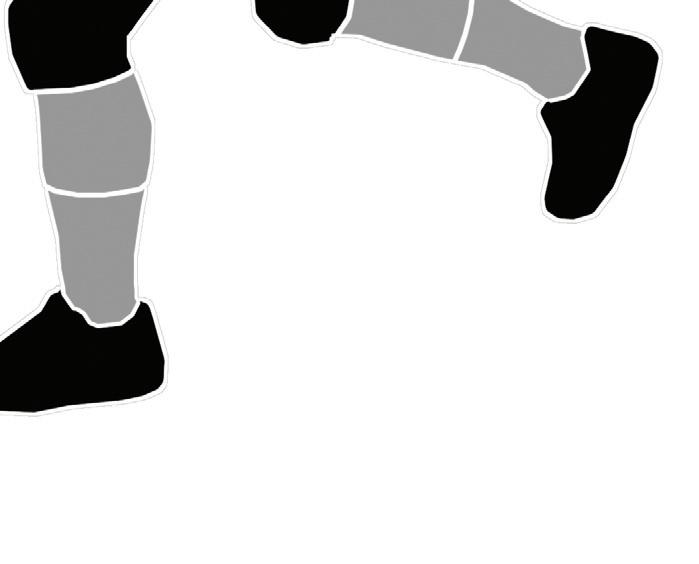
You’ll often see several team K players encircle a ball hoping it will continue to roll. Once it is clear its journey is completed, the covering official should blow the whistle to end the play. In many cases, players from both teams recognize the situation and are leaving the field. Only bad things can happen by keeping the play live at that point.
Keep in mind that in both codes a team K player may touch the ball while it’s still moving. That’s first touching (NFHS) or illegal touching (NCAA). Neither causes the ball to become dead. Mark the spot with a beanbag as it may come into play once the ball is dead.
Jeffrey Stern is Referee’s senior editor. He formerly officiated collegiate and high school football.

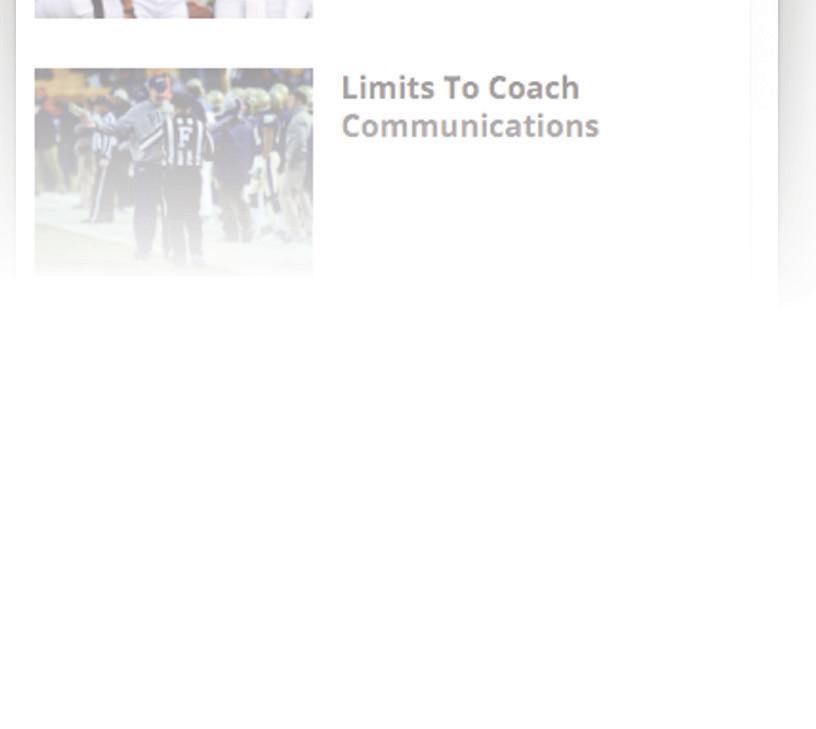

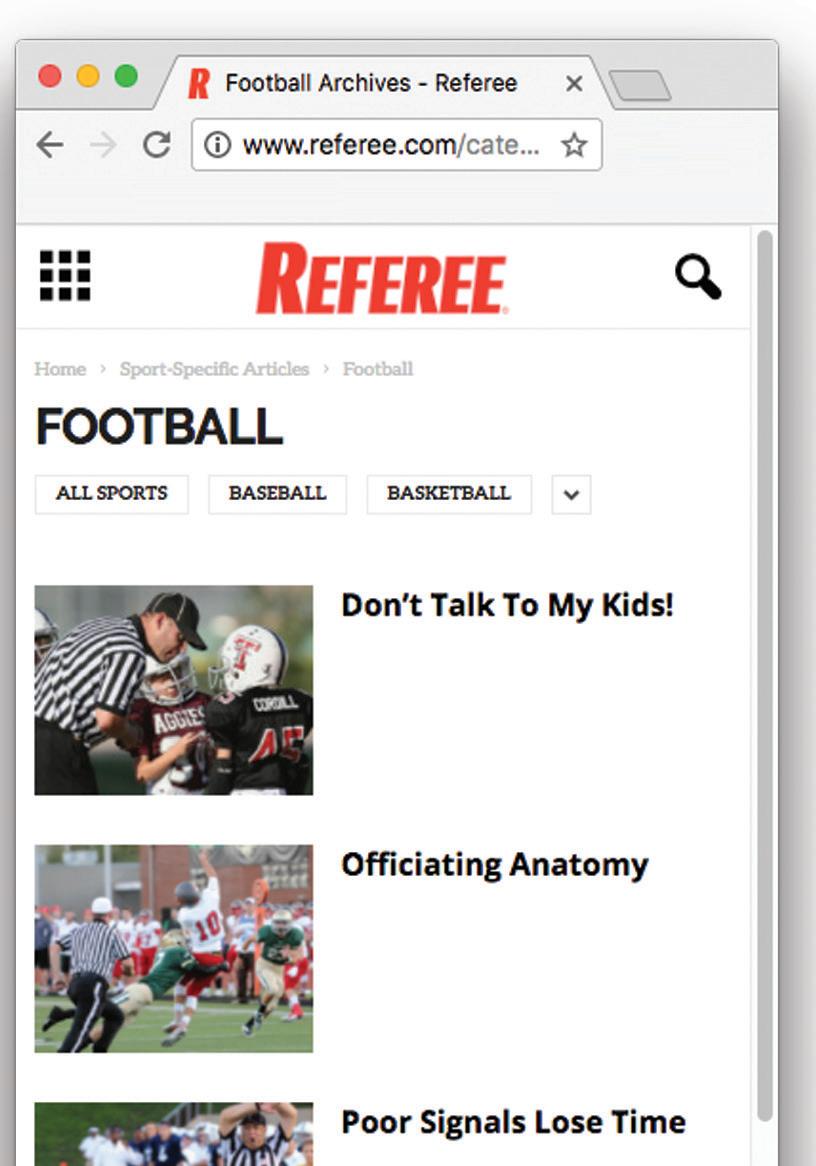


Assuming the quarterback is able to toss a backward pass to number 77, it’s likely someone — a fan or defensive coach — is going to question the legality of the play. But since anyone is eligible to catch, touch, bat or muff a backward pass, there would be no foul.
There are some things to consider, however. Notice the quarterback’s right arm is being
grasped by the defender. Assuming the quarterback is righthanded, that could affect the quality of the toss. The result could be a fumble or a poor pass, which the lineman, unaccustomed to handling the ball, could easily muff.
As the play proceeds and player movement continues, it is possible this could turn into a forward pass to number 77. In that case, a
flag for illegal touching would be appropriate.


Lastly, remember the manner in which the quarterback throws the ball is of no consequence. Whether it is a pitch or a flip, thrown underhand, sidearm or overhand, it is the direction of the pass that counts. And as we all know, a pass is either forward or backward. There is no such thing as a “lateral.”


High school officials don’t have replay. Whatever call is made, that is the call. For the first time, we have a section of plays that we run through first without replay and no commentary in real time, having you - the official –decide on your call. Then we go back and break down each play. Most of these plays are tight and can go either way. But no matter the call, the call on the field stands!



$2495 LEARN MORE STORE.

MORE THAN 1.5 HOURS OF ENHANCED HIGH SCHOOL VIDEO PLAYS



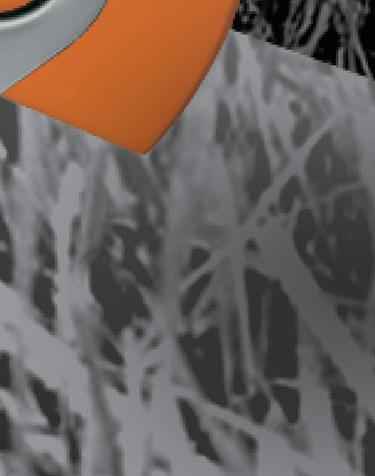






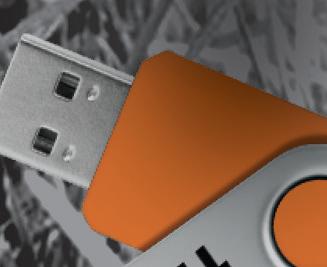























At every level, volleyball is a game filled with a wide range of emotions and actions, ranging from elation and celebration to disappointment and, at times, anger. These emotions and actions also tend to swing back and forth depending on the results of the previous rally, set and/or match.
When the emotions and actions exceed the norms and limits of acceptable behavior, individuals and teams are sanctioned through warnings and/or penalties assessed and administered by the referees.
Each volleyball rule code has
its own sanctioning scale as well as processes and procedures for administering sanctions.
A referee’s goal is to try to prevent a participant’s actions from escalating to a level requiring a sanction. This is best done by remaining calm and keeping your emotions under control. Don’t get involved in an argument with a coach or a player. Remember, the rules clearly state they cannot argue judgment decisions. Calmly and firmly explain your decision and, if necessary, explain the rule and how you interpreted and applied it.
If you are the R1, never yell across the court at the coach — communicate through the playing

captain. If you are the R2, have your conversation with the coach outside of the team’s substitution zone in the libero replacement zone.
If the coach enters the substitution zone to have a discussion, an effective way to get them into the libero replacement zone is to listen and talk to them and casually walk from the substitution zone into the libero replacement zone. If coaches want to be heard, and believe me they do, they will follow you.
If that approach fails, and the participant is still arguing, yelling or screaming, a warning sanction may be appropriate to indicate to the participant the conduct is
approaching the penalty level, or beyond.
So, what levels of individual sanctions do you have available in the rule code?
When we talk about individual, not administrative, sanctions, here is a table of the sanctioning levels for each rule code:
Warning Yellow card held in one hand on offending team’s side of the court. Each team member can receive one yellow card.
Yellow card held in one hand. Each team member can receive an individual yellow card.
Stage 1: No card shown — verbal or hand communication through the game captain (not recorded on the scoresheet).
Stage 2: Yellow card held in one hand. Not technically a sanction but indicates the team has reached the sanctioning level for the remainder of the match. Each team may only receive one yellow card per match.
Penalty
Red card held in one hand on offending team’s side of the court. Opponent receives one penalty point.


Expulsion Rules do not include an expulsion sanction. Behavior requiring a sanction beyond a penalty point results in disqualification from the match.

Disqualification
•Red and yellow cards held in separate hands.
•Disqualified teammate will leave the team and spectator areas for the remainder of the match if supervision is available. Disqualified adult will leave the premises.
When displaying any sanction cards, do not show emotion, even though you may be angry and may be thinking, “Oh yeah? Well, take this!” Simply show the card (as shown in the PlayPic),
Red card held in one hand. Opponent receives one penalty point.
Red card held in one hand. Opponent receives one penalty point.
“I call it being a facilitator of the match. We facilitate matches. For me, a good official is someone who refereed a game and no one paid attention to the official. You’re there to watch the game. It’s not about us. It’s about the kids.”
— USAV Great Plains Region commissioner and NCAA D-I referee Craig Wiedel on the role of volleyball referees

SOURCE:
PAVO
Carter and Houser
At its annual convention last December in Omaha, Neb., PAVO announced the recipients of the 2022 Honor Award and Excellence in Service Award.

Expulsion sanction is not part of the sanction scale.
•Loss of rally/point is assessed for a disqualification.
•Disqualified team members must leave the team and spectator areas for the remainder of the current match and the entire next match.
Red and yellow cards held in one hand. No penalty point is awarded.
Donna Carter, Tampa, Fla., was presented with the Honor Award, which is PAVO’s highest award. Carter automatically becomes a member of the PAVO Hall of Fame with the award. It marks the first time in history that a husband and wife have both won the award as Mike Carter received the award in 2009.
•Red and yellow cards held in separate hands. No penalty point is awarded.
•Disqualified team members must leave the team areas for the remainder of the current match.
take a deep breath and move on. Now that we have the paperwork taken care of, how long do the sanctions remain in effect?
The Excellence in Service Award recipient was Don Houser, Kalispell, Mont. The award was established to honor those who give so generously of their time and Houser was selected for his commitment to photographing the NCAA Volleyball Championships and mentoring new officials.
In each of the following, you are given a situation and possible answer(s). You are to decide which answer(s) are correct for NFHS, NCAA or USAV rules, which might vary Solutions: p. 85.
1. A1 attempts to pass the ball to A2 (a back-row setter) near the net. The pass is off mark and ends up going over the net to team B’s side of the court. A2 initially jumps to try to save the pass but is unable to touch the ball. Realizing the ball is going over the net and B3, a front-row middle, is getting ready to attack the ball, A2 drops her hands below the net so no portion of her body is above the net. B3 attacks the ball and it hits A2 on the top of the head.
a. Illegal back-row attack by A2.
b. Illegal back-row block by A2.
c. Legal, play continues.
d. Illegal attack by B3.
2. While checking the lineups at the start of the match, the second referee notices No. 1 should be on the court instead of No. 2. Team A’s coach says there is no player with the No. 1 on the team. A substitution must be recorded to allow No. 2 to start the match.
a. True.
b. False.
3. It is illegal for a player to play the ball while:
a. Grasping the bottom tape of the net for support.
b. Being supported by a teammate in the bench area, preventing the player from leaving the playing surface.
c. Grabbing the pole with one hand and pulling upward while jumping to contact the ball.
d. All of above.
4. A player may play a ball over a nonplayable area if the player is in contact with the playing area at the time the ball is contacted; the player may enter the non-playing area after playing the ball.
a. True.
b. False.
5. A1 and B2 legally and simultaneously contact a ball above the top of the net. The ball lands out of bounds on team A’s side of the net. The first referee should whistle and award the point and serve to team A.
a. True.
b. False.
Unsporting conduct sanctions are for the match. Administrative unnecessary delay sanctions remain in effect for the match.
Misconduct and delay sanctions remain in effect for the set (exception –disqualification is for the remainder of the current match and the team’s entire next match).
Misconduct and delay sanctions remain in effect for the match (exception –expulsion sanction is for the remainder of the current set).
OK, that’s great. But what is the proper procedure for administering a sanction?
•The first referee holds card(s) in the hand on the offending team’s side, held high, and verbalizes the number of the player, or which coach, received the card.
•The second referee steps to the side of the offending team and a few steps toward the first referee holding the card in the middle of his/her chest, then verbalizes the number of the player or which coach received the card.
•The second referee verifies that the scorer records the information.
•When a player on the court receives a sanction, the captain must go to the stand to acknowledge the sanction.
•When a team member on the bench is sanctioned, or a delay sanction is assessed, the second referee immediately and clearly informs the coach.
•When an improper request is assessed, the second referee informs the coach at the end of the rally.
•The second referee whistles when requesting any sanction from the first referee.
•The first referee whistles when assessing an individual sanction, unless the sanction was requested by the second referee.
•When a player on the court receives a sanction, he/she goes to the referee stand to acknowledge the sanction.
•When a team member on the bench is sanctioned, the game captain goes to the referee stand for an explanation. The captain communicates information to that team member, who acknowledges the sanction with a raised hand.
•When a delay sanction is assessed, the game captain goes to the referee stand for an explanation. The game captain or second referee informs the head coach if needed.
•When an improper request is assessed, the second referee informs the head coach (or the first referee informs the game captain) at the first opportunity without delaying the match.
•The second referee whistles when requesting a sanction from the first referee.
•The first referee whistles when assessing a sanction.
Well, that about does it for assessing and administering sanctions.
Hopefully you will be successful in preventing participants’ behavior from escalating to the point of receiving a sanction. If you are unsuccessful, you now should have a
better idea of how to administer the appropriate sanction.
Jim Momsen, Hartland, Wis., is a USAV and PAVO National Referee and has been officiating volleyball for over 20 years. He has officiated many USAV and collegiate national tournaments and is the president of Badger Region Volleyball. *
Oneof the most important details of a match is determining playable and nonplayable areas. This determination should be made by the referees during the pregame inspection of the venue and then that information should be shared with coaches and captains during the prematch meeting before the coin flip or with coaches as you hand them the lineup sheet (NCAA). It is important to share this information so there is no confusion during a match when there may be a question of whether a certain area of the venue is playable.
The three rule codes are all in relative agreement on what constitutes nonplayable area. It is the space located beyond the court and surrounding playable area and includes walls, bleachers (or other spectator seating areas), team benches, the area behind the team benches and any other areas identified in the prematch conference. NCAA and USAV both specifically also add the area between the team benches and the scorer’s table as nonplayable area (NFHS 2-1-10; NCAA 1.1.3; USAV 9).
It is vital referees check a venue for potential hazards prior to each match, especially if a referee is new to that specific venue. Both referees should be on the same page in regard to what is nonplayable area and make sure to relay that information to the line judges as well. Referees may need their assistance on certain types of plays where one of the referees is unable to get a good angle to see the entire play and make a judgment on whether a play was made over playable area.
Let’s take a look at some common plays that happen in volleyball matches and look at the rules regarding those plays.

Play 1: S1 serves a hard line drive over the net. R2 attempts to dig the ball and shanks it toward her team’s bench area. R3 runs over and makes a play on the ball and sends the ball back toward the court. An assistant
coach sitting in the team bench area holds R3 (a) before she makes contact with the ball, or (b) after she makes contact with the ball to prevent her from going over the chairs in the team bench area. Ruling 1: Fault in (a), legal in (b). A player may not be assisted prior to or while playing the ball. However, it is legal after contacting the ball to be assisted (NFHS 2-4b; NCAA 14.4.2.1; USAV 9.3.2).
Play 2: A1’s pass sends the ball toward the bleachers. A2 runs over and with (a) one foot on the floor and one foot over the first row of bleachers, or (b) both feet on the first row of bleachers, sends the ball back toward the court. Ruling 2: Legal in (a), illegal in (b). Players may play a ball that is over nonplayable area provided they are in contact with the playing area at the time the ball is contacted. A player may then enter nonplayable area after playing the ball without penalty (NFHS 2-4-2; NCAA 4.1.2; USAV 9).
Play 3: A1 blocks a ball and the ball ricochets over to the area between the scorer’s table and the team bench. A2 runs over to retrieve the ball. The ball is completely beyond the vertical plane of the imaginary line that
separates the team bench from the scorer’s table. While playing the ball, A2 has (a) one foot in contact with the floor before the vertical plane and one foot beyond the vertical plane, or (b) both feet beyond the vertical plane. Ruling 3: In (a), the play is legal. In all codes, it is legal to play the ball provided a portion of the body is in contact with playable area, regardless of the location of the ball. In (b), the play is illegal in NCAA and USAV and may be illegal in NFHS, depending on what ground rules were established prior to the match. If the referees stated before the match the area between the bench and scorer’s table is nonplayable area, this play would be illegal. If it is determined before the match there is enough space to safely play a ball in that area and that area is deemed playable, this play would be legal and play would continue (NFHS 2-1-10; NCAA 1.1.3; USAV 9).
Play 4: During competition in which an adjacent court is being used (as shown in the PlayPic on p. 43), A1 digs a ball and it is sent toward an adjacent court. A2 runs over to retrieve the ball. In (a), the ball breaks the vertical plane of the sideline of
Play: S1 serves and R2 tries to dig the ball and sends the ball toward the net. R3, a back-row setter, jumps up to try to save the ball from going over the net. She contacts the ball with one hand while the ball is completely above the height of the net. The ball bounces off her hand, hits the top of the net and rolls along the net toward the antenna. Before reaching the antenna, the ball rolls off the net and lands on team S’s side of the court. The first referee whistles, awards team R the point and signals the ball in. Ruling: Incorrect ruling in all codes. While the ball doesn’t immediately cross the plane of the net, it is still considered an attack-hit the moment it completely crosses the vertical plane of the net. In this case, the back-row setter contacts the ball in the front zone completely above the height of the net and it ends in an attack-hit. By rule, this is an illegal back-row attack and the serving team should be awarded the point (NFHS 9-5-4 and Note; NCAA 14.5.1, 14.5.4.1; USAV 13.1.3, 13.3.3).

Play: A1 attacks the ball near the antenna. During her followthrough, she contacts the middle of the net outside the antenna. The second referee whistles a net fault. Ruling: Under NFHS rules, the second referee’s decision is correct. It is a fault to touch any portion of the net, including the net cables (9-6-7-a). Under NCAA and USAV rules, the second referee’s decision is incorrect. It is not a fault to contact the portion of the net outside the antenna, provided the contact does not interfere with play (NCAA 15.2.1.2; USAV 11.3.2).
Play: At the moment the ball is contacted for service, the server’s foot is touching the short line (hash mark) at the side edge of the service zone. The foot is on the line but does not contact the floor outside the line. Ruling: Legal. The hash marks are placed within the width of the service zone. It is legal for a player to have a foot touching a hash mark provided the foot is not touching the floor beyond the line at the moment of contact (NFHS 2-1-6, 8-1-2; NCAA 1.3.1, 13.1.3.6; USAV 1.4.2, 12.4.3).

On plays at the net, both referees have a lot to consider. Second referee Tony Chavis, Rowland, N.C., and his partner must determine the following:

1)Does either player contact the net?
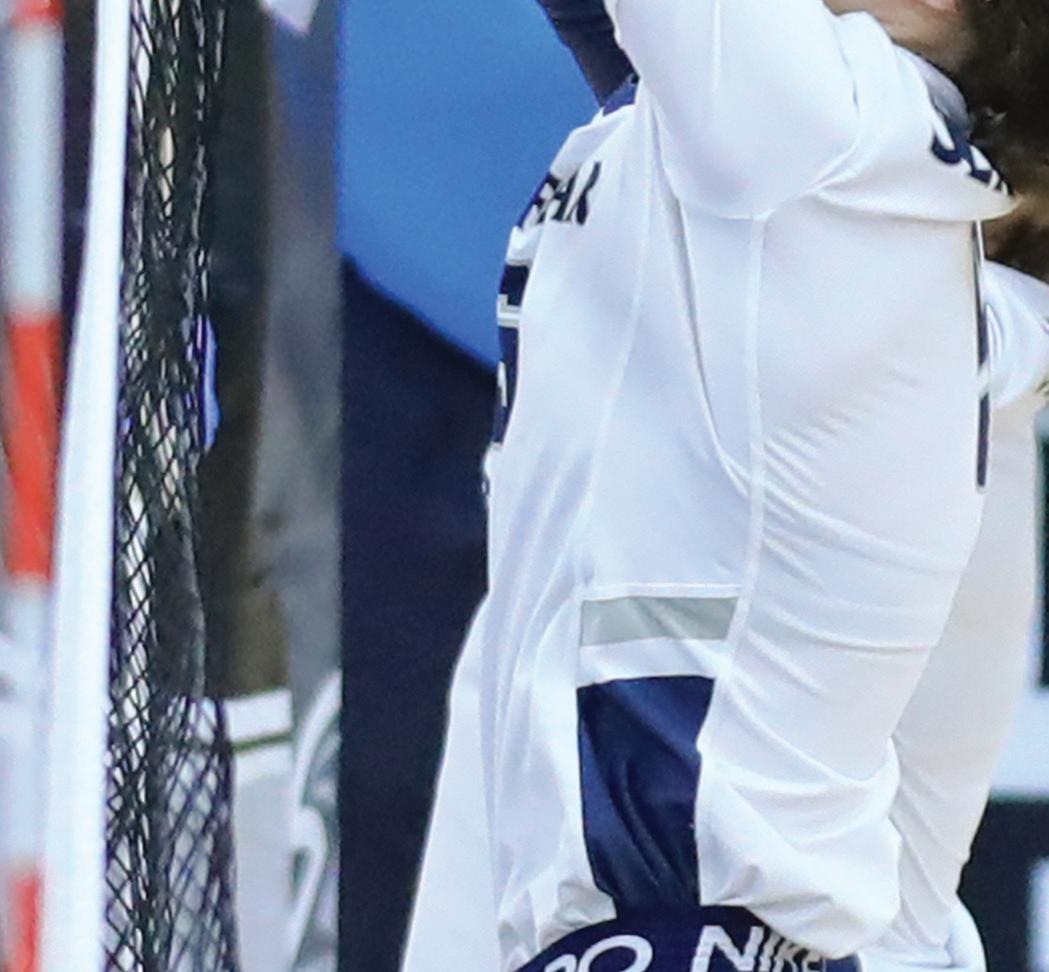
2)Is contact with the ball in this situation a block or a first contact?
3)Is there prolonged contact with the ball?
4)Are there multiple contacts with the ball?
After the play is over, the referees must determine the following as well:
1)Is the player injured after getting hit with the ball (potential for blood on the ball and/or uniform)?
2)After the play, will this player need some time to recover?
3)Will this player require medical attention for an injury or concussion?



the adjacent court, but A2 is able to keep both feet in front of the line and send the ball back toward her court. In (b), the ball never breaks the plane of the sideline of the adjacent court and A2 plays the ball back while both feet are in front of the sideline, and then after playing the ball, her momentum carries her into the adjacent court. Ruling 4: In (a), this is illegal in NFHS, but legal in NCAA and USAV. NFHS restricts both the ball and the player from breaking the plane of an adjacent court. NCAA and USAV only restrict the player from breaking the plane and the location of the ball does not matter. In (b), it is illegal in all three codes. A player may not break the plane of an adjacent court before, during or after making contact with the ball (NFHS 2-4-2 Exc.; NCAA 4.1.3; USAV 9b).
When it comes to these types of plays, remember that in real time, they happen very quickly. It is important
to get an angle to see the player’s feet as contact with the ball is made. If in doubt, the player played the ball legally. If necessary, allow the play to continue and then call over your partner or the line judges to get their perspective if there is a play near a boundary area. Most important, though, is to make sure you and
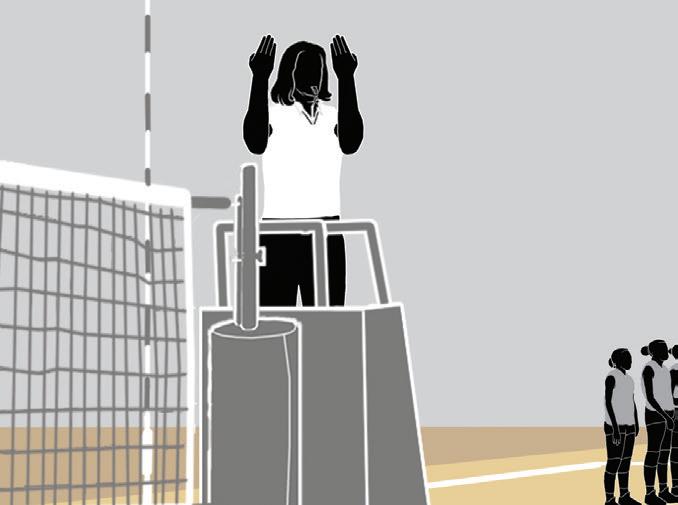

your partner agree before the match starts what constitutes playable and nonplayable area and be consistent throughout the match.



Brad Tittrington is an associate editor for Referee. He referees college and high school volleyball, umpires D-I softball and officiates women’s college and high school basketball and high school football.






See why Net Gain is the best selling volleyball training book of all time. Improve your judgments around ball-handling, overlaps/ alignment, net play, and line calls. Mastering these areas will instantly help you be a better referee and help you make great calls with consistency and confidence.










Fisher said she has found a home.
Dennis DiFabio Fairfield, Calif.
Jeana
Fisher and Steve Anderson, law enforcement officers from the Portland, Ore., area, see strong parallels between their professions and their avocations as high school football officials.

Fisher, a deputy in the Clackamas County Sheriff’s office, played for the Portland Fighting Shockwave women’s
The self-described tomboy said she was “totally amazed” when she moved to Oregon and discovered she was able to play full-contact football with the Shockwave. It was Shockwave president and fellow official Rebecca Brisson who helped Fisher into officiating before she got into law enforcement in 2015.
“I always wanted to do (law enforcement),” Fisher said. “It was a light flickering in the back of my head (and) officiating gave me an opportunity to stay on the field and be among the players. You can influence their lives.”
She’s grateful the PFOA has her back. “There have been some naysayers,” she said, “but I eventually found a lot of cool dudes who want to work with me.”
Fisher got her first state playoff game five years ago and said the finals assignment was a dream come true. “To be honest, I have been itching for it for years,” she said. “I knew my time was going to come.”
Anderson played football at Linfield College, a small-college power, and got into law enforcement around 2002. “My family was always in it,” he said, “and I always wanted to do something more meaningful.”
The clock ticked down for the final game of Dennis DiFabio’s 2022 high school football season. But when it hit zeroes this time, it meant a little more. It was the last game of his 22-year career.
DiFabio says his greatest career accomplishment was helping to create the East Bay Football Officials Association (EBFOA) scholarship fund in 2003. Money for the fund comes from officials who donate their game checks.
“We pass a sheet around at one of the meetings and the guys say, ‘I’ll donate one or two game fees,’” DiFabio told KTVU-TV.
In 2022, the association presented three senior football players with money for college. Since its creation, the EBFOA has awarded over $65,000 in scholarships.
Brian Strege Poulsbo, Wash.
football team and was part of an American national team that won a world championship. She sees herself as a “protector” and a “rule follower.”
Anderson is an officer with the Beaverton Police Department, where he uses his even-handed nature to defuse dangerous situations as a crisis negotiator.
“Sometimes (law enforcement) is life or death,” he said. “Football is far more fun.”
The pair definitely had fun last November when they were part of an elite crew that worked a rainy Oregon School Activities Association 6A state title football game.
Both are Portland Football Officials Association (PFOA) members, where
Anderson began officiating 15 years ago, eventually doing some smallcollege ball before taking a personal hiatus five years ago. But he missed it and started doing high school games again a few years later, always keeping things positive.
He was honored by the finals assignment. “One of my regrets when I went into college (officiating) was that I never got a state finals game,” he said. Now both officials are anxious for more.
“My body is in great shape so I want to keep doing this as long as I can. I can’t wait (for the next game),” Fisher said.
Steven L. Tietz is an award-winning journalist from Milwaukee.

If there is a basketball or baseball game in northwestern Washington state, there’s a good chance Brian Strege will be officiating it. The 54-year-old began officiating at age 16 and hasn’t slowed down since.

“I was (officiating) basketball when I was in high school,” Strege said. “I was doing basketball for the parks department in the youth league. I was 16 years old and I knew this was what I wanted to be.”
Last August, Strege was selected for the Babe Ruth 16-18 national baseball tournament. It was his ninth national and he has traveled to such diverse locales as Jamestown, N.Y., and Klamath Falls, Ore. If chosen for the 2023 event, Strege will make his first visit to Missouri.
SOURCE: KITSAP (WASH.) SUN
Do you know a person or group who should be profiled?
Send info to us at profiles@referee.com




Longtime MLB umpire Sam Holbrook brings his years of onfield and umpire school experience to this new video focusing on the mechanics that will take you to the next level in your umpiring career. The three-time World Series veteran brings years of experience from instructing at one of the top umpire schools in the county, and now he is bringing that experience to you!


umpire schools in the county,







$2495
LEARN MORE STORE.




The Baltimore Ravens were celebrating a last-minute victory over Cleveland when referee Pete Morelli entered the Ravens’ locker room.
It was a strange sight, to be sure. But then, the events that preceded Morelli’s unexpected visit on the afternoon of Nov. 18, 2007, rank among the strangest in NFL history.
Baltimore won the game and then lost it in a span of 20 minutes.

“One of the most bizarre endings I’ve ever called in my career,” said Ian Eagle, who was handling play-byplay duties on the CBS telecast. “And I’m sure we’re never gonna see it go down like that again. It was that unique.”
Matt Stover kicked a 47-yard field goal with 26 seconds left at M&T Bank Stadium to give Baltimore a 30-27 lead.




When Browns kicker Phil Dawson missed a 51-yard attempt on the final play, the Ravens and their fans exulted, thrilled that a threegame losing streak was history.
But the final play, it turned out, was by no means final.
Dawson’s kick ricocheted off the inside of the left upright, struck the curved portion of the goalpost behind the crossbar and took a freaky bounce back into the end zone. To most everyone at the stadium, it appeared Dawson had missed.


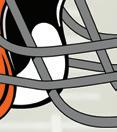


 By Bob Fulton
By Bob Fulton
“The officials under the uprights kind of looked at each other,” Dawson recalls. “And I think because they saw the ball laying in the end zone, they figured it was no good. So they signaled no good.”
Actually, only one official signaled. Field judge Jim Saracino, after a moment’s hesitation, gave a half-hearted no-good signal. Back judge Keith Ferguson gave no signal at all. Morelli, watching from midfield, immediately made a beeline for the end zone.
“I could see one guy signal and the other guy didn’t, which was kind of peculiar,” said Morelli, who retired following the 2018 season after 22 years as an NFL official. “I saw they were talking as I ran down there. The fans are going crazy because they think that Baltimore has won the game. Half my crew has run off the field, headed to the locker room. So I get to the end zone and the one official says, ‘No good.’ The other says, ‘No, the ball hit the back extension and came back in.’ These are two good officials. They had previously officiated Super Bowls. They weren’t rookies. So who are you gonna believe?”

Morelli realized a replay review was in order.
“This was so unusual that I didn’t really know what to do,” he said. “This is a big decision. This is not just picking up a flag or something. So I went to the sidelines, put on my headphones and my replay guy (Howard Slavin) said, ‘I can’t help you with this play. I can’t talk to you.’ Field goals weren’t
reviewable at that time. So that was the end of that.”

Meanwhile, CBS showed the play over and over, blowing it up and slowing it down, with Eagle and broadcast partner Solomon Wilcots scrutinizing it frame by frame like a football version of the Zapruder film. Many of the fans had by that time exited the stadium and most of the Ravens were already in their locker room, in varying states of undress, some peeling tape off their ankles.

Conversely, most of the Browns had stayed on the field, sensing that perhaps the final score wasn’t so final.


“If you’ve paid attention to football at all through the years, you notice that officials are usually the first people off the field,” Dawson says. “Well, as I started leaving the field, I noticed some of the officials are huddling up and talking.”
Morelli listened intently as Saracino and Ferguson made their respective cases. A referee’s responsibility, when members of his crew disagree, is to weigh the evidence and render a verdict. Morelli ultimately went with Ferguson.
“I really believe the official who signaled no good saw the ball hit the upright and end up on the field. I think he took his eye off it,” Morelli said. “The other guy followed the ball and saw it hit the back extension. When he explained that to me, I just couldn’t fathom that happening. But if you reflect back, there was no
way anyone would just make that up.”
Looking at Ferguson now in his 23rd season as an NFL official Morelli said, “Yeah, I’m going with you.”
He then announced his decision to what remained of the crowd. Morelli chose his words carefully, avoiding any hint that a replay review was involved. “After discussion on the field,” he said, “the field goal hit the top of the crossbar (upright), went over and hit the extension on the back side, which in fact is a good field goal.”
As boos rained down from the stands, Morelli went in search of Baltimore coach Brian Billick, who took news of the reversal with the expression of a man who’d just bitten into a lemon. “In all the years I’ve done this, we’ve
talked in training camp about preparing your team for the inevitable things that happen.
I was remiss,” Billick later told reporters, his tone heavy with sarcasm, “in not covering what we do when we’ve won a game, go to the locker room and are told to come back out and play again. That’s not one scenario I’ve covered.”
Fortunately, Morelli was prepared for something unprecedented.
“Before I became a referee, I worked on Ed Hochuli’s crew,” he said “I worked with Mike Carey and Tony Corrente and Bill Leavy. I had good models. And then, of course, the trainers we had were Red Cashion and Jerry Markbreit and Jerry Seeman, who hired me and made me a referee. So I had good mentorship. I couldn’t have asked for better guys. Jerry
A 51-yard field goal attempt by Cleveland Browns kicker Phil Dawson was anything but routine. The ball hit the left upright and then ricocheted and hit the curved portion of the goalpost. The calling officials differed in what they believed they saw and it took referee Pete Morelli to decide which one was correct, ultimately overturning the original call and sending the game to overtime in one of the more bizarre plays in NFL history.


Markbreit always told me, ‘As a referee you’ve got to be prepared for things that happen that are totally unexpected.’”

Like a kick that bounces off the goalpost and lands in the end zone but in actuality passed through the uprights. The officials correctly gave the Browns a reprieve and they made the most of it.

A game that had apparently ended 20 minutes before finally did when Dawson drilled a 33-yard field goal in overtime to give Cleveland a 33-30 victory. Unlike his previous kick, this one to Pete Morelli’s everlasting relief —was routine.
Bob Fulton is a freelance writer and author of the book The Summer Olympics: A Treasury of Legend and Lore. He resides in Indiana, Pa.
Successful officials are approachable and are good listeners. They recognize they have two ears and one mouth and they use them in that proportion. Coaches are turned off by officials who appear unapproachable or standoffish.

Officials who are perceived by a coach as being unapproachable probably are unapproachable. And since perception is reality, whether
the perception is in fact accurate is not important. Coaches will believe what they want to believe, and if they believe you are a poor official, for whatever reason, you are a poor official at least in that coach’s eyes. On the other hand, if a coach feels you are a good official, you will often get the benefit of the doubt, even if there are disagreements with some of your calls.
We don’t often think about the coach’s job. During a game, coaches not only have to manage the players
on the field or court, but have to think about strategy, substitutions, reacting to what the opponent is doing, etc. So they are not always 100 percent certain what an official has called.
So a shouted, “What was that call?” may not be a complaint, it may be an actual question. Until the coach shows otherwise, we should assume coaches just want us to communicate with them.
When a coach initiates a conversation, let him or her talk and
don’t interrupt. Have the courtesy to listen before you say anything. You may have made up your mind and there’s no way you’re changing anything, but by fully listening to what the coach has to say, you can at least empathize with the coach’s viewpoint.
When it is your turn to talk, repeating what the coach said indicates you heard him or her and you understood the message. It also gives the coach a moment to calm down.
There are situations when you won’t get a chance to talk because the coach will be screaming non-stop. Expect a loud harangue, displeased body language and negative vocalizing that communicate harsh disagreement. In those cases, you should decide what amount and type of grief you’ll accept and where and how to draw the line. Whether or not you penalize the coach, don’t let that harassment affect your next call. If you handle controversy successfully, it will be a mark of genuine presence.
When someone shouts at you, the natural inclination is to holler back. Understand you are not obligated to deliver a reply. It takes a firm resolve to pause deliberately and let the attack sink in.
If the gruff outburst is a general one, such as, “How can that be a foul?” or, “That’s terrible,” you may wish to ignore it. People aren’t always going to accept your decisions amicably. At times, though, given the nature of the call, a look in the direction of the angry person will acknowledge that you’ve heard the objection and you feel no response is necessary.
If the complaint is presented in a more measured tone, particularly in the form of a question, such as, “Can you please explain that call to me?” an answer is appropriate and deserved.
Depending on the coach’s remark, here are some possible responses:
•“How can I help you, coach? ”
•“Coach, would you care to know what I thought?“
•“Right after this play, can I talk to you then?”
•“We’ll (the officiating crew) talk about it and make sure we got it right.”
•“You may be right. Let me keep an eye on it.”
•“I didn’t get a look at it, but I’ll ask the official who called it to explain to me and I’ll get back to you.”
Coaches in those circumstances may still be unhappy with the call, but at least they will know their concerns are being heard. Inviting questions indicates your willingness to obtain feedback. Sometimes it helps you build in a time buffer — a couple plays or so — to let things settle down before you address the situation.
If constant chirping about your judgment occurs, take a private inventory of your decisions instead of slipping into the natural feeling of defensiveness. Are you missing low pitches? Are people reacting to fouls you aren’t seeing? Did you not see a late hit out of bounds? Maybe a valid message is being delivered and you’re not receptive. That doesn’t mean you must always question your own judgment when someone else does. Rather, avoid rationalizing and make a candid assessment.
Validate the coach’s comments by showing you are listening. A suggested response is, “Coach, if it happened the way you say it did, I missed it.” That won’t work multiple times, however. If you’re missing too much, it’s time to examine your mechanics and positioning.
Coaches shouldn’t be allowed to bring up calls from other games or earlier points in the current game. Limit discussion only to the most recent call. Make it clear you’re only willing to consider the current conflict; the past is history.
Certainly there will be times when a coach genuinely wants to argue, complain, vent or otherwise blow a gasket. How we react to those situations will vary. But before we can come to any decision, we have to listen. Without listening, we can’t understand what is being communicated to us.
Jeffrey Stern is Referee’s senior editor. He officiated high school and collegiate football and umpired high school baseball. *
In general, should some profanity be permitted from players and coaches at the high school level?
Only a year after starting out as a Kentucky high school official in 1955, the late Tommy Bell was working both football and basketball in the Southeastern Conference. In the next seven years, Bell’s credits included two NCAA basketball championship games. He worked in the NFL from 1962-76. During that span he was assigned to one Divisional game, eight Conference Championships and two Super Bowls. Until Brad Allen was hired in 2014, Bell was the only official to enter the league as a referee.
“Disagreeing with an official’s call is part of the game, for coaches, players and fans. But disrespecting an official is totally unacceptable, abusing an official is an abuse of the game, and an attack on any official in any sport is an attack on sport itself. A shortage of officials is a growing problem, particularly in amateur football. Recruitment and retention become even more difficult when people see the treatment too many officials face on a regular basis. We can all help tackle this problem, strengthen the game, by treating officials with respect and, dare I say, gratitude.”
— Portion of a statement by Randy Ambrosie, Canadian Football League commissioner

Youdress well to and from your games and your uniform looks crisp and sharp. Shined shoes, well groomed, etc.
But what about underneath your uniform, or when your gear is tucked away inside your bag, waiting for your next assignment? An ironed uniform is nice, but how often are you washing it? Are you just letting your sweaty Under Armour hang dry for a couple of days? Is swapping out socks enough? What are you doing to keep yourself healthy?
Let’s start with that whistle. Many officials rinse out their whistles, but those germs from deep inside your lungs tend to stick around, unseen. You really have to sterilize your whistles.
Boiling your whistles seems sound, but once you pull the whistles out of the hot water, those plastic parts might start to warp on you. Instead, fill a glass with ice water and drop in your
whistle. Let it sit overnight and then rinse it off with very hot water the next morning.
But wait. That bag hasn’t been cleaned, probably ever. That bag that sits in air conditioning during your contests, then sits in your trunk, then on the closet floor. A lot of the time your damp, sweaty clothes are in it. A bacteria’s favorite resting place.
Most officials have gear bags or some sort of travel suitcase on wheels. They can be cleaned rather easily. Dump everything out and simply wipe down the outsides and insides with disinfectant wipes. Leave it open to air dry for a while. Not only will the bag be sanitized, it’ll smell nicer (always a win).
Many officials use some sort of powder spray for the inside of their shoes, just to keep the stink at bay. That off-putting smell is bacteria. The odor is your key to know when to spray your shoes. Be sure to pull out your arch supports or insoles and
There is a saying in our house. I have a 5-year-old who is willing to put an entire donut in his mouth at one time. So to work on getting him to moderate, savor, taste and enjoy treats in life, like donuts, I started telling him, “Enjoy it!” So far it seems to be working. He’s slowing down and taking more time with his treats.
What does this have to do with officiating? “Enjoy it” is what I’m going to tell myself all season long.
I went to an officiating convention and in one of the first sessions the
A definitive third-strike call is a clue Chuck Becker, Pomona, Calif., is enthusiastic about working this game. Officiating is meant to be an enjoyable pursuit. Taking that outlook into your games will prevent it from seeming like a chore.

spray under those as well. Do it before applying any polishes, since you likely hold the shoes from the inside when you do.
If the scorer’s table or sideline has hand sanitizer available, swing by for a splash. You can also keep a disinfectant wipe stored in a plastic bag in your front pocket. Pull it out and wipe your hands whenever you feel the need.
Final word, and this is equally important, protect your mental health as well. Use officiating as an escape from the daily stressors. Get plenty of sleep. Build nights off into your schedule. The mind and body are closely intertwined, and nothing will make you sicker more quickly than stress.
Staying well keeps you in the game.
Stephen A. Mintz, Fresno, Calif., is an award-winning writer. He officiated basketball for 30 years and is now a collegiate evaluator and instructor. *
presenter asked us to think about our goals for the season. That phrase immediately came to mind. I want to enjoy the season. Everyone else had items a little more concrete than that. Later the presenter said, “All I know is you should enjoy this non-rules-change year.” That was it. It solidified for me I had a worthwhile goal.
Obviously, officials are rulesoriented people, and while we like to go about our business quietly, many of us are very competitive, goal-driven people as well. It is what suits us to working in the pressure cooker of sports. As I entered my 18th season, the most important goal for me was to enjoy it.

You spend the first few seasons figuring out if officiating is really for you. Once you get past that, you start to enjoy competing with yourself. You learn how to do it well, see what could potentially be in store for your career. Goals start to form, the network builds
and the aspirations get big. If you’re not careful you start comparing yourself to others, checking out assignments, doubting yourself and your big goals. As Theodore Roosevelt said, “Comparison is the thief of joy.” There it is again — joy.
What is this joy, the happiness and bliss that we think is officiating? It’s the physical and mental challenge, the friendships and camaraderie of crews. It can be easy to lose track of the joy when you don’t have your best game, or you’re speaking to an assigner who received questions from a coach about a call you made.
I’m going through the mid-career realities that some of my best friends are retiring and some got injured without knowing it was their last game. Some are ill with cancer and hoping they will get to blow the whistle one more game. Others are planning which game will be their last. I certainly didn’t anticipate weathering those storms 18 years ago.
It has been a good lesson to help me remember to enjoy it because the decision to be on the field, while it is mine for right now, can be stolen at any moment. It’s something we enjoy so much we leave the family we love to go have the experience one more time. Sure, I have written down a few other goals about how I can improve, but enjoy it goes at the top because everything else will flow from it. If I can feel the joy and bring it to each one of my games, I know I will be better for it. So will the crew and the teams.
Just for fun and because I have no real tattoos, I designed a temporary “Enjoy It” tattoo as a reminder I’m going to wear throughout the season.
Why do officials want to officiate? The short answer is we love it. We love it, so enjoy it.
Michael Clark is a veteran of the U.S. Air Force and is a high school football, basketball and baseball official. He lives in Charlotte, Mich. *
• Los Angeles defeated Philadelphia, 3-3 (won on penalty kicks) to win the 2022 MLS Cup. Working the match were referee Ismail Elfath, assistant referee 1 Corey Rockwell, assistant referee 2 Ian Anderson, fourth official Joseph Dickerson, video assistant referee Drew Fischer and assistant video assistant referee Jeff Muschik.

• Toronto defeated Winnipeg, 24-23, to win the Grey Cup, the Canadian Football League’s championship. Working the game were referee Dave Foxcroft, umpire Troy Semenchuk, line judge Walt Hawrysh, down judge Ron Barss, side judge Dave Gatza, back judge Larry Butler, field judge Brian Chrupalo and replay official Al Bradbury
• Argentina defeated France, 3-3 (4-2 penalty kicks) to win FIFA’s 2022 World Cup. Working the final were (position with home country) referee
Szymon Marciniak (Poland), assistant referee 1 Pawel Sokolnicki (Poland), assistant referee 2 Tomasz Listkiewicz (Poland), fourth official Ismail Elfath (U.S.), reserve AR Kathryn Nesbitt (U.S.), VAR Tomasz Kwiatkowski (Poland), AVAR Juan Soto (Venezuela), OVAR Kyle Atkins (U.S.), SVAR Fernando Guerrero (Mexico), SAVAR Corey Parker (U.S.).

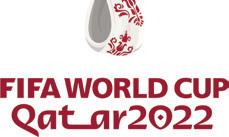
• The following officials were assigned to 2022 Minnesota

State High School League fall state championships: Adapted Soccer
Jim Herder, Robbinsdale, Deb Hiestand, Maple Grove, Dave Malley, Brooklyn Park, Paul Pranghofer, Golden Valley, Tony Ruiz, Mendota Heights, Michelle Schneider, Brooklyn Park, Tom Stephan, Brooklyn Park, Jacki Wincek, Minneapolis, David Zappetillo, White Bear Lake.
Football — Jacob Anderson, Cold Spring, Jeremy Anderson, Alexandria, Marc Angell, Andover, Andrew Balzer, Burnsville, Pat Bauschelt, Eagan, William Bean, St. Paul, Seth Beccard, St. Louis Park, Joshua Beck, Elk River, Marshall Behrens, Rochester, Bruce Belseth, Alexandria, Leah Berard, St. Paul, Jason Berg, Farmington, Robert Bissonette, Shakopee, Justin Borchardt, Fairmont, Taylor Briggs, Savage, Kevin Britt, Rosemount, Alex Brockpahler, Sebeka, Gregory Brown, Champlin, Douglas Bruggeman, Pelican Rapids, Michael Bruns, Elbow Lake, Michael Bukowski, Sauk Rapids, Vern Capelle, Little Falls, Mike Carr, St. Cloud, Jeremy Carter, Farmington, Pete Cheeley, St. Cloud, Jordan Chuinard, Barnesville, Jef Cichos, Staples, Anthony Dahl, Shoreview, Matt Dalle, Golden Valley, Guy Dawson, Rosemount, Jon Day, Apple Valley, Richard DeBlois, St. Peter, Richard DeGardner, Vadnais Heights, Roger Denny, Crystal, Clayton Dilly, West Fargo, Brian Donahue, St. Peter, Aaron Donais, Babbitt, Tyler Downs, Chanhassen, David Drexler, Alexandria, Andrew Dumas, Moorhead, Anthony Ecklund, Bruno, Craig Ehrlichman, Sartell, Terry Eiter, Detroit Lakes, Gregory Esala,
Ottertail, John Faison, St. Paul, Jim Fall, Pine Island, Rolf Fiebiger, Edina, Marc Fioravanti, Lake Elmo, Joshua Fordyce, Baxter, Jason Frank, Mondovi, Brian Franzwa, Woodbury, Zach Freeman, Hermantown, Zachary Fuller, Rochester, Matthew Gallagher, Plymouth, Joe Ganske, White Bear Lake, Jim Gogolin, Baxter, Gary Golka, Waconia, Todd Graf, Fargo, Craig Grams, Monticello, Jackie Gray, Dilworth, Jess Gross, West Fargo, John Gullingsrud, Pelican Rapids, Mark Gulseth, Frazee, Nathan Haase, Thief River Falls, Scott Haefner, Mankato, John Hardgrove, Oakdale, Fred Harris, Chaska, Adam Heathcote, Sartell, Steve Heimer, Eden Prairie, Mike Heino, Sebeka, Scott Hill, Monticello, Tracy Hinsz, Barnesville, Clint Hoberg, St. Paul, Timothy Holmstrom, Duluth, Anthony Holthusen, Grygla, Tom Houle, Stillwater, Curt Hughes, Stewartville, Butch Huntley, Austin, Jim Jacobson, Rochert, Eric Jensen, Eden Prairie, Myron Jesme, Thief River Falls, Jesse Johnson, Cold Spring, Zack Johnson, Bloomington, Lucas Karnas, Eden Prairie, Matt Karnas, Minneapolis, Mike Karnas, Richfield, Scott Kimman, Baxter, Reggie Kiser, Sebeka, Matt Kleis, Northfield, Josh Klem, Richfield, Jake Kloeckner, Owatonna, Steven Knutson, Esko, John Kostynick, Perham, Brandon Kruse, St. Joseph, Davis Lamppa, Virginia, Kyle Lamppa, Virginia, Scott Lange, St. Cloud, Jim Larson, Chaska, John Lieser, St. Cloud, Jon Lillquist, Sebeka, Nick Litfin, Eden Prairie, Tim Litfin, Waconia, Mike Lloyd, Osakis, Joel Lofstrom, Baxter, Jay Lonien, Rochester, Ryan Luessenheide, St. Paul, Jackson Lyngaas, Hawley, John Madsen, Minneapolis, Lonnie Marcyes, Eagle Bend, Justin Mathre, Rochester, Darren Mayers, Brainerd, Paul McDonald, Ely, Thomas McDonald, Ely, Tim McGowan, Woodbury, Chad McGraw, Sartell, Nathan McNaughton, Somerset, Josh Meissner, Fargo, Nate Meissner, Alexandria, Allen Mensinger, Hermantown, Jeremiah Miller, Robbinsdale, Patrick Molan, St. Paul, Scott Monson, Marshall, Bryan Morben, Maple Grove, Jeff Mosca, Perham, Eric
Muckenhirn, Pelican Rapids, Michael Munger, Long Lake, Derrick Nelson, Pelican Rapids, Eric Nelson, Sebeka, Jeff Newton, Oronoco, Scott Nielsen, Moorhead, Aaron Nordling, Minneapolis, Larry Norland, Zimmerman, Daniel Novak, Mendota Heights, Rob Nudell, Twin Valley, Eric Okstad, Pine Island, Matt Olson, Delano, Nate Olson, Brainerd, Tim Omerza, Ely, Kirk Oswald, Owatonna, Casey Pack, Maple Lake, Matt Papke, Stillwater, Dan Pelletier, St. Paul, Bradley Peterson, Sauk Rapids, Steve Philion, Red Lake Falls, Michael Pilon, Duluth, Robin Pohlman, Little Falls, Lukas Pohlmeier, Sauk Rapids, Michael Pope, Ely, Jeffrey Preuss, New York Mills, Joshua Prondzinski, Ettrick, TJ Pytleski, Fairmont, Paul Raj, Duluth, Piyush Ranade, Plymouth, Brett Reem, Maple Grove, Matthew Reinisch, Lakeville, Mark Ricker, Clear Lake, Thomas Riitters, Randall, Dan Rootes, Elko New Market, Chris Rossini, Minneapolis, Dylan Savary, Detroit Lakes, Joe Schmeltzer, Stillwater, Justin Schmidt, Plymouth, Jim Schrank, Minnetrista, Benjamin Schreiber, Independence, Travis Schuett, Welcome, Scott Schulz, Otsego, Lee Schumann, Kiester, Tim Seaton, Wadena, James Sethre, Newfolden, Tristan Severson, Plainview, Craig Sevick, New Brighton, Darren Sheldon, Cloquet, Brian Shreve, Robbinsdale, Mark Sisson, Danbury, Mark Smith, Apple Valley, Matt Sogla, Rochester, Andrew Sowada, St. Paul, Michael Sowada, Sauk Rapids, Jacob Stang, St. Cloud, Mat Steinberg, Sartell, Jordan Stolp, Owatonna, Douglas Storbeck, Welcome, Geoffrey Strack, St. Paul, Ian Stroud, Lake Elmo, Cory Stroup, Minnetonka, Trevor Sundquist, Esko, Tom Swenson, St. Cloud, Brad Sylliaasen, Dilworth, Mike Tanaka, St. Louis Park, Chris Tengwall, Minneapolis, Ryan Tharaldson, Carver, Greg Thiesse, Fairmont, Jerry Tiegs, Florence, Ryan Townzen, Burnsville, Joel Traver, Rochester, Steve Vekich, Wayzata, Darren Visser, Babbitt, Tyler Vrieze, St. Paul, M.J. Wagenson, Pine Island, Brian Walter, West St. Paul, Jason Weber, Minneapolis, Scott Weis, Maple Grove, Josh Weise,
Cannon Falls, Ryan Weiser, Dilworth, Jay Wetzel, Hibbing, Kevin Whalen, Morris, Larry Wilson, Austin, Joshua Woldt, North Mankato, Jeff Wollak, Rice, Joe Wollan, Maple Grove, Tom Wollan, Inver Grove Heights, Tom Wollan, Edina, Nick Worm, Savage, Philip Worm, New Market, Brad Wright, Maple Lake, Jeff Zamzow, Columbus, Chris Zollner, Rochester, Brad Zumbaum, Bovey.
Soccer — Gregg Adler, Afton, Agot Agot, Rochester, Zakaria Aly, Bloominton, Clifford Anderson, Edina, Andy Ball, Big Lake, Nick Barkley, St. Paul, Ajay Basnyat, Rochester, William Beardsley, Woodbury, Sean Bedard-Parker, Duluth, Fatih Bektas, Mankato, James
Bennett, Hermantown, Tye
Biasco, Forest Lake, Ryan Block, Grand Forks, Mark
Borowiak, St. Michael, Kyle
Brandt, Vadnais Heights, Jordan Broers, Rochester, Jacqueline
Carlson, Rochester, Bradley
Charchenko, Lakeville, Yifu
Chen, Plymouth, Seak Chew, Roseville, Dennis Cladis, Columbia Heights, David Clear, Rosemount, James Dahlman, Roseville, Troy Dammer, Ramsey, Victor de Meireles, Mounds View, Steve Decker, Rochester, Soner Dogan, Austin, Timothy Donohoo, New Hope, Joe Doppler, Rochester, Robert Driesch, Rochester, Connor Dunn, Fargo, John Easterwood, Richfield, Josh Edelstein, Eagan, Kevin Fink, Willmar, Richard Fleming, Mankato, William Foot, Red Wing, Josh Forsythe, Shakopee, Winston Fredericks, Plymouth, Dan Freudenburg, Rochester, Joshua Gerber, Chaska, Thomas Gjersvig, Mankato, Matthew Graeve, Little Falls, Charles Gray, Northfield, Jan Hanson, Rochester, Alan Harkrader, Mendota Heights, Joshua Hartwell, Rosemount, Hasan A. Hindi, St. Cloud, Jim Hirsch, Bloomington, Dennis Hoffbeck, Marine on St. Croix, Brian Holm, Minneapolis, Kip Jackson, Lilydale, Sharmaarke
JB DeRosa’s years of experience were incorrectly listed in the NBA officiating roster that appeared in the 1/23 issue. He is in his sixth season.
Jama, Minneapolis, Shamim Jeihoon, Waconia, Chris Jessen, Minneapolis, Michael Johnson, Minnetonka, Zack Johnson, Bloomington, Mark Kelley, Minneapolis, Kip Kilen, Mendota Heights, In-Jae Kim, North Mankato, Kory Klouse, Rose Creek, Brian Koehler, Minnetonka, Steve Korte, Burnsville, Daniel Kramer, Bemidji, John Krill, Minneapolis, Clinton LaBeau, Minneapolis, Jacob LaDue, Bloomington, Erika Laho, Buffalo, Ken Lamb, West St. Paul, Juan Lara, Eden Prairie, Dan Lehtola, Alexandria, Wayne Lemens, Rochester, Lamont Lommel, Waite Park, Joseph Mareck, Sartell, Jessie Martinez, Rochester, Scot Mattison, Burnsville, Rory Merlino, Waconia, Lee Morgan, Annandale, Abdela Muhumed, St. Cloud, Shawn Nelson, Plymouth, Ward Nelson, Rochester, Chad Norwick, Rosemount, Peter Nwaofune, Shakopee, David Oleyar, Rosemount, Hagi Ozdemir, Duluth, Tim Perrizo, Waseca, Joe Perske, Sartell, Kevin Pfeil, Sartell, Almin Ramic, Centerville, Phillip Rickert, Andover, Paul Risdall, Delano, Timothy Rowe, Rochester, Jonathan Rydberg, St. Cloud, Michael Rysavy, Rochester, Todd Sauers, Somerset, Alan Savage II, White Bear Lake, Joey Schleis, Faribault, Tony Schrepfer, Brooklyn Center, Shauna Spencer, St. Paul, Forrest Sullens, Mankato, Subel Sunbeeb, Savage, Arkadzi Talkachou, Shoreview, Jason Tarpinian, Apple Valley, Angelo Tartaglia, Byron, William Taylor, Byron, Rachelle Timm, Roseville, Conor Tobin, St. Paul, Blaine Turnbull, Delano, Jeremy Uecker, Hermantown, Toua Vang, North St. Paul, Adalberto Villalobos, St. Cloud, Matthew Von Pinnon, West Fargo, Brian Watkins, Charles City, Kimberly Watkins, Charles City, Chris Webb, Marshall, Craig Weber, Stillwater, Mark Weber, Stillwater, Conor Weberg, Brooklyn Park, Antonio Wegner, Waseca, Daniel West, Eden Prairie, Robert Williams, Detroit Lakes, Clarence Winter, Lakeville, Brian Wood, Coon Rapids, Chris Yarger, Mankato, Mohamed Ziedan, Shakopee, Benjamin Zwart, Lakeville.
Swimming and diving — Gary Albrecht, Woodbury, Mike Amidon, Hudson, Michael
Bauerle, Rochester, Brenda Bebeau, Blaine, Pat BlazickPeterson, Remer, Michael Bougie, Vadnais Heights, Terry Bumgarner, Richfield, Mark A. Challgren, Apple Valley, Annette Crews, White Bear Lake, Robert Crunstedt, Savage, John Dailey, Champlin, Mary Dillard, Dalton, Thomas Eaton, Albert Lea, Craig Feil, Brooklyn Park, Frank Gaertner, Mendota Heights, Samarah Hadley, Orono, Michael Hilber, Lindstrom, Robert N. Johnson, St. Cloud, Bonnie KeeBowling, Minneapolis, James Kugler, Spring Lake Park, Kelly Lenz, Maplewood, Kimberly Lichtenwalter, Chaska, Kelly Lindquist, Eden Prairie, Tom Madura, Apple Valley, Kerra Mayor, Champlin, Tracy Meece, Alexandria, Lindsay Moynihan, Inver Grove Heights, Charles Nelson, Lake Elmo, David (Rusty) Nelson, Minneapolis, Laura Nelson, St. Peter, Kellie Olson, Shafer, Craig Porter, Lewiston, Kelly Punyko, St. Paul, Chuck Quistad, Chisago City, Terry Robinson, Mankato, Aaron Rooney, Alexandria, Amy Schulz, Austin, Julie Singewald, Duluth, Melany Souther, Willmar, James Splinter, Superior, Charles Stewart, Eden Prairie, John Tegg, Burnsville, Patrick Thompson, Red Wing, Robin Tracy, Grand Forks, Rachel Treadway, Cottage Grove, Deborah Welch, Forest Lake, Dirk Westveer, Monticello. Volleyball — Al Andersen, Shakopee, Mary Asche, Morris, Louise Beaman, St. Paul Park, Lorelle Betha, Kasson, Sara Bowman, Crookston, Robert Crowe, St. Paul, Shelly Deegan, Coon Rapids, Laurie Dinneen, Coon Rapids, Scott Garrett, Apple Valley, Robbie Goodmund, Marshall, Rob Hammer, Coon Rapids, Bradley Haugen, Fairmont, Jeffrey Helgerson, Lakeville, Brenda Holmgren, Clear Lake, Lynnae Howe, North Branch, Carol Jaquith, Rochester, Thomas Keller, St. Cloud, Kasey Krekling, Hayfield, Davis Lamppa, Virginia, Darci Meyer, Rochester, Jeff Nelson, Marshall, Don Ness, Woodbury, Troy Olson, Burtrum, Theodore Perala, Duluth, Philip Rendina, Minneapolis, Michelle Schneider, Brooklyn Park, Patrick Sewell, Apple Valley, Darren Sheldon, Cloquet, Gail Simones, Sartell.
• North Central (Ill.) defeated Mount Union (Ohio), 28-21, to win the 2022 NCAA Division III football championship. Officials were referee David Hergert, umpire David Fox, head linejudge Paul Knapp, line judge Nick Tomidy, field judge Rob Guyton, side judge Tim Britton, back judge Dylan Hill
• Ferris St. (Mich.) defeated Colorado School of Mines, 41-14, to win the 2022 NCAA Division II football championship. Officials were referee Dwight Neibling, umpire Gavin Darr, head linejudge Troy Davis, line judge Ben Tenpenny, field judge Brandon Friesen, side judge Mark Brull, back judge Jake Wolf
• Mel Gatson of Lompoc, Calif., died Nov. 3. He was 74. He officiated high school and college baseball, basketball and softball for 45 years. He worked four NAIA baseball World Series and four state high school baseball championships. He was the recipient of the CIF-SS Champions of Character Award in 2004 and its Distinguished Service Award in 2017.
• Toby Walker of Endwell, N.Y., died Nov. 26. He was 44. He was a member of the United College Umpires and umpired for the National College Club Baseball and the Cooperstown Dreams Park.
• Pat Fragile of Daniels, W.Va., died Dec. 2. He was 77. He was a longtime football, basketball and baseball official and was a West Virginia Secondary Schools Activities Association basketball rules interpreter. In 2003, he was inducted into the NFHS Hall of Fame.
• Dave Simon of Albany, N.Y., died Dec. 6. He was 51. He umpired the NCAA Division III baseball College World Series in 2021. He also umpired in the Atlantic Coast Conference and Conference USA.
• Victor J. Catalano of Clearfield, Pa., died Dec. 14. He was 84. He officiated high school basketball for 36 years.
Do you have any rosters, assignments or awards that warrant mention?
Send info to us at ForTheRecord@referee.com
A little over 20 years ago, I wrote a column for this magazine entitled, “Officiating the Game — and the Bleachers.” At the time, the NFHS “Officials Code of Ethics” had recently been revised to identify officials’ duties as having expanded to responsibility for informing event management of unreasonably hazardous situations and recognizing emergency conditions that might arise during the game. Inventive and prescient responsibilities — configured around the turn of the century — still appear in today’s NFHS publications but apparently have been transported to another dimension.
better but you and me in the striped shirts?
On the topic, some rule codes are, of course, more detailed than others, but there is some commonality in that dealing with curing boorish and criminal behavior in the making are in fact part of the officials’ responsibilities — included in officials’ duties in various degrees according to the sport and level of competition. As a result, officials have to know what to do and what not to do when spectators disrupt the game.
While some rule codes permit officials to penalize the actions of spectators, officials at all levels must be clear as to what, if any, increased responsibilities they shoulder. Playing rules, caseplays, manuals and such are the first source of information. In addition, those duties could be impacted by conference or league rules or, in some cases, by the athletic code of conduct laws and civil rights legislation. Either way, officials must know what they’re required to do and the legal implications.
Many of the various rule codes specify what officials should do if they encounter an unruly spectator. Officials have a responsibility to know what’s spelled out in their sport. Here is a sampling of the directives — whether in the rulebook, casebook or officials manual — from several NFHS sports:
Basketball. “When team supporters become unruly or interfere with the orderly progress of the game the officials shall stop the game until the host management resolves the situation and the game can proceed in an orderly manner. In the absence of a designated school representative, the home coach shall serve as the host management.”
Wrestling: “Conduct by a spectator that becomes abusive or interferes with the orderly progress of the match must be corrected by the referee. This may be a request for the home management to remove the spectator.”
Boys’ Lacrosse: “Coaches shall assist the officials in keeping the game under control at all times. It shall be their duty, upon the request of an official, to control effectively actions of spectators not in conformity with standards of proper conduct.”
This fall, a news item about a highlevel college volleyball game featured several players recounting a story of spectators uttering racial slurs that turned into threats. And there was the familiar assertion that the opposing coaches and the officials were apprised of the hate speech and did nothing. A search of news reporting for similar hijinks at the high school level (and even below) yields a treasure trove of horrific incidents where taunting invective and pure hate speech has plundered game after game in a number of sports — all at the hands of people in the bleachers who perceived a need to call attention to themselves in the most unseemly and meanspirited way imaginable. Given the present climate where hate speech, racial slurs and violence seem to be viewed as suitable modes of behavior, how do we prevent such conduct from the sports we know and love? Who
1.Do not ignore hate speech, racial taunts or threats emanating from the stands. If you can hear it, so can the athletes. Pretending it does not exist is wrong. Failure to address the problem provides ample fodder for discrediting officials and, potentially, legal consequences.
2.Do not, under any circumstances, address a disruptive spectator directly. Seek the assistance of the site manager to perform that task so you don’t have any direct contact with the offender. That will require, of course, that you identify an adult in charge of the facility prior to the game or match.
3.Be sure you and your partners continue to supervise team personnel, regardless of what else is occurring. Alan Goldberger is an official and attorney from Fairfield, N.J. This column is for informational purposes only and is not legal advice. *
Volleyball: “When a spectator becomes unruly or interferes with the orderly progress of the set, the first referee shall suspend the set until the host management resolves the situation and the set can proceed in an orderly manner. NOTE: In the absence of a designated school representative, the home head coach shall serve as the host management.”
Baseball: “If warranted, the umpire should request that game management handle unruly or unsportsmanlike behavior from spectators. … Umpires should ignore all but extreme profane, racist or derogatory comments. In those situations, umpires shall not directly communicate with any belligerent fan. Rather, the umpire(s) shall request the home team’s management to properly handle the issue.”
Do not ignore hate speech, racial taunts or threats emanating from the stands. If you can hear it, so can the athletes.
ATTENTION ASSOCIATION LEADERS! Are you holding a camp or a clinic? Do you know of a camp or a clinic coming up? Referee can help get the word out! Call our sales department at 262-6328855 for more information.

Association Advantage Membership to Association Advantage provides officials, associations and their leaders the tools to conduct wellrun meetings, education resources for officiating training and access to years of association management articles. Member associations also receive 12 issues of
Referee magazine, monthly Advisor newsletters, Click e-newsletters, massive discounts on training materials and optional insurance coverage exclusive to membership. For additional membership information, contact Ken Koester at 262-632-5448 or visit the Association Advantage website at nasoadvantage.com.
Purchase Officials Supplies — Everything for Life Inside the Lines. Call 800-767-2233 or visit our website purchaseofficials. com for the best products and prices in the market.
Ump-Attire.com — The #1 website for officials’ sporting goods. Now serving free returns to go along with more brands, product
BASKETBALL
1 — All – e (NFHS 9-1 Pen. 4b; NCAAM 9-1.1 Pen. d.2, AR 210; NCAAW 9-1.1 Pen. d.2, AR 252)
2 — All – d (NFHS 4-15-4; NCAAM 4-13.4; NCAAW 4-12.4)
3 — All – a (NFHS 2-14, Shot Clock Guidelines #4; NCAAM/W 1-19.4)

4 — All – b (NFHS 2-14, Shot Clock Guidelines – General Duties #1; NCAAM/W 2-7.9, 9-10)

VOLLEYBALL
1 — All – c (NFHS 9-5-1 Note, 9-6-5; NCAA 14-6-1 Note; USAV 14.1.1, 14.6.2)
2 — NFHS, NCAA – a (NFHS 7-14a-1; NCAA 10.1.1.9); USAV – b (7.3.5.1)
3 — All – d (NFHS 2-4-1b, 9-6-7; NCAA 14.4.2; USAV 9.3.2, 11.4)
4 — All – a (NFHS 2-4-2; NCAA
4.1.2; USAV 9)

5 — All – a (NFHS 9-4-6d; NCAA 14.3.3.2; USAV 9.1.2.2)
BASEBALL
1 — NFHS – d (9-1-1 Note 2); NCAA, pro – b (NCAA 5-8d Note; pro 5.08b)
2 — All – b (NFHS 3-2-2, 8-4-2s; NCAA 3-3e, 8-5f; pro 6.01a8)
3 — All – b (NFHS 8-4-1c1, 8-4-1j, 5-1-1j; NCAA 7-11j; pro 5.09a5)
4 — All —b (NFHS 8-4-2b Pen.; NCAA 8-4; pro 6.01j)
SOFTBALL
1 — All – e (NFHS 9-1-1 Exc. d; NCAA 6.2.3.1; USA Softball 5-5b-

1; USSSA 4-2c-5)
2 — NFHS, USA Softball, USSSA – d (NFHS 8-2-6 Pen.; USA Softball 8-2e Eff.; USSSA 8-17e); NCAA – d, f (12.17.1.5.2 Eff.)
3 — All – a, b, c, e (NFHS 2-1-2; NCAA 7.1; USA Softball R/S 1; USSSA 9-1)
4 — All – a, b, c, e (NFHS 8-2-5 Pen., 8-6-1, 8-6-4, 8-6-5 Pen.; NCAA 12.4.3 thru 12.4.5 and Eff.,
reviews, same-day shipping and world-class service.
Smitty Outlet Store
Visit the NEW Smitty Outlet Store featuring discontinued, factory seconds and individual slightly defective items at great prices. Go to smittyoutletstore.com to shop now!
Referee Training Center
— The largest library of officiating training materials in the world. Rules study, mechanics updates and materials on important topics can all be found in one location 24 hours a day, seven days a week, with sample chapters and video samples. Discover it all at store.referee.com.
•Southwest Conference football official Horton Nesrsta receives death threats following a penalty ruling in a 17-17 tie between Arkansas and Southern Methodist University in a game that decided the SWC championship. Nesrsta’s flag from the back judge position extended an SMU drive late in the fourth quarter that allowed the Mustangs to tie the score and earn a Cotton Bowl invite.
12.10.4 Eff.; USA Softball 8-2h Eff., 8-7a, d, e and Eff.; USSSA 8-17g, 8-18a, o and y)
FOOTBALL
1 — Both – c (NFHS 8-5-3c; NCAA 8-6-1a)
2 — Both – b, d (NFHS 2-9-3, 4-22g; NCAA 2-8-2, 4-1-3g)
3 — Both – a (NFHS 10-3-1c, 10-4-2b, 10-6; NCAA 2-30-4, 10-2-2c-2, 10-2-2d-1a)
4 — Both – b (NFHS 2-16-2e, 10-2-4; NCAA 10-1-3)
SOCCER
1 — All – b (NFHS 13-3-1; NCAA 13.2.1; IFAB 13.2)

2 — NFHS, NCAA – b (NFHS 12-8-2c; NCAA 12.7.4.7); IFAB – a (10.3)

3 — All – c (NFHS 1-2-6; NCAA 1.6.1; IFAB 5.3)
4 — All – b (NFHS 12-7-3; NCAA 12.3.2; IFAB 12.2)
•Two dozen of MLB’s biggest stars travel to Chicago and raise more than $250,000 via autographs, an auction and a $250-a-plate reception in support of AL umpire John Hirschbeck and his family. Hirschbeck’s sons John, 8, and Michael, 6, both suffered from adrenoleukodystrophy, a rare disorder of the brain tissue that eventually took the life of both boys.
•Former NFL officials Cal Lepore, Gordon McCarter and Stan Javie all die within a three-week period. Lepore, 83, worked 17 seasons in the league, including Super Bowl III. McCarter, 71, worked 29 seasons and had a dozen postseason assignments. Javie, 83, worked 30 seasons, including four Super Bowls.

Referee is a magazine written from an officiating perspective, blending editorial credibility and business viability. It educates, challenges and inspires officials at the youth, recreational, high school, collegiate and professional levels in all sports, with an emphasis on baseball, basketball, football, soccer, softball and volleyball. Referee is the journal of record for officiating and takes informed positions on selected issues. The magazine provides a forum for its readers, facilitates the flow of information, raises public consciousness about officials’ roles and serves as a catalyst for improved officiating worldwide.
• Carl Johnson is hired as the NFL’s first full-time onfield official. Johnson, 52, stepped down from his role as the NFL’s vice president of officiating to return to the field. The league’s collective bargaining agreement with the NFL Referees Association called for the hiring of seven full-time officials — one for each position on the field.


I am a high school soccer referee. I started when I was 16 and here I am, almost 50 years later, still loving it. For one day, though, I was a Little League baseball umpire.
Having nine kids, I attended a lot of Little League baseball games.
One day, no umpire showed up. No umpire, no game. “Any volunteers?” asked one of the coaches. I raised my hand. “How hard could this be?” I thought. “I referee soccer games. I run over four miles and make hundreds of decisions in a game. You want me to squat behind home plate and let you know whether the pitcher threw a ball or strike? Easy. Heck, I’d been judging balls and strikes from the stands for years!”
“Hey ump,” someone yelled from the stands. “You forgot the chest protector!”
Slightly embarrassed, I waved nonchalantly, called a timeout and sheepishly headed back to the umpire storage shed.
When the game resumed, I began to see this was different from soccer. Soccer referees can be out there, think they’ve seen a foul, wonder if they are correct and decide to not call anything. If in doubt, some referees will yell, “Play on!” It’s the sports equivalent of “Move along folks, nothing to see here.”
But you can’t do that in baseball. If the player wielding an aluminum bat hits the ball, no big deal. It’s easy to see whether it’s fair or foul. But if they don’t swing … the umpire has to make a decision and announce it. Ball or strike. Very binary.
There I was, crouched behind home plate. My heart was racing. I talked to myself a lot, but my eyes and brain just would not synchronize. I realized, “Oh my gosh, I have about a half a second, maybe a full second, to make a decision about whether the ball was too high or too low or inside or outside.” It had always looked so easy from the stands. Half the time, before my brain could analyze what I had just seen, my eyes convinced my voice to yell, “Strike!” Then, half a second later, my brain would tell me, “No, dummy, that wasn’t a strike. Way up high.”
the stands. Just want you to know that I figure I’ll have the hang of it by the end of the game.”
They laughed. I’m pretty sure it was with me.
So, what should you take away from my experience? Is this a cautionary tale to warn you away from officiating before you are sure you’ve mastered everything? No!
If you are a new referee in any sport, there are four takeaways from my only experience as a Little League umpire behind home plate, and I’d like you to keep them in mind as you start down your own officiating journey.


1.It is a lot different learning how to officiate and officiating. There’s no better teacher than just getting out there and doing it.
2.Don’t be too hard on yourself, especially in the beginning. Heck, you aren’t expected to be any good when you first go out there. The parents on the sidelines may say otherwise, but the real sports community knows it and will give you grace.
3.You do not need to internalize every grumble you hear from the sidelines. In this case, the coaches’ mild grumblings gave me an opportunity to create smiles.
4.It’s OK to tell people, “I am a beginner.” In fact, I recommend you tell coaches this is your first game or season, especially if you are the only official. The vast majority of adults are going to applaud your courage to try something new.
What can I say, my heart was in the right place. I wanted the game to go on.
However, I got nervous. So nervous, I forgot to pick up the chest protector Little League umpires hold like a shield in front of them. At least I knew enough to put on a mask.
About four pitches into the game, the young catcher (probably playing that position for the first time in his life) missed a high, hard fastball. The baseball zinged off my right shoulder, and yikes, that hurt!
“I’ll get it right next time,” I would promise myself. I was doing my best, and the coaches and players were tolerating me. But after a couple of innings, I started hearing mumbling from the dugout, “Geez! Where was that ball? That looked low.” I realized I was only getting about half of my calls correct.
Finally, after several innings of screw-ups, I called the coaches together. Laughing at myself, I admitted, “Hey, I wanna let you know this is the first time I’ve ever been behind a plate and tried to umpire. And you know what? It looked a heck of a lot easier when I was up there in
All officials have their first day and we all make mistakes. You are awesome for putting yourself out there. Congratulations, and welcome to the tribe!
This essay is adapted from You, A Teenage Soccer Referee (available at Amazon and at TeenAgeSoccerReferee. com). Ben Glass is a high school soccer referee in Virginia, attorney and business coach. He has previously written articles for Referee on the subject of law and officiating.

Do you have a personal officiating story to tell?
Send your story or queries to lastcall@referee.com




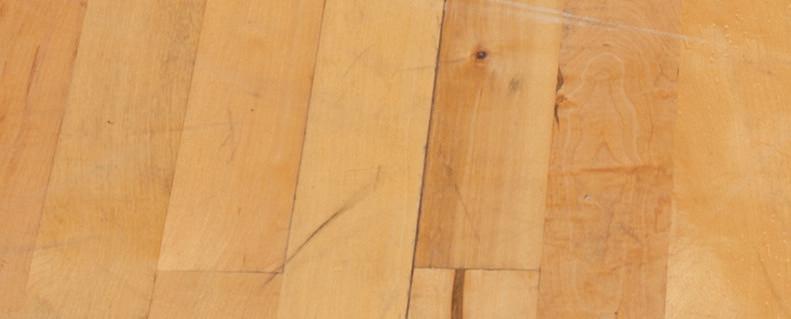







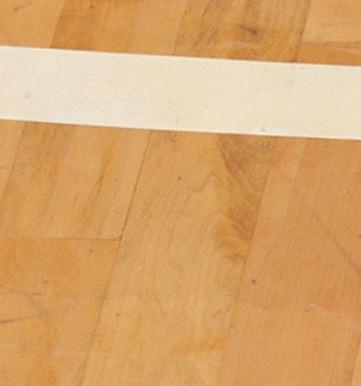












march

As state high school associations grapple with the shortage of officials across their respective states, some state associations have stepped up with various resources and/ or strategies to not only retain current sports officials but recruit new ones as well.
Starting in Michigan, the Michigan High School Athletic Association (MHSAA) made a ground-breaking announcement alongside NASO when the MHSAA announced that it would enroll all MHSAA officials into NASO, providing them NASO’s full complement of benefits. The move, which began at the start of this school year, provides all MHSAA officials with the nation’s premier officiating insurance.
Specifically, the MHSAA will provide officials new to officiating with a customized version of NASO’s popular recruiting guide titled Year One: What to Expect in Your First Year of Officiating, which is aimed at easing the transition into officiating during that critical first year. Recognized MHSAA associations are also covered with NASO’s Shield general liability insurance –designed exclusively to protect local associations.

“The MHSAA has enjoyed a partnership with NASO for years,” Mark Uyl, MHSAA executive director, said when









the agreement was first announced. “We are thrilled to expand this relationship in providing NASO membership to all MHSAA registered officials, providing a clear commitment and investment to all Michigan officials during this challenging time of recruitment and retention in the officiating space.”







The Colorado High School Activities Association (CHSAA) introduced a “You Look Good in Stripes” initiative in November. The financial investment has the CHSAA covering CHSAA dues and officials association dues for an officials first year. According to the
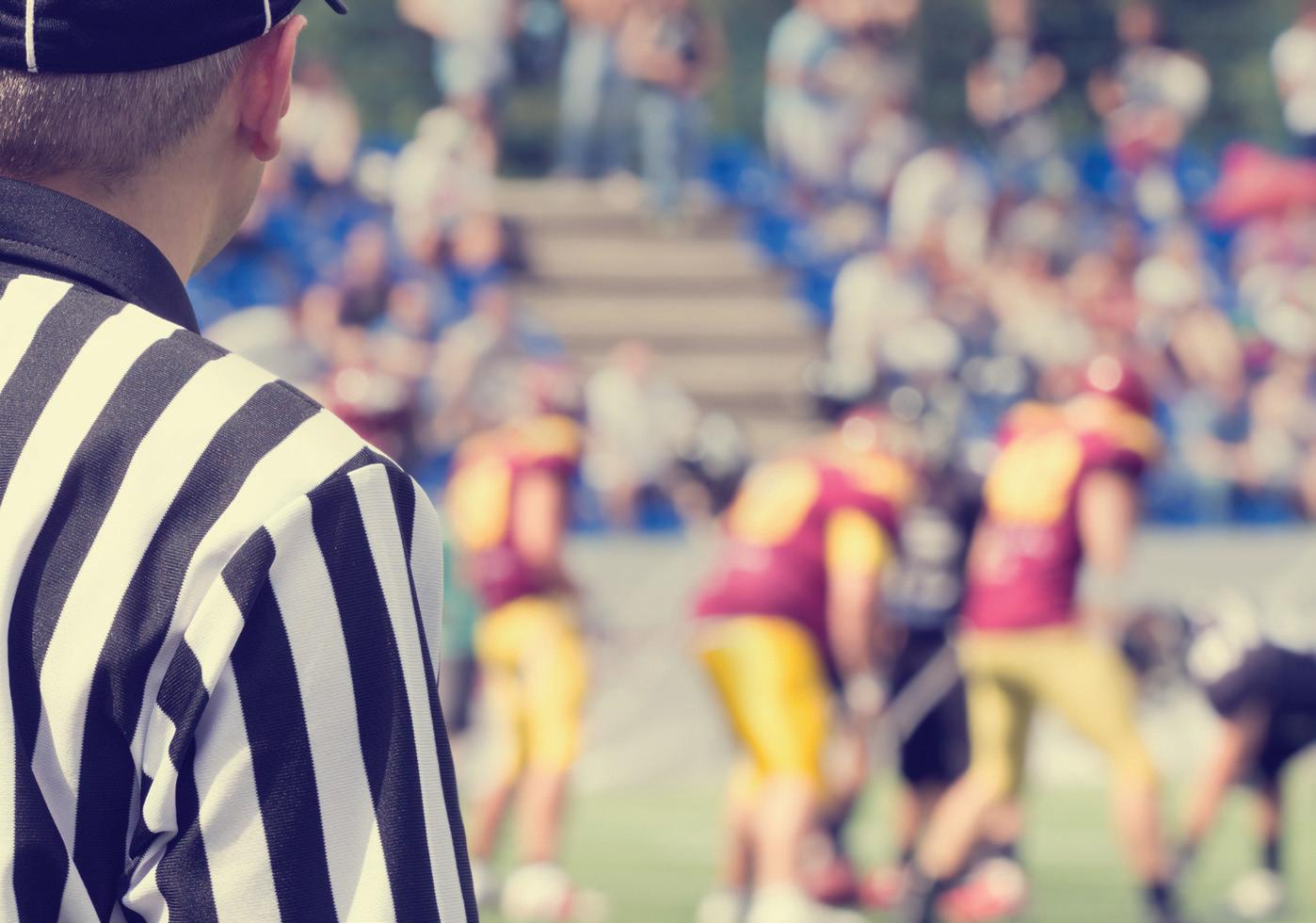
CHSAA, this covers each new official’s background check, insurance, testing, rulebooks, a membership to a sport-specific association and a membership to ArbiterSports.

“We are beyond excited to get the ‘You Look Good in Stripes’ initiative off the ground as we do everything we can to make getting started in officiating easily accessible to any and all who are interested in becoming an official,” CHSAA Commissioner Michael Krueger told CHSAA Now.
The Minnesota State High School League (MSHSL) hosted an Officiating Recruitment
Forum in October. Partnering with Minnesota Youth Athletic Services (MYAS), which according to the MYAS, is Minnesota’s largest multi-sport organization focused solely on youth athletics with more than 150,000 kids participating annually, the MSHSL hosted an online event to hear from officials sharing their own experiences about the benefits of officiating and steps to becoming an official.
Presenters were Jason Nickleby, MSHSL coordinator of officials; Tim Leighton, MSHSL communications coordinator; Brett Carlson, North Branch Area Public Schools community education director; Tony Schrepfer, MYAS director of
officials; Carolyn Derksen, MYAS assistant director of officiating/administration; and Lamarr Sullivan, 18-year veteran MSHSL official.
The hour-long recording is available at youtube.com/ watch?v=sHraZyrILYQ.
The Pennsylvania Interscholastic Athletic Association (PIAA), in essence, lowered its minimum age to officiate in the state by starting a Juniors Officials Program for 16- and 17-year-olds. Previously, only those who had turned 18 or graduated high school could become a PIAA-registered official.

PIAA junior officials are limited to contests at the ninthgrade level and below. PIAA
released a document detailing the program, which is available on the PIAA website at piaa.org/ officials.
Some of the guidance released by PIAA includes permitting junior officials to officiate at their current school district and waiving registration fees. Junior officials are required to pass an online test with a minimum score of 70 percent.
“I’ve asked chapters to put a junior official with a mentor, and if that can’t happen, to place them with a senior official,” Pat Gebhart, PIAA assistant executive director, told the Altoona Mirror. “I don’t think that a (junior official) should ever been assigned to a sporting event by themselves.”
Editor: Julie Sternberg
Sports Editor: Brent Killackey
Graphic Designer: Dustin Brown
Contributors: Don Collins, George Demetriou, Alan Goldberger, Luke Modrovsky, Patrick Rosenow, Tim Sloan, Jeffrey Stern, Brad Tittrington, Scott Tittrington, Bill Topp
NASO BOARD OF DIRECTORS
Dana Pappas, Lebanon, Ind., Chair
Robert Smith, Waterloo, Iowa, Vice Chair
Barry Mano, Racine, Wis., President
*Bill Topp, Racine, Wis., Secretary
*Bill Carollo, Shorewood, Wis., Treasurer


*Ron Foxcroft, Burlington, Ontario, Special Adviser



Dean Blandino, Santa Monica, Calif.
Lisa Jones, Phoenix
Paul LaRosa, Metairie, La.
Pati Rolf, Pewaukee, Wis.
Sandra Serafini, Yachats, Ore.
Ron Torbert, Hanover, Md.
Mark Uyl, DeWitt, Mich.
Rob Wigod, Los Alamitos, Calif.
*Non-voting members
NASO MISSION STATEMENT








The mission of NASO is to:
• Serve members by providing benefits and services.
• Improve officiating performance through educational programs.
• Advocate opportunities for officials and engage in programs to recruit and retain officials.

• Create alliances with organizations that benefit from healthy officiating programs.
• Enhance the image of officials.
© 2023 NASO/Referee Enterprises, Inc. All rights reserved. It’s Official is published by the National Association of Sports Officials and Referee Enterprises, Inc.
Find NASO @ facebook.com/NASOofficiating


One of the great benefits of being an NASO member is having access to the Member Information and Consultation Program (MICP). Every year, the NASO staff fields phone calls and emails from members seeking to utilize the program, which provides general guidance and information. In 2022, the NASO staff received more than 100 MICP inquiries from members across the country.
MICP assisted members with issues related to discipline, independent contractor responsibilities, assignment problems and insurance.
MICP includes a free information program handled internally by the NASO staff. NASO provides, free of charge but subject to availability, documents from the MICP legal
library that could be useful to members. Model bylaws for associations, reprints of pertinent articles, or sample contracts are a few examples that have been sent to members by request. It is an unlimited benefit to members.
Members can also use the consultation part of the program for up to three times per year. NASO can put a member in contact with an outside professional for an initial free consultation. That need is determined on a case-by-case basis by the NASO staff. The professional may be an attorney or from any other field that will offer value to an NASO member.
MICP offers practical and useful help for officials facing problems. If you have a question or concern, reach out to NASO in 2023 at 262-632-5448.





















When a sports official takes time and care to help someone in dire need, that is a great call. Actions by Jim Loffredo and Thom Dartt certainly qualify.
Loffredo, of Lake Placid, N.Y., and Dartt of Toledo, Ohio, are the most recent recipients of the NASO Great Call Award, which is given to officials whose positive acts have nothing to do with a game situation.

On Aug. 4, Loffredo was officiating a lacrosse game in the men’s 65-plus division of the Lake Placid Summit Classic. While covering a play at one end of the field, Loffredo heard players yelling for help at the other end. He looked back and saw a player on the ground. Loffredo stopped play and immediately ran back to the scene.

Another player was already doing chest compressions but since Loffredo had CPR training, he took over. Within minutes, two doctors who were at the game and two athletic trainers who were working the event arrived on the scene. The athletic trainers had an AED and utilized it on the fallen player, restoring his pulse. He had regained consciousness by the time the Emergency Medical Technicians (EMTs) were on the scene and preparing him for transport to the local hospital.
Loffredo’s CPR and the

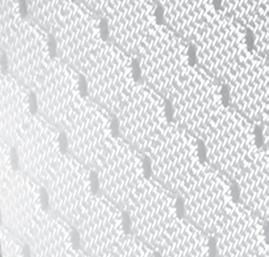



on-site AED saved the player, who spent one night at the hospital and was discharged the following day.

In a letter to Loffredo accompanying the award, NASO President Barry Mano wrote, “Thank you for staying focused on your life-saving efforts until the doctors and athletic trainers arrived.”
Before every game, Dartt and the other members of his high school football crew select a wheelchair-bound or other special needs child and present them with a gift package. It includes a penalty flag and a whistle. Those items are donated by Fleming’s, a supplier of officiating gear in Columbus, Ohio. The child also receives an official Wilson football courtesy of Andy Wentling, the plant manager of the Wilson Football Factory in Ada, Ohio.
With the help of the selected child’s parents, the honoree observes the pregame coin toss as well.
In the letter accompanying the award, Mano noted it was a Great Call “to start the Honorary Game Captain program designed to make an impact in the life of a special needs child attending the game. Your goal was to humanize the officiating profession and you are certainly doing that.”







 By Brad Tittrington
By Brad Tittrington
When former MLB umpire

Eric Cooper died in 2019 at age 52 after developing blood clots following knee surgery, it left a hole in the hearts of the baseball umpire community. Cooper was one of the most respected and wellliked umpires among his peers. After the Iowa native’s passing, an organization he cared passionately about, UMPS CARE — a past recipient of the NASO Gold Whistle Award — wanted to find a way to keep his legacy alive.
UMPS CARE, which is the official charity of MLB umpires, along with the support of Cooper’s family and MLB umpires, has held an annual bowling tournament the past two years in Cooper’s memory, with the money raised going to support the charities’ All-Star College Scholarship Program. The scholarship is for children adopted later in life in order to provide a college education to students who otherwise might not be able to afford
one. In 2020, the scholarship was named in honor of Cooper and the recipient was Marcus Lo. The bowling event helps raise money for that particular scholarship, which awards $10,000 annually over the course of four years.
I’ve had the opportunity over the past three years to get to know some of those who make the charity what it is, especially when I had the opportunity to write the Gold Whistle feature story on the charity in 2020. I’ve had the opportunity to participate in many virtual events UMPS CARE has held, but had not had the opportunity to attend any events in person. That changed last October when my brother Scott, who is also an editor for Referee magazine, and I decided to drive to Des Moines, Iowa, and participate in the bowling tournament.

The majority of the 140 people who attended the event were local Iowa friends and family of the Cooper family and it was a chance for them to get together and remember Eric while raising money for a great cause. Recently-retired MLB crew chief Jim Reynolds attended as well as retired MLB umpire Tim McClelland. Between bowling proceeds, raffle prizes and a 50-50 raffle, the event raised almost $30,000, nearly double the anticipated goal. It was a fun night being around other officials and some umpires I greatly admire and a chance to give back and allow someone the opportunity to achieve his or her dreams and goals.
So, what is it about this charity that makes me want to be involved with it? I am inspired by the work the





charity does on several different levels. The charity has multiple arms to it and each one of the programs it oversees is inspiring. From visiting hospitals to allow children with severe illnesses the opportunity to forget about what they are going through for a few minutes by giving them a Build-A-Bear experience, to bringing underprivileged kids and their families to a ballpark to experience a game and spend some time with umpires, to assisting those in the umpire community when they fall on hard times, to its leadership program, UMPS CARE truly changes lives. While its motto is “Helping people is an easy call,” it is an even easier call to want to be a part of this charity. I believe in the people who run the charity. I believe in the work the charity does and have seen some of what it does firsthand. It is inspiring and makes me want to be a better person.
I hope to have the opportunity to attend more events and contribute more to the charity in the future. While there are a lot of charities doing great work, this is one I truly believe in and have seen firsthand what it can do for people. It truly is great people doing great things.
Brad Tittrington is an associate editor for Referee







Stand up for officiating and be heard. The Referee Voices session at NASO Summits allows presenters to tell a story, give an insight, share a moment — all making you feel good about officiating. One of the presenters at the 2022 Summit in Denver was Esse Baharmast, a 2022 inductee into the National Soccer Hall of Fame. Baharmast was a FIFA referee for six years. He officiated two matches at the 1998 World Cup, three at the 1996 Olympic Games, one at the 1997 Copa America and five at the CONCACAF Gold Cup in 1996 and 1998. A former MLS and MISL referee, he is a past U.S. Soccer director of officials.
Baharmast is still widely known for a game that took place in 1998. He was briefly vilified for giving a late penalty (88th minute) to Norway in the dying minutes of their first-round game with Brazil. Video footage that came through days later showed he made the exact-right call. Norway’s striker was pulled down by a defender.

The scrutiny was intense, though. Before the magical video came forward … “For thirty-six hours I slept like a baby,” he said. “Which means I went to sleep, woke up a couple hours later crying.”


A couple of days later … “My wife says, ‘There’s a picture and there’s a video on the internet. Swedish television had a camera behind the goal, and they have a picture and a video, please take a look at it and tell me if this is what you saw,’” Baharmast recalled. “I look at this and I’m

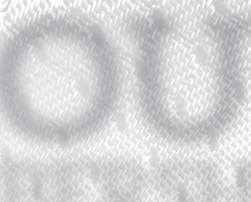
like, ‘Oh my god, there is a god, thank you, thank you, thank you.’ So, all of a sudden I go from goat, to GOAT.”




Baharmast knew it all along, but it was sure good to be validated. He gets asked all of the time why he made the call.
“My answer was, ‘Because the penalty was there,’” he said. “I saw it with my own eyes. And I’m not stupid. I don’t call a penalty in the 88th minute on a knicky-knacky call. It has to be a good call.”
Baharmast, the 2011 recipient of the NASO Gold Whistle Award, is now a GOAT with a different cause. He’s using his fame to help those in Ukraine.
“When the war in Ukraine (started), March 1 I was in contact with Kateryna Monzul who refereed the 2015 women’s World Cup final in Canada,” Baharmast said. “She was in the city of Kharkiv, 60 miles from the Russian border, and she told me, ‘It is horrendous, we are being bombarded.’”
Baharmast helped launch a GoFundMe page called “Do a Game 4 Ukraine” in which officials were encouraged to donate a game fee.
Nearly $40,000 has been raised for people like Monzul.
And his friend handled the UEFA Women’s Euro 2022 Final on July 31 in Wembley, England.
“When we arrive at this place, we have a platform,” Baharmast said. “This platform can help others. Let’s help them achieve their dreams, let’s ease their pain.”
If you’d like to view Referee Voices on various topics, go to referee.com/voices. The videos also make great material for an officials association training meeting.























Officiating has been a big part of your life; now you can make it part of your legacy.
We often hear from NASO members, past directors and longtime supporters about how proud they are to be a part of the work NASO does. Many ask how they can continue to support that work after they retire from active officiating and even further into the future.
Legacy NASO is a program whereby you may bequest a gift through your will or trust that ensures you can take care of your loved ones first, and then leave whatever else you choose to make a big difference in the future of sports officiating.
Through Legacy NASO, anyone who is interested in ensuring the continuing education and advocation of officials may designate NASO as a beneficiary of their retirement plan or life insurance policy, or
they may choose to remember NASO in their will.
Such gifts may be designated for unrestricted purposes in the form of a specific amount or a percentage of an estate. They may be designated for a specific purpose, such as the recruitment of officials, or for awarding and celebrating officials.
For over 40 years, NASO has been the only national organization dedicated to the betterment, education and protection of all sports officials at all levels. As a 501c3 non-profit, we are dedicated to provided resources for officials, advocating on their behalf, and setting standards for excellence in all aspects of officiating.











Funds gifted to NASO will be used to continue doing the following and more:





• Ensure advocacy efforts continue for officials to dispel unfair and malicious portrayals

of referees and umpires.
• Shine a light on the strong character and positive accomplishments of the men and women who officiate sports.
• Champion protections for officials under the threat of attack or assault through NASO’s legislative efforts to toughen laws.
• Support NASO’s educational work pursuing consistent excellence in officiating at all levels.
• Promote research into crucial officiating concerns, such as recruitment & retention, training, fees and sportsmanship.
If you want to learn more about Legacy NASO and how you can have a big impact on officials well into the future, go to naso.org/legacy. There you will find resources, learn more about the Legacy NASO Society and fill out an online interest form if you so desire.
While it should never happen, the reality is that officials must be aware of the possibility of an assault at any game at any level. More and more news headlines prove that.
For example, a basketball referee suffered a cut to the head that required stitches when he was attacked by players following an eighth-grade game in DeKalb County, Ga.
In another incident, a 72-year-old umpire from Middlesex Borough, N.J., was attacked while umpiring a 13U baseball tournament. He suffered fractures to his jaw.
What if you are assaulted and want to pursue charges? What should you do?
In the moment, the most critical thing is to get to safety. Then, after filing a police report and writing down game report details, it is important to know NASO is a valuable resource.
NASO members should reach out to NASO’s Member Information & Consultation Program. NASO can put an assaulted member in touch with American Specialty Insurance (ASI) for a free consultation. ASI may also put the member in touch with a local attorney if
the member is considering legal action. In an assault situation, NASO insurance will help with non-contingent legal fees.
The NASO assault protection provides up to $15,500 coverage for assault medical and legal expenses and loss of game fees resulting from injuries suffered when an official is the victim of an assault and/or battery by a spectator, fan or participant while the official is performing officiating duties. It provides up to $4,500 in legal services, $10,000 in accidental medical coverage and $1,000 game fees lost due to the assault.
As the president of our high school basketball officials association, one of my primary responsibilities is to assure that we are on solid financial ground, and that we are spending our association’s money wisely. I work closely with our treasurer and the board of directors to make sure we are budgeting for the needs and priorities of the association, while at the same time cutting out unnecessary expenditures. Here are a few ideas which may help your association cut costs and save money:
1. Engage the membership.
Each year we establish an annual budget and disclose it to our members at our first meeting, and then we post it on our website. We strive to be open and transparent about our spending such that our members can see where their dues are being spent. We lay out key spending initiatives such as training, evaluations and recruiting; and seek active involvement by our members to help us save money.
2. Shop around.
Year after year it is quite easy to become complacent and stick with the same vendor, bank, processing company, supplier, etc. Further, it’s not always easy or popular to change from someone with which you’ve had a longtime relationship. However, if you don’t shop around, how do you know you are getting the best deal? It never hurts to shop around for the best deal, and
unless you make it a practice you will never know the type of savings you are missing out on.
3. Focus attention ‘on the table.’
During the budgeting process we inevitably come to the realization that certain expenditures are “off the table” in terms of budget cut discussions. These often involve those necessary expenses every association incurs to fund the general business. Further, key priorities of the board must be funded to attract and retain members. Once these “off the table” items are identified everything else is “on the table” and fair game in terms of possible cuts. Be mindful that certain expenditures are required and necessary, and the quicker you can identify these the quicker you can focus on everything else.
4. Run it like a business.
While our association is a not-for-profit entity, it is incumbent upon the board to run it like a business, and that means constantly watching
Running a local officials association is demanding. You volunteer your time and effort to make it the best you can. But there’s no reason you have to do it alone. NASO Association Advantage exists to help you face any challenge and elevate your association in the process. Whatever challenges you have — training, insurance, legal issues, meeting help, bylaws and organization, membership issues and more — WE HAVE A SOLUTION TO MEET YOUR NEEDS.
PLATINUM & PLATINUM SHIELD
Association Advantage Platinum is the premier resource for maximizing the performance of your group, providing leadership and administrative resources to help you elevate your organization with a focus on training,
the dollars and cents. We are fortunate to have several members on our board who are active in business and have a keen eye for identifying unnecessary expenses. With a goal of keeping association dues low, we focus on our spending first, which leads to open dialogue about how to cut expenses and save money for our members. While we are mindful not to turn a profit, by having this mindset it allows us to be good stewards of our association’s finances.
While each association has its own unique expenditures, here are a few items you may want to take a closer look at:
• Banking costs
• Travel-related expenses
• Materials and supplies
• Website and social media costs
• Credit card processing fees






• Meeting expenses
• Evaluation costs
Joe Erwin is the president of East Coast Basketball Officials Association in Palm Beach County, Fla., and has been officiating for more than 30 years.
assigning, legal issues and best practices specific to local officials association management.
TITANIUM & TITANIUM SHIELD
The Titanium solution is ideal for officials associations that want to maximize their organization’s performance while fully protecting both their organization and individual members.







DIAMOND
The most comprehensive solution for officials associations that want to fully protect both their organization and individual members, as well as provide full training and testing solutions with an emphasis on video. Association Advantage Diamond is the ultimate answer to every challenge your association faces.



To learn more, go to NASO.org/Advantage or call us at 262-632-5448

During the 2022 NASO Summit’s opening session, NFL referee Ron Torbert said the theme “Make Officiating Count” felt appropriate because of an unfortunate truth facing the industry — the shortage of officials. Torbert, who joined the NFL in 2010 and worked Super Bowl LVI, said the primary reason isn’t a mystery.





“People try to blame it all on the pandemic, but this problem predates COVID-19,” he said. “We know the primary reason officials are leaving the profession, particularly at the youth sports level, high school level, is there’s a toxic environment that’s been created by unruly and entitled parents, spectators and coaches.”


Survey data points to the behavior officials encounter as the main reason officials are departing the avocation, he said.
Torbert, who joined the NASO board in 2022, said the phrase “make officiating count” has more to do than just with numbers.
“It’s about making officiating have an impact. … Make it important,” he said. “Making officiating count means helping others see what we already know. Officiating matters. We matter, and frankly we count more than ever before.”
Torbert shared three reasons why officiating matters:
“Officiating matters because organized athletics matters,” Torbert said.
The sense of loss was real during the pandemic when games, tournaments and whole seasons were canceled. The loss was felt not only by officials, but players, coaches and fans. And then, fortunately, things started getting back to normal.
“We got to see the excitement and feel the sense of anticipation late in 2020 as sports began coming back,” he said “In a very real way sports helped heal the nation, helped heal the world and helped us find a sense of normalcy as we faced a pandemic that was unprecedented in most of our lifetimes.





“Sports officials were at the center of that healing process.”
“There is a crisis of integrity in this country,” Torbert said. “That’s not a political statement, that’s just a fact. People don’t trust their leaders in Washington. People don’t trust their leaders in their state houses, their county commissions, their city halls. People don’t trust the media to tell us the truth. And we don’t trust them because we have doubts about their integrity.”
In the absence of integrity elsewhere, the example officials set matters more than ever.
“Is there any better example, is there any better model of integrity than today’s sports official?” Torbert said. “I’m talking about the person who despite family and job commitments finds the time to master the rules of their sport, to work on their mechanics until they become second nature, and then manage an athletic contest between two competitors without bias, not caring one bit who wins or who loses, their only goals being to keep the contest fair and keep the participants safe.
“That’s what we do every day. Is there a finer example of integrity than the officiating crew? Think about it. A group of people coming from diverse backgrounds, different genders, different races. … And when
they get together and they put on that uniform the only thing they care about is being the best team on the field or on the court. Each one does his or her own job but recognizes how that job fits into the greater crew concept. The crew doesn’t care about individual accolades because the crew members realize that the path to meaningful success is through crew success.”
“Finally, officiating matters because accountability matters,” Torbert said.





Why? Because people are watching, especially athletes. They are learning from the example of officials.
“It’s much easier to pin the blame on someone else or something else than to look at my own lack of preparation as the reason why I made a mistake,” Torbert said. “Well, then who better than the modern sports official, the accountability model to the rest of the world? We work tirelessly to be perfect on game day, and yet we’re the first one in line to own up to a mistake. We hold ourselves accountable to ourselves and to our crewmates. … We’ll pick them up when they have a bad game. Maybe offer that almost imperceptible fist bump on the field when they make a great call. For us it’s all about getting better, trying not to make the same mistake twice, the next game, the next play, the next year pushing toward that goal, that always elusive goal, of being perfect every time out. That’s what we do. That’s what accountability is all about.”
So, there’s no doubt about it, officiating matters. Now the challenge for the industry is to get others to see that.











 By Tim Sloan
By Tim Sloan
“Anyone who works for me will wear a collar and tie.”


So said the officiating coordinator of a soccer league I worked in the 1980s. I was 26 years old, up to the FIFA fitness standard, had 300 games under my belt, aced the rules exam — but my fate would be guided by what I looked like when I showed up at the park. In this gentleman’s way of seeing things — a man I respected — his stipulation was about professionalism: notwithstanding everything else needed to make the grade, a standard of appearance and presentation was not negotiable.
In 1985, I wore a tie to work. Then they started having “casual Fridays.” Then somebody showed up in jeans on Thursday and wasn’t walked out. Today, I would guess many of us don’t even own a tie, let alone a suit — at least, one that still fits: What has the world come to? We might question, loudly, what the sartorial splendor of our civies ever had to do with calling a good game. Technically, it doesn’t, but practically, how you present yourself speaks volumes about who you are. The means of presentation has simply changed over the decades.
Wherever you go, you’re being watched and observed. Therefore, how you behave — how you fit the bill — is paramount. Professionalism, of course, is about way more than how you look in an Armani. There’s behavior, reliability, effort, performance, maturity … the list goes on. The point here



antics during games. But what about you? And me? Do we put enough time into thinking about how we play the part? The more we conform to what our true benefactors expect, the more tolerance and respect we get for how we work a game; that benefits the participants just as much as all of us. It’s the prime directive.
We’ll draw the line short of the appropriate PJs a person of your stature should own but here are some gameday tips to help people believe in your professionalism:
is that to be a successful official you must fit the surroundings of the aquarium in which you swim. The more you aspire to, the less bandwidth you have to diverge from how the players, coaches, fans, announcers and fellow officials expect you to act.
NFL great Jerry Markbreit had his cleats professionally polished before every game he worked. Ron Luciano was an excellent AL umpire but reviled by some for his nonconformist
Coordination: I work for a company that has a preferred supplier and at least one alternate source for any raw material. In the case of the preferred supplier, price is important but only a part of value. The value of the commodity includes the ease of interaction between the supplier and us and the little things they do to make our life simpler. As an official, how much do your coordinator(s) and the ADs value your services? They probably pay every official the same, but what do you do to make them look forward to working with you? Do the paperwork promptly, respond affirmatively to any correspondence, check in with them about any lastminute details. Professionalism is not making others feel like they serve you.
Wherever you go, you’re being watched and observed. Therefore, how you behave — how you fit the bill — is paramount.
Appearance: Since we already brought it up, look sharp when you walk in the door. If there’s a dress code, obey it. Dress neatly, groom yourself appropriately and walk into the place looking like you have a sense of purpose. Zip your equipment bag, wipe your feet, don’t lay across three rows of bleachers watching the game before you: Make a great first impression.
Comport yourself like you’re next door to the HR manager: The world we live in today is all about traps. When I started in this business, I knew some respected officials who were just ferocious SOB’s. They ran their games with a whip and a chair and many of the coaches would have it no other way. Today, they’d be so gone, so fast. The best way to get rid of an official you don’t like today is no longer to provide the final straw for poor performance; you can ruin them by quoting the right word, phrase or sentence, or catching them looking in the wrong place at the wrong time. Don’t fall into that trap. Most of us know those rules without being reminded, but don’t let your guard down because you happen to be among guys/gals and in your element. Be bright, be brief, be gone, as a true professional.

Don’t be a maverick: Every major league, organization and coordinator has spent the last several years bleaching variability out of its officiating ranks. It’s not that they don’t believe there can be other ways of calling this penalty or signaling that foul; it’s just that non-conformists are now so easily associated with having ulterior motives. Luciano’s outout-out-out-out-outs at first base didn’t make his calls more
correct in 1974; fortunately, they entertained enough people that it made the game more fun. Today, the number of “outs” he shouted might be suspected as code for how he’ll call the next play, or something. Professionalism is the ability to put aside your own ways for the greater good.


But don’t compromise your morals: In recent years, various entities have tried to tell us how they own us: “You work for us; we pay your game fee; therefore, you will ________.”
Professionalism isn’t taking your ball and going home if they ask you to fill in that blank in some way you don’t agree with. It’s making sure they already understand how you fill in the blanks before you ever get there. Establish a reputation for honesty, integrity and decency. With those three things, you stand the best chance of working out a professional working relationship with anyone in the game.
Afterward: Everyone understands a thirsty official. What they don’t understand is a drunken one: You get the drift. Postgame for a professional official shouldn’t be the witching hour; it should be a time you’re observed relaxing, enjoying, but behaving yourself. If you can’t do that, get help, or get out.
Reader’s Digest might have been proud of how some of the foregoing concepts were condensed into a page or two. All I can say is this: Professionalism exacts expectations of us by the public and others who monitor us.
Professionalism is directly proportional to our credibility, and, without our credibility, we have nothing. Think about how you come across to others, as
an official. You probably won’t like everything you see, but hopefully this primer might give you some ideas of how to fix it.







When you work to protect your professionalism, you work to protect the officials and the game itself.
Tim Sloan, Davenport, Iowa, is a high school football, basketball and volleyball official, and is a former college football and soccer official.
It’s a common refrain among basketball officials: “That half took an eternity. Both teams were determined to use every timeout. We would have been done 15 minutes ago if they hadn’t.”






But are we willing to look at ourselves in the mirror and understand that if we actually handled those timeouts properly as an officiating crew, we indeed would have been done a few minutes earlier?
The NFHS and NCAA rulebooks clearly define how timeouts should be handled, from duration to resumption of play to where the officials should be located on the playing court during these stoppages of play. However, many officials either do not understand the rules or choose not to enforce them as written, and in the process end up allowing a lot of wasted time to creep into their games.
Let’s break down some of the rules verbiage and see if there is a way you can improve your timeout administration to

eliminate most, if not all, of this dead air.
First, let’s define “warning horn.” Both the NCAA and NFHS codes are similar in that a warning horn is signaled 15 seconds before expiration of a timeout, replacement of an injured or disqualified player, etc. That seems pretty simple, but is it? The rules in both codes continue to say that once the warning horn is signaled, “immediately players shall prepare to resume play … and play shall be resumed immediately upon the sounding of the second signal.” The latter portion of the rule is what most coaches do not fully understand and comply with, or some officials do not enforce.






The official should come to the huddle and both verbally announce, “First horn” and visibly show it with a vertical index finger. A good practice is to solicit the help of an assistant coach who will be more likely to get the huddle broken rather than you trying to get the attention of the head coach. Before we leave the huddle, officials usually clap, yell and try to persuade the huddle to break as soon as possible. Once you accomplish that, quickly leave the huddle and get to your next spot for the ensuing play. By getting to our spots, it sends a message to everyone that we are about to resume play at the second horn. Coaches are supposed to know what the horn means, and if we have done our job in notifying them of such, let’s lead by example and get ready for play.
The codes have some differences on how to handle a team(s) if they do not come out of the huddle, so this is where the resumption-of-play (ROP) procedure comes into effect. In NFHS, when a team
is not ready to play after a timeout, the ROP procedure is in effect and play is resumed with the ball being either given to the throw-in team/ free-throw shooter or placed on the floor at the throw-in spot or at the free-throw line (7-51a). Repeated instances by the same team, or any subsequent occurrence after both teams have violated this provision, result in a technical foul (7-5-1c, 7-5-1d).
In NCAAW, an ROP warning is issued on the first offense and noted in the scorebook before the ROP procedure can be utilized on subsequent timeout-huddle delays (4-9.1.d, 4-9.2). In NCAAM, following the warning on the initial delay, a Class B technical foul is charged to the head coach every time it occurs (4-10.1.b.3, 4-10.2). Obviously, these procedures are an advantage for one team and can cause a variety of violations after the ball is placed at the team’s disposal. However, using this tool, allowed by rule, usually works well for its intended purpose: getting the teams to resume play in a timely manner.









Another issue is what the officials do during timeouts. All codes are specific about where to stand depending on the timeout length. A problem exists when the mechanics are ignored. The official with the ball for the ROP should never leave that spot. That way everyone in the gym, including coaches, knows where the ball will be put in play. If the official(s) need to chat, do so at the ROP spot. Do not converse for the sake of something to do or because you might not want to stand alone. Only get together if important information needs to be shared
or asked. Frequent and long get-togethers can be perceived in a negative light and must be kept to the necessary.

All codes give the mechanics/procedures in how to end timeouts and resume play. When we consistently enforce the rules, the teams will be more apt to comply. If done correctly, there will be continuity after long, and at times awkward, dead-ball periods.

The dugout is a place for players and coaches to store their equipment and keep themselves safe from screaming line drives that could take off their heads. With that risk, why do so many players and coaches at the NFHS and NCAA levels want to sit outside the dugout on an uncomfortable bucket? And why do some umpires allow players and coaches to sit or stand outside the dugout in violation of the rules? Is it that umpires don’t have the fortitude to deal with the problem? Are they afraid that by doing so, it will negatively impact future assignments? Let’s look at some of the problems and some of the tools that umpires have for dealing with dugout situations properly.
Extending the dugouts. Teams are not allowed to extend dugouts in a direction closer toward the plate (NFHS 1-2-4; NCAA 1-16b). The NFHS rule also prohibits the extension closer to the foul line. Yet many coaches want to make a “ground rule” that
permits them to be outside the dugout in an area closer to the plate.
And many umpires do not enforce the rules and allow players and coaches to sit outside of the dugout. Coaches and umpires are not permitted to make a ground rule that is in conflict with the playing rules (NFHS 4-1-2; NCAA 4-5).
Dugout control. Reserve players and coaches who are permitted outside of the dugout is another dugout-related problem.
Multiple players on deck and coaches that roam outside the dugout boundaries are among the worst offenses.
Only the people involved in the play — the batter, runners, on-deck batter, nine fielders, base coaches — are permitted in live-ball territory. Quite often, multiple batters will “get loose” before their turn at bat. However, the rule says only one on-deck batter is permitted (NFHS 3-3-1i; NCAA 5-2c).
Dugout penalties. The rulebook penalty for infractions of those rules is a warning on the first offense and then ejections on subsequent offenses.
Sometimes all it takes is a simple reminder to the players and coaches to get back into the dugout. Don’t be aggressive; be very polite. Presenting your request as a question — “Coach, can you please move back into the dugout?” — can get compliance without confrontation. The base umpire can take the lead on enforcing the rules.







If the problem continues after a friendly reminder, umpires should take the next step and issue a formal warning. The warning must be communicated to the head coach and written down. After


that, the next offender should be ejected.
There are two key reasons why umpires need to remain diligent in enforcing these dugout rules.
First, having additional players and coaches in liveball territory creates an even greater possibility of interference with a batted or thrown ball. While interference rulings are sometimes a necessary part of the game, there is no sense in allowing such situations to develop when there is simple remedy such as keeping people in the dugouts where they belong by rule.
Second, no umpire wants to see a player or coach get hurt by a foul ball. If that occurs, and the umpire chooses to ignore the rules and allow a coach or player to sit outside the dugout, the umpire may end up in court if there are lawsuits over the injury. Legal issues are definitely bigger issues than warnings and ejections. Enforce the rule and keep everyone safe.
A premature whistle is the bane of football officiating. I rarely go to a retirement dinner without hearing a story about an inadvertent whistle that was blown 20 years ago. I’ve previously avoided writing an article solely on errant whistles because the topic is so narrow. The realization that inadvertent whistles will always be more of a part of our football lives than we would like has changed my
mind. OK, I’ll confess: My real motivation in writing this is I blew my whistle at the wrong time during a state semifinal playoff game many years ago. More on that later.
There are no official statistics available as to the causes of inadvertent whistles, but I would submit the number one reason is not seeing the ball or not knowing where it is. If you can discipline yourself to never, ever blow your whistle unless you can see the ball (hopefully in possession of a player who is down by rule), you can greatly diminish the likelihood attendees at your farewell dinner will be entertained at your expense. If the entire crew follows that philosophy, you most likely will have two or three plays per game on which no one blows a whistle. There is nothing wrong with that.
Just like most rules, there is an exception to the above. If a player’s forward progress has been stopped, you can whistle to signify the down has ended and not worry about where the ball is. Stripping the ball from a player who is in the grasp of two opponents and is being hurled backward is not a change of possession.








A distant number two reason for premature toots is lack of knowledge of a rule. NFHS 4-2-2 and NCAA 4-1-3 tell us when the ball is dead. If we erroneously add to those rules, we will need to apply NFHS 4-2-3 or NCAA 4-1-2b.
Here is a play that occurred a few seasons ago. As the runner approached the goalline, his arm was struck and the ball bounded into the end zone, where it was recovered by a defender. The back judge, believing the ball was dead when it broke the plane of the
goalline, whistled it dead.
When officials who normally work under high school rules are asked to work NCAA games, offside calls present a unique problem. Under NFHS rules, when the defense breaks the plane of the neutral zone after the ball is ready and the snapper has touched the ball, it is a deadball encroachment foul. Not so under college rules; the defense may return to its side of the line before the snap without penalty as long as contact is not made nor an offensive player is induced to react. Blowing the whistle in that situation is almost instinctive and has gotten many an inspiring college official in trouble.

See the ball and know deadball rules. Those concepts will keep you out of trouble unless your name is George and you’re working a prep playoff game in Flagler, Colo. The kickoff from Granada was a line drive to the 10 yardline and got past the deepest receiver. The ball landed on the one foot line and the referee, properly positioned on the goalline, anticipated a touchback. Instead the ball bounced straight up and reversed direction without ever breaking the plane of the goalline. So far, so good — no touchback, no whistle. The semi-frantic receiver overran the ball without touching it, reversed direction and, while in the end zone, scooped up the stationary ball. Player in end zone, ball in field of play — no touchback, no whistle. Time to start the clock. As the runner approached the five yardline, the referee wound the clock and finding his whistle inexplicably in his mouth, he blew it as if signaling the ready-for-play. You can’t take some guys anywhere.
The saving grace to that play was it occurred in the last three minutes to a team down, 58-6. The players were happy to get the replay and the opponents didn’t seem to mind. Chances are, you won’t be that lucky! George Demetriou has been a football official since 1968. He lives in Colorado Springs, Colo.












 By Brad Tittrington
By Brad Tittrington
When it comes to interference, there are a couple of myths that have permeated the sport. The first one is that there must be contact in order for there to be interference. The second is the opposite of the first one in that if there is contact, then it is automatically interference.


Because of that second myth, there is a particular play that has seeped into the game, especially at the higher levels of play. This play involves a fielder, typically one of the middle infielders, intentionally creating contact with a runner in hopes of getting interference called. Once the ball is hit, fielders are being taught to run directly at the runner in front of them and reach out their glove and create contact. Coaches and fielders have a misperception that contact automatically means interference. And if umpires have this same misperception, a team may get an advantage by having interference called when the actual correct call should be either obstruction or incidental contact, play on.
The one thing to remember with interference is it is a judgment call. While some rules are black and white,

interference does have some gray area that is open to interpretation. In all codes, in order for there to be interference on a runner in this particular play, the runner must impede the fielder’s ability to make a play on the ball. What often happens on this play is the fielder immediately runs toward the runner and extends the glove at waist level, or even higher, and makes contact with the runner running in front of the fielder. Is that interference? Is a fielder really being impeded from fielding a ball if that fielder isn’t even attempting to field a ball? If the ball is rolling on the ground either in front of the fielder or off to the side, is a fielder with a glove outstretched in the air really making an effort to field the ball? This is where judgment and common sense must be used to rule on this play correctly.
Generally, this play is much easier to adjudicate with more umpires on the field. In the two-umpire system, it can be difficult to get a good angle to see what the fielder is doing if the base umpire is on the opposite side of the infield. In the three-umpire system, there are usually at least two sets of eyes that can get an angle to see this play much more clearly.
There are a couple of signs to look for to help judge this play. First, look at the fielder’s eyes. If the fielder is looking at the runner as opposed to tracking the ball, chances are the fielder is trying to intentionally make contact as opposed to naturally fielding the ball. Secondly, look at the glove. If the fielder gets close to the runner and then reaches out the glove to create contact, again, this is probably
an attempt to create contact as opposed to making a play on the ball. Lastly, know where the ball is located. If the ball is to the left or right of the fielder and the fielder never moves to make a play on the ball and instead goes straight toward the runner, chances are this is not interference.

The main thing in this situation is read the play. Just because there may be contact, do not be in a hurry to kill the play and call interference. You have some time to process the entire play and then make a ruling. It is better to let the play finish and then declare interference than to immediately kill the play and realize there really wasn’t interference. You may even let the play finish, then get together with your partner(s) and figure out exactly what happened.
Remember, when it comes to interference, a baserunner is responsible for avoiding a fielder trying to make a play on the ball. Umpires are tasked with determining what exactly making a play on the ball looks like. If you notice the fielder doing any of the three things listed above that are signs the fielder is intentionally trying to make contact, it should get your attention. The key is to see the play from the beginning.
Be aware that if there is contact and you don’t rule interference, the defensive coach is going to question you. Be prepared and explain to the coach the fielder intentionally created contact and was not in the act of fielding the ball. The only way to get this type of play out of the game is to not reward it. The more umpires rule this play is not interference, the more likely
coaches will quit teaching it and it will help clean up the game.
Brad Tittrington is an associate editor for Referee. He umpires D-I softball and officiates women’s college and high school basketball, college and high school volleyball and high school football.








Play: A1 is holding the ball for team A’s throw-in along the endline in team A’s frontcourt. The game clock shows 2:24. A1 releases the ball on the throwin, and B2 then reaches through the plane of the out-of-bounds boundary and touches the ball after it’s released, but before the ball crosses the boundary plane. The game clock starts when B2 touches the ball, and the ball continues onto the playing court, where it is caught by A3. Is B2’s touching legal? Ruling: In NFHS, since B2 did not reach through the plane of the boundary line until after the ball was released on the throw-in, the touching is legal, and play shall continue uninterrupted (9-2-10). In NCAAM, when B2 reached through the plane of the boundary line before the ball has crossed that boundary, B2 committed a throw-in violation. Team A shall receive a throw-in at the spot nearest B2’s violation. Additionally, since B2’s touching was not legal, the game clock shall be reset to 2:24 (5-10.2.a, 9-4.2.3).
In NCAAW, when B2 reached through the plane of the








boundary line before the ball crossed that boundary, B2 committed a delay infraction, and team B shall be issued a delay-of-game warning. Team A shall receive another throwin at the original throw-in spot. Additionally, since B2’s touching was not legal, the game clock shall be reset to 2:24 (4-9.1.g, 4-9.2, 5-10.2.a, AR 102).
DH Maneuvering
Play: NFHS and NCAA only: Using a 10-man lineup, the home team has Larry as the DH for the pitcher, Mike. In the top of the fifth, Scott is moved from F4 to F1 and Ken comes off the bench to play second, replacing Mike. In the bottom of the fifth, Larry leads off and singles. After the first pitch to the next batter, the opposing coach appeals for an illegal substitute. Ruling: In NFHS, nothing improper has occurred. Larry is still the DH but is now batting for Ken because Ken entered in Mike’s spot in the order. In NCAA, Larry is declared out. When a defensive player becomes the pitcher, the DH is terminated. Larry is an illegal substitute as he was removed from the game. Scott had to stay in his spot in the order with Ken entering to bat in the original P/DH spot (NFHS 3-1-4; NCAA 5-5j1, 7-2b8).
Airborne Bat
Play: With the hit and run on, B2 swings and throws his bat at an outside pitch. He makes contact; the ball goes toward F1 and the bat lands at F1’s feet. Ruling: Interference is called only if the bat alters the play (NFHS 7-3-6; NCAA 7-11n; pro 5.09a8 Cmt).
Play: Fourth and 10 on team K’s 20 yardline. K1’s punt is high but not particularly deep. K2 catches the ball at team K’s 43 yardline. Ruling: If a team R player was in position to make a catch, K2 is guilty of kick-catch interference. In NFHS, team R would have the choice of a 15-yard penalty from the previous spot, or an awarded fair catch at the spot where K2 made the catch and a 15-yard penalty or an awarded fair catch at the spot of the catch. In NCAA, the penalty is 15 yards from the spot of the foul. If no team R player could have caught the kick, it is first touching (NFHS) or illegal touching (NCAA). Team R would take over at the spot of K2’s catch. In either case, the ball is dead when K2 catches it (NFHS 6-5-2, 6-5-6 Exc., 6-5-6 Pen.; NCAA 6-3-2a, 6-4-1 Pen., AR 6-4-1 V).
Play: A1 removes his helmet (a) during an injury timeout, or (b) as he is leaving the field after being called for a penalty during the previous down. Should A1 be penalized? Ruling: NFHS has no rule mandating that players keep their helmets on in those situations. As a result, there is no foul in (a). In (b), unless A1 threw his helmet or verbally abused an official or opponent after removing his headgear, there would be no foul. In NCAA play, there is no foul in (a). However, it is a deadball unsportsmanlike conduct foul in (b) regardless if A1 added commentary. A player may not remove his helmet unless there is a team, media or injury timeout or during measurement for a first down. Also, there is
no foul if the helmet is knocked off during play or is removed between periods. The penalty for illegal removal of the helmet is 15 yards from the succeeding spot (NFHS 9-8-1d; NCAA 3-32a-16, 9-2-1a-1f).
Play: R2 is on second with a 3-1 count. F1 commits but delivers an illegal pitch. B1 steps on the plate and hits a foul ball. Ruling: In all codes, the ball is delayed dead on the illegal pitch but becomes immediately dead when B1 steps on the plate and hits the foul ball. The offensive team has an option on this type of play. The offensive head coach can elect to take the result of the play (which would be an out for contacting the ball while in contact with the plate in NFHS, USA Softball and USSSA. In NCAA, it would just be a strike) or accept the penalty for the illegal pitch, which would be a ball added to the batter’s count in all codes. The offensive team is obviously going to choose the latter. Play continues with B1 being awarded a ball, which would be ball four, and awarded first base (NFHS 6-1-1 Pen. and Exc. 2; NCAA 10-8 Eff.; USA Softball 6A-11b-2; USSSA 6-3).
Play: R2 is on second with one out. B3 hits a hard ground ball up the middle toward second base. F6 was playing up the middle. Before F6 is able to field the ball, R2 retreats to second base and is hit by the batted ball while she is in contact with the base. F6 was playing shallow and is in front of the base when the ball hits R2. There was no intent by R2
to be hit by the ball. Ruling: In all codes, R2 is not called out for interference since she did not intentionally interfere and was in contact with the base at the time she was hit by the batted ball. The ball remains live and play continues (NFHS 8-8-13; NCAA 12-1-5; USA Softball 8-8m; USSSA 8-18n Exc.).

Play: During the taking of a penalty kick, the goalkeeper has one foot in front of the goalline with the heel touching the goalline and one foot behind the goalline. The kicker shoots and the goalkeeper saves the penalty kick. Ruling: Legal (NFHS 14-1-3; NCAA 14.2.3; IFAB 14.1).
















Play: A1 is on the attack and moves toward the goal on an angle from the touchline. As A1 nears the goalline, a pass is made back to an area near the penalty mark. The momentum of A1 results in A1 falling into the goal, over the goalline. A2 receives the pass, shoots and scores. Ruling: This is a goal provided that A1 did not attempt to interfere with the play in any way, including yelling at the goalkeeper (NFHS 11-1-3; NCAA 11.2; IFAB 11.2).
Play: B1 commits a dangerous play and the referee stops play and awards an indirect free kick. The referee fails to raise the hand over the head to signal for an indirect free kick. A1 takes the kick and it strikes B2 in the back and deflects into the goal. Ruling: A goal is awarded despite the fact that the referee did not
raise the hand to signal for an indirect free kick. The kick ended when the ball touched a second player (NFHS 13-3-4; NCAA A.R. 13.1.3e; IFAB 13.1).
Play: During serve receive, R1, who is left-front, is eager to get to the right side of the net. Prior to the opposing team’s server making contact with the ball, R1 sprints to the right side of the net. R1 completely crosses over R2, who is centerfront, and is roughly three feet beyond R2 when the server finally contacts the ball. Ruling: In all codes, this is a position fault/illegal alignment. At the moment of contact for serve, all players must be in their correct position. Because R1 no longer has a foot closer to the left
sideline than R2, R1 is no longer in the proper position. Team R should be whistled for the fault and a loss of rally/point awarded to team S (NFHS 6-4-3b; NCAA 10.3.1; USAV 7.4.3.2, 7.5.1).
Play: Team A’s outside hitter attacks a ball near the antenna. The ball ricochets off of a team B blocker and hits the antenna. Moments later, team A’s outside hitter contacts the antenna on the follow through of the attack hit. Ruling: An antenna fault should be signaled against team B. At the moment the ball contacts the antenna, the ball is dead and the consequent action of team A hitting the antenna should be ignored. The referees should award a loss of rally/point to team A (NFHS 9-3-3a; NCAA 16.2.24; USAV 8.4.3). If both faults occur
simultaneously, then it would be a double fault and the point would be replayed.
Play: S1, who is right-back, lines up to serve near the left sideline. S2, who is middle-back, is pushed up against the right sideline, and S3, who is left-back, is next to S2, but closer to the left sideline. As S1 contacts the ball for serve, the second referee blows a whistle and signals a position fault/illegal alignment against team S. Ruling: Incorrect procedure in all codes. During a serve, a serve does not need to be in the correct rotational order and may be anywhere along the endline. The other five players must be in correct rotational order. In this case, the serving team is legal and a replay should be signaled (NFHS 6-4-3a; NCAA 10.3.1; USAV 7.4).
The National Association of Sports Officials (NASO) is a nonprofit, educational association providing services and benefits for sports officials. It is run by officials, for officials. If you know a good candidate for membership, please send us his or her name and address. We will forward an invitation to join. For more information contact 262-632-5448 or www.naso.org/membership
NASO EDUCATION PARTNER PROGRAM MEMBERS:










Alabama High School Athletic Association
American Specialty Insurance & Risk Services Inc.


ArbiterSports


Arizona Interscholastic Association
Arkansas Activities Association
Atlantic 10 Conference
Atlantic Coast Conference
Big East Conference
Big Sky Conference
Big Ten Conference
California Basketball Officials Association
California Interscholastic Federation
Canadian Football League
Chief Zebra Enterprises
Cliff Keen Athletic
College Football Officiating LLC
Collegiate Officiating Consortium
Colorado High School Activities Association
Court Club
Demosphere
Fox 40 International
Fox40Shop.com
Georgia Athletic Officials Association
Georgia High School Association
Get It Right Enterprises
Honig’s
HUDL
IAABO Inc.
Illinois High School Association
Indiana High School Athletic Association
Iowa High School Athletic Association
Kansas State High School Activities Association
Kentucky High School Athletic Association
Louisiana High School Athletic Association
Louisiana High School Officials Association
Major League Baseball
MIBT Media
Michigan High School Athletic Association
Mid-American Conference
Minnesota State High School League
Missouri State High School Activities Association
Missouri Valley Football Conference
Mountain West Conference
National Association of Intercollegiate Athletics
NBA
NCAA Neat Tucks
Nevada Interscholastic Activities Association
New Mexico Officials Association
New York State Public High School Athletic Association
NFHS
NFL Foundation
NFL - Officiating Department
NFL Referees Association
NHL
NHL Officials Association
NIRSA

Officiating Collective
Ohio High School Athletic Association
Oklahoma Secondary School Activities Association
Oregon Athletic Officials Association
Oregon School Activities Association
Pac-12 Conference
Pac 12 Football Officials Association
Professional Association of Volleyball Officials
Professional Referee Organization
Purchase Officials Supplies
QwikRef Inc.
Referee Enterprises Inc.
RefQuest RefReps
Southeastern Conference
Sun Belt Conference
Texas Association of Sports Officials
Texas High School Basketball Officials Association
Ultimate Fighting Championship
Ump-attire.com

UMPS CARE
United States Polo Association
United States Tennis Association

University Interscholastic League - Texas
USA Hockey
USA Rugby
USA Softball
USA Volleyball
US Lacrosse
Vokkero by Adeunis
Washington Interscholastic Activities Association
Washington Officials Association
West Coast Conference
Wisconsin Interscholastic Athletic Association